Top Twenty Immune Boosting Foods
This post may contain affiliate links. Please read our disclosure policy.
This is the list of my top 20 favorite immune-boosting foods and how to add them to your diets (immune-boosting recipes included!).
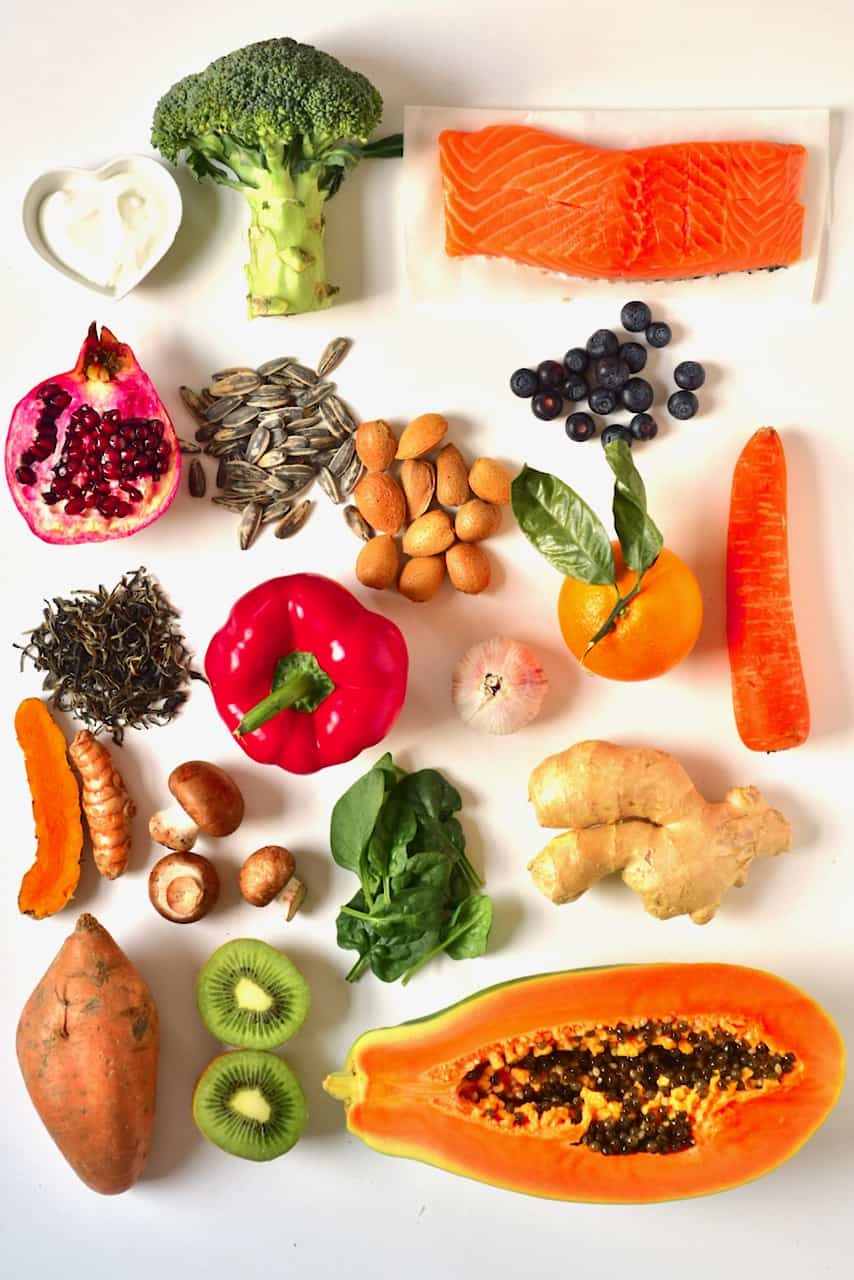
As tempting as it might be just to grab a multivitamin or Vitamin C tablet and hope all goes well, the best best way to get all your nutrients and immune-boosting properties is through diet and smart food choices. For thousands of years, people have turned to natural foods and ingredients to aid and cure a wide variety of ailments. Even now, scientific evidence for many ingredients shows how certain ingredients and foods can boost our immune system in a variety of ways.
This is particularly important during the winter months and when bugs are making their way around. This is why I’ve pulled together this list of my top 20 favorite immune-boosting foods. The list also includes some of their health benefits and ways to incorporate them into your diet. I’ve even included some simple homemade recipes, for good measure, including simple DIY’s, cold dishes, and easy dishes to cook.
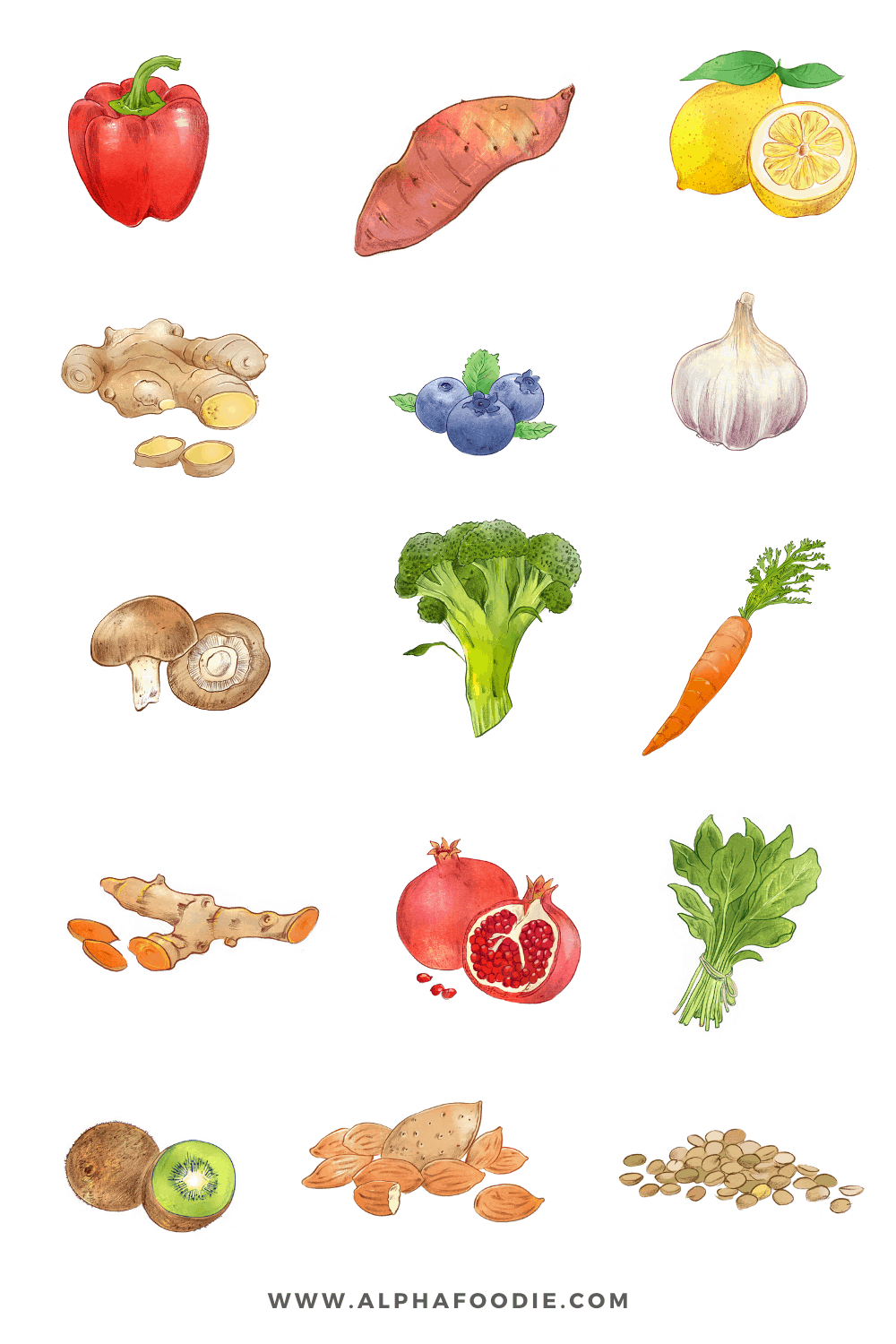
Throughout cold and flu season, one of the best things you can do is to focus on your health. You can boost your immune system by eating a healthy selection of fruits, vegetables, and immune-boosting foods (alongside plenty of sleep!). So to help you on your way, here is a list that includes 20 immune-boosting foods. I include as well as easy things to cook and prepare, using these ingredients (you may even find some healthy freezer meals to store for long periods).
Want to save this recipe?
Table of Contents
The Immune-Boosting Foods List
1. Turmeric
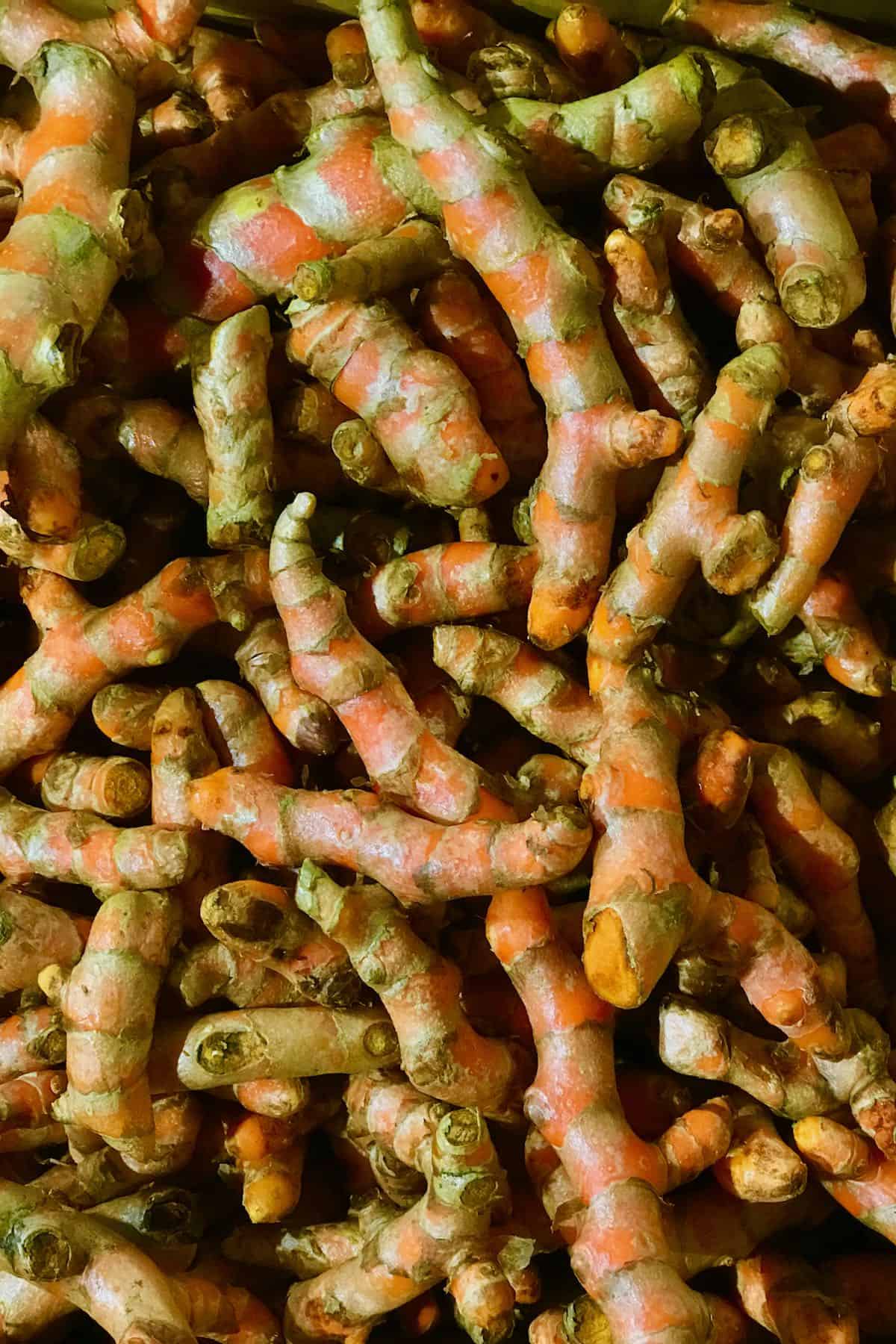
Turmeric has been used as a natural remedy for longer than I can even imagine and is perfect for adding to your diet during the winter months when you want a much-needed immunity boost. The root naturally boosts the modulation of the immune system and has a list of health benefits a mile long.
These include: increasing the antioxidant capacity of the body, aiding the reversal of the heart disease process, having anti-inflammatory properties, and even boosting brain health.
It’s also fairly easy to add to your diet – especially since most of us have the spice in our store cupboard, even if we don’t have fresh turmeric (and it’s fine to use either!). Check my list of 30+ recipes with turmeric here.

How to add turmeric to your diet:
Turmeric can easily be added to a variety of dishes, just like any spice – as well as be included in warm drinks including teas and lattes. However, there are some wonderful immune-boosting turmeric recipes that focus on this golden ingredient, too. For Example:
- Ginger Turmeric Immune-Boosting Energy Shots (juicer recipe) or Turmeric-ginger Energy Shots (blender version) – perfect health shot to start the day right.
- 5-ingredient Golden Milk – A delicious, warm milk recipe that’s the perfect way to wind down at the end of the day
- Golden Turmeric Energy Balls (No-bake) – A simple snack, filled with healthy nuts, coconut, turmeric, and dried fruit.
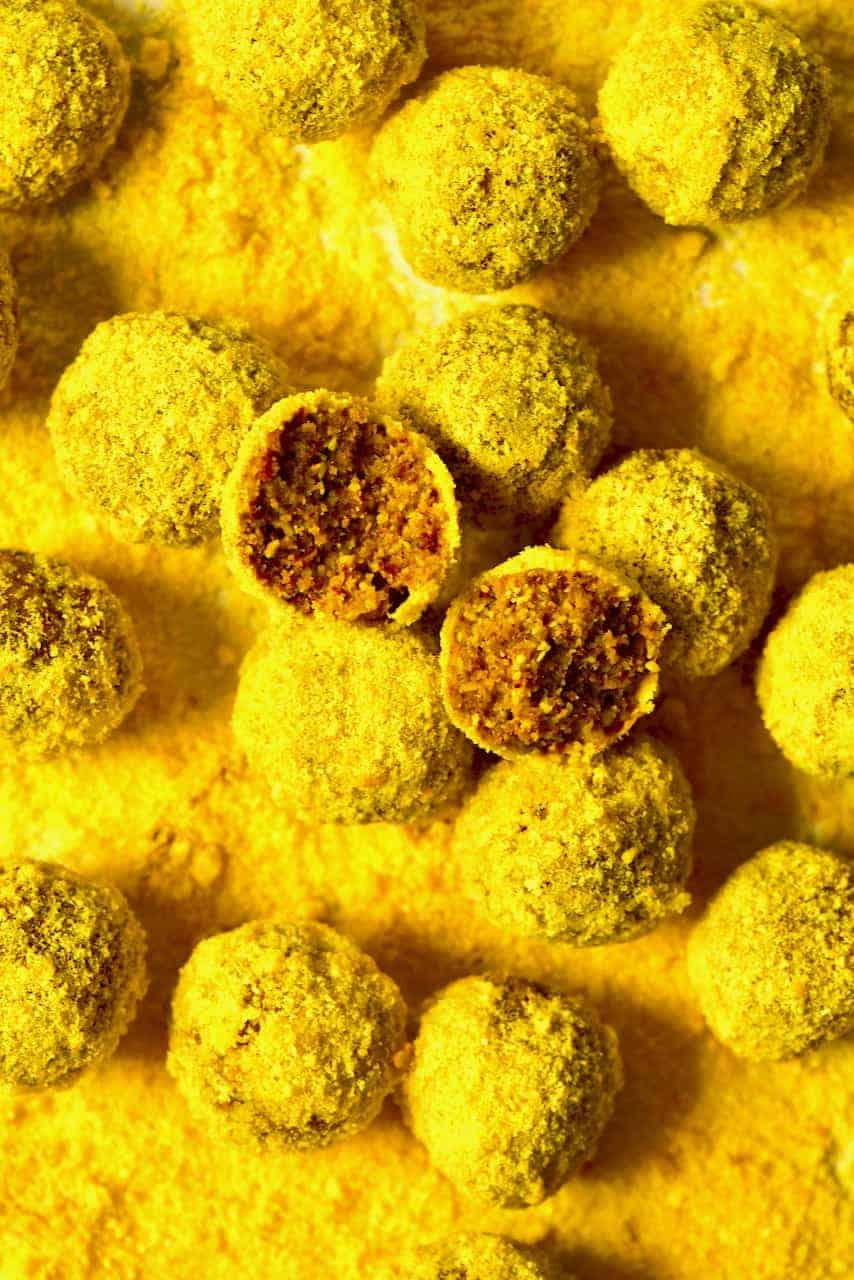
- Turmeric and Ginger Spiced Pumpkin Soup – Swap out the pumpkin for butternut squash or whatever squash you have available, and you get double immune-boosting power with ginger AND turmeric.
- Fully loaded pineapple & turmeric smoothie bowl – Turmeric is easy to add to a variety of smoothie bowls, as it doesn’t affect the flavor too much. Just make sure to add a pinch of pepper to help absorb the curcumin.
- You can also make a simple turmeric hummus (with a pinch of pepper, of course) to serve with veggies and crackers.
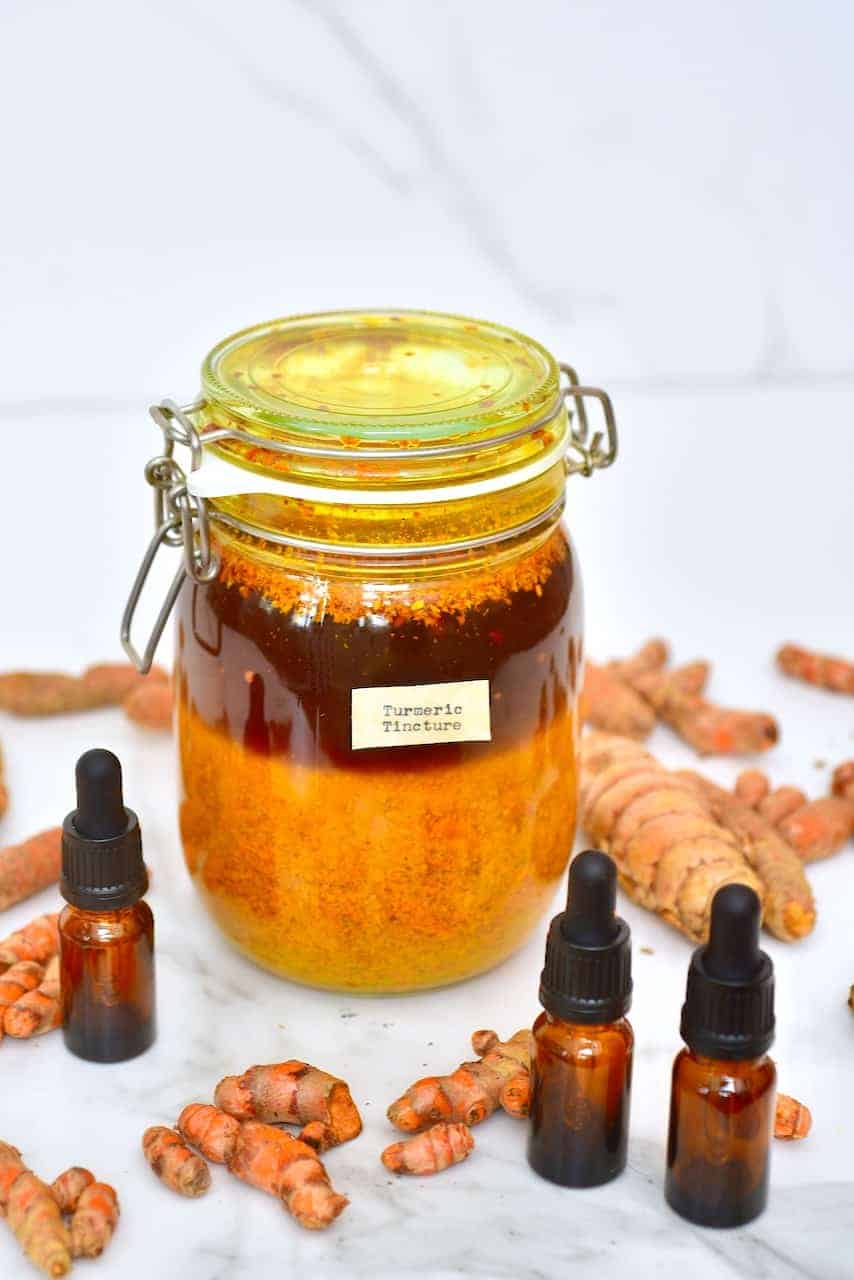
I also have a homemade DIY Turmeric Tincture – which is a wonderful, concentrated dose of turmeric to add to your health regime. However, it does take a few weeks to steep, before it’s ready. I also show you how to make Turmeric Powder, which allows you to keep and use your turmeric for very long.
2. Natural yogurt

Whether you’re using store-bought or making your own (which is surprisingly easy), yogurt is a wonderful ingredient to eat more of when you want to eat more immune-boosting foods. Filled with healthy probiotics, yogurt is brilliant for gut health, which in turn will be better for your overall health.
Not to mention that yogurt also contains protein and a few vitamins – and is ridiculously simple to add to your diet.
Note* You can also use a dairy-free yogurt such as coconut yogurt or almond yogurt, which will still have probiotics. However, the nutritional values will differ.
How To Add Yogurt To Your Diet:
There are absolutely tons of ways to incorporate yogurt into some yummy meals and recipes – whether it’s as a healthy snack, for breakfast, a snack, or dessert. For Example:
- For breakfast you have a few options including adding some yogurt to your favorite smoothie bowl, adding it into your overnight oats recipes, or even a simple yogurt parfait with fresh fruits and some granola.
- As a snack, you have plenty of sweet and savory options – from adding to salad dressings, using yogurt for dips such as this Spinach yogurt Dip (Borani).
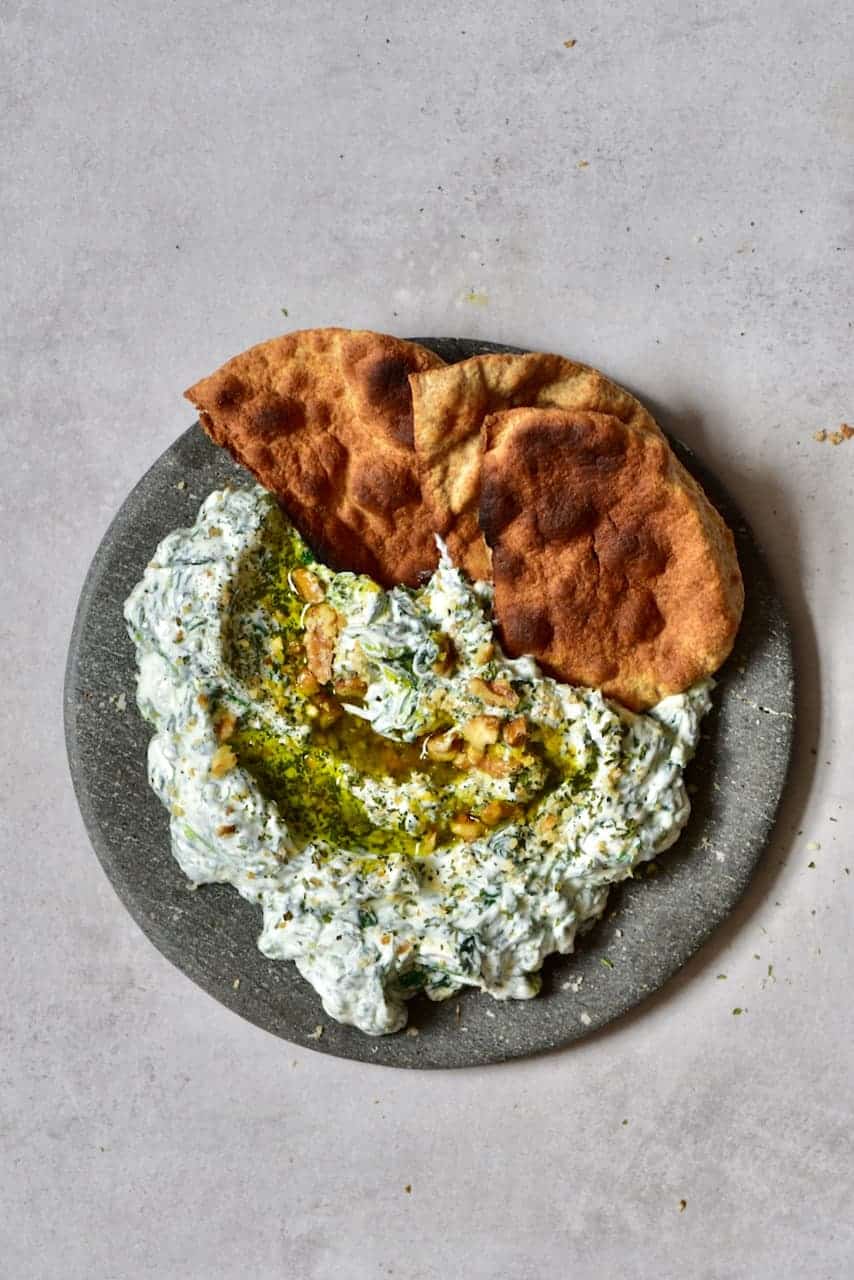
- You can also make sweet snack options like these mini Yogurt Granola Cups.

- For dessert, there are a few options. Once again – there’s nothing wrong with a yogurt parfait – but you could also make some delicious frozen yogurt lollies, frozen yogurt ‘bark’, or homemade fro-yo.

3. Almonds
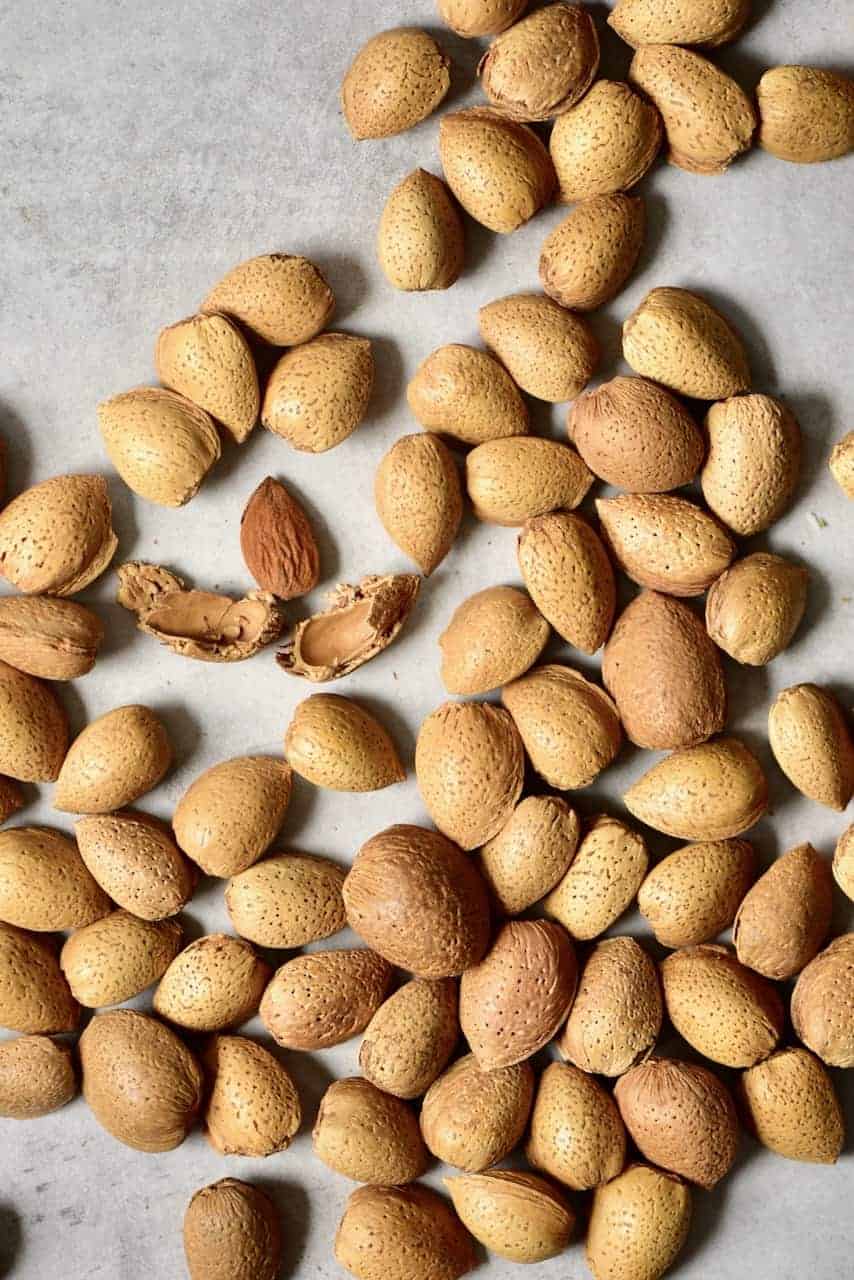
Studies have shown that almonds, particularly the skins, may have immune-modulating properties and improve immune health. They are also high in Vitamin E, which is antioxidant and crucial for a lot of the enzymes that are a part of your immune system. Not to mention the tonnes of other health benefits (evidence-based) associated with almonds.
These easily make them one of my favorite non-vegetable/fruit immune-boosting foods.
How To Include Almonds Into Your Diet:
Almonds are a great high-protein snack too – but can also be included in a variety of recipes.
- As a topping: almonds can be added into breakfast bowls (either plain or as part of healthy granola), chopped up to top smoothies, porridge, overnight oats, salads, and more.
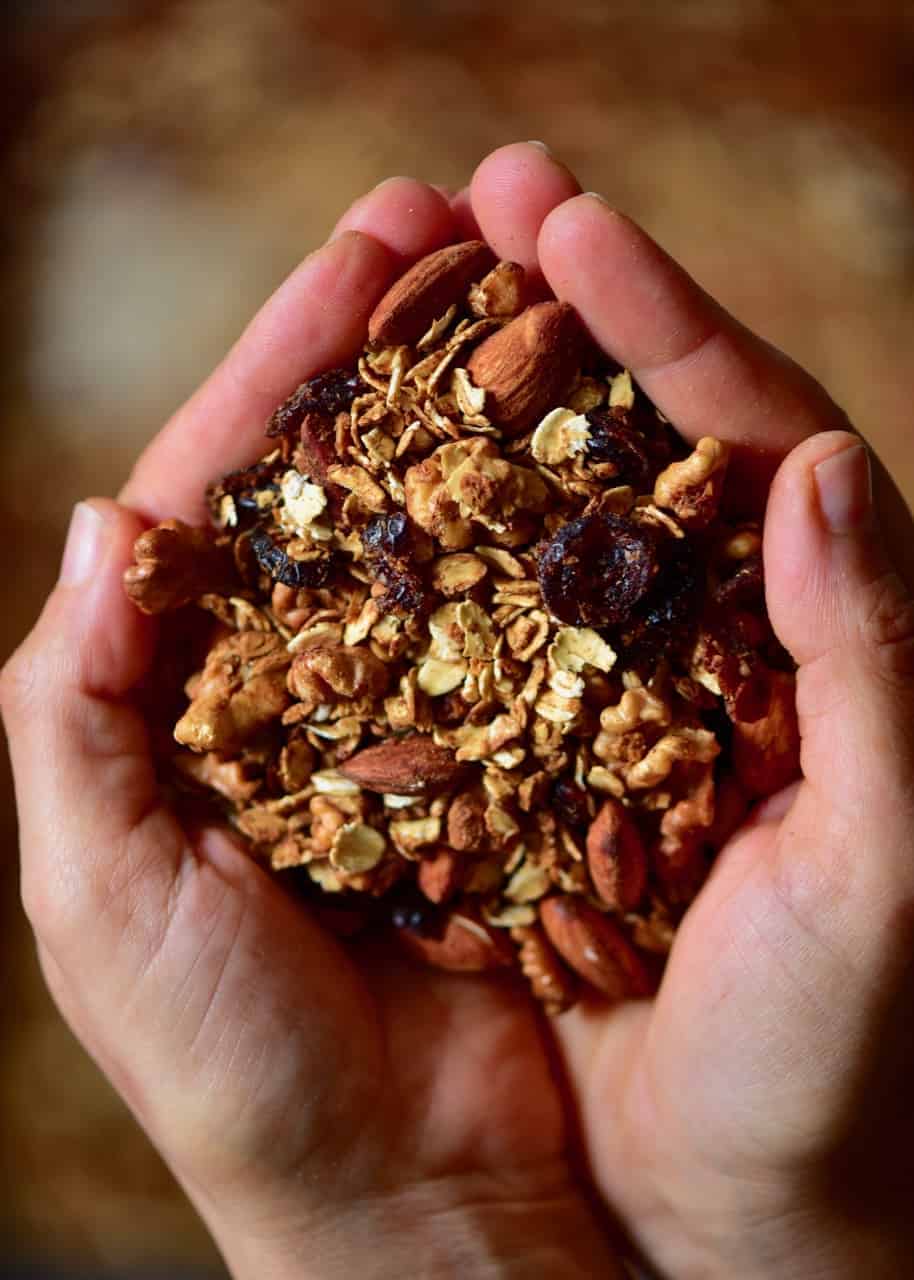
- Healthy Cacao & Almond Protein Balls are a great healthy, high-protein snack that you can meal-prep and eat throughout the week.
- Whip up a batch of homemade almond butter; then you can add this to smoothies, yogurt bowls, or have as a spread on toast.
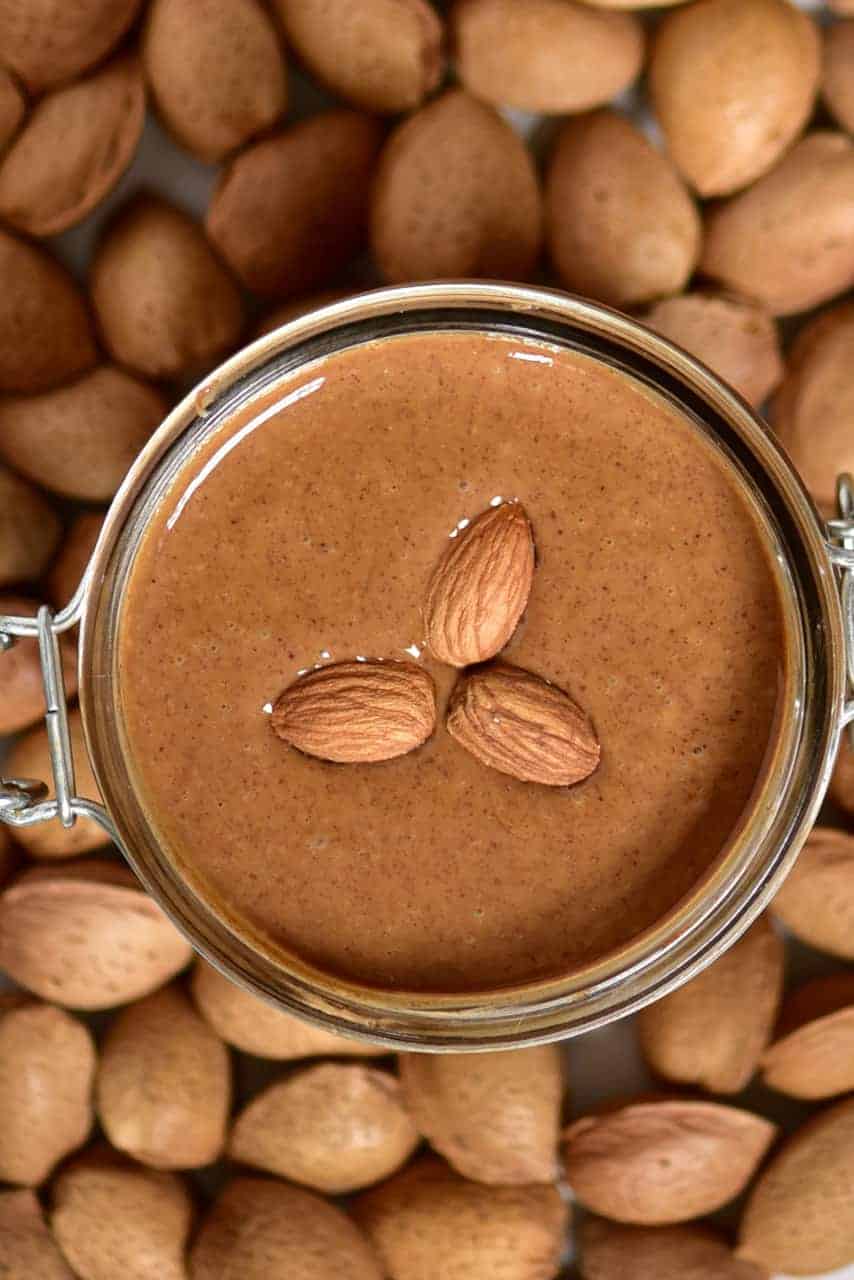
- You can also use almonds as part of a healthy raw, vegan tart base such as with this Vegan Earl Grey Blueberry Tart.
- And of course, you can even make some Dairy-Free Almond Yogurt.
4. Carrots
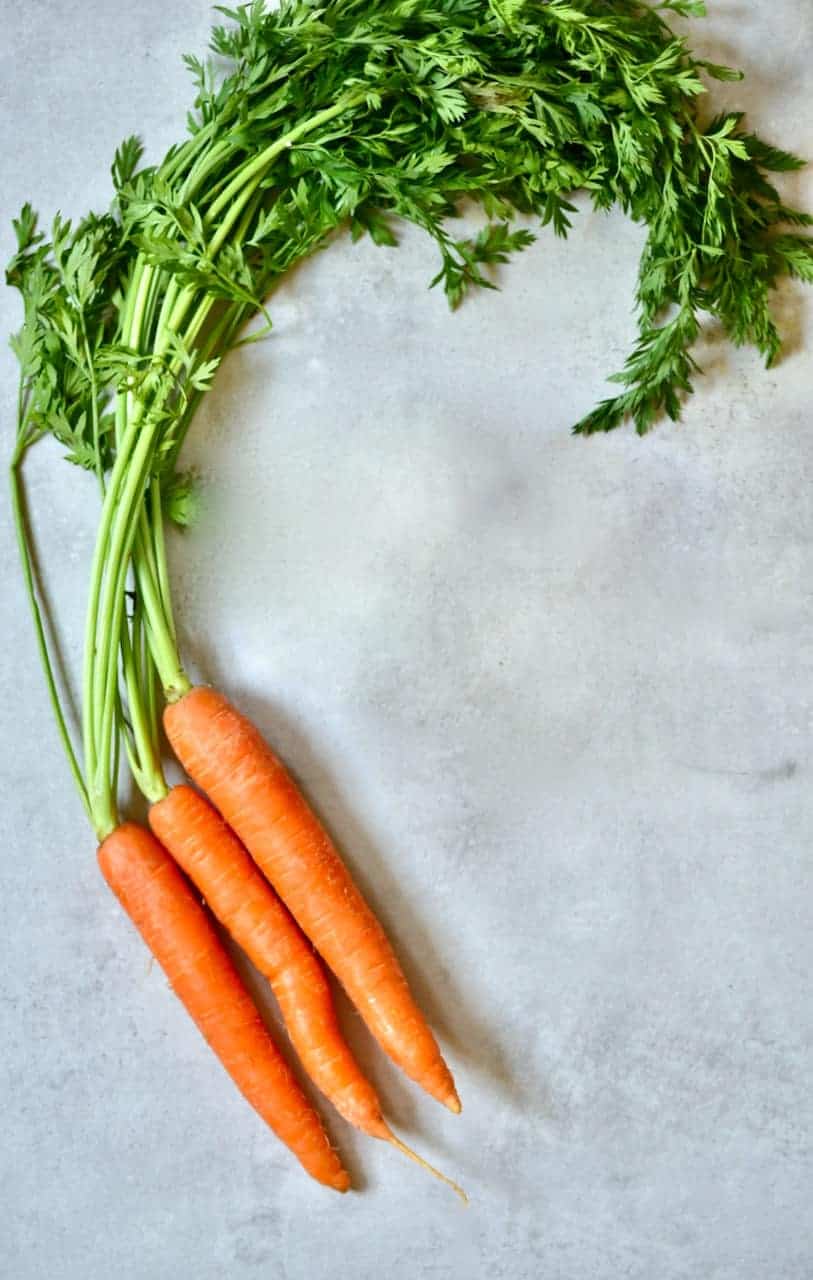
The humble carrot is a wonderful ingredient for a variety of health benefits – containing lots of vitamins, minerals, and fiber. Carrots contain antioxidants, which help fight harmful free radicals and inflammation. They are also a good source of vitamin C, which is excellent for providing a healthy immune boost.
Plus, carrots are an excellent source of beta carotene, which supports the mucus membrane, stopping bacteria from entering the bloodstream. Carrots are also incredibly wallet-friendly and super versatile.
How to Include Carrots In Your Diet:
- A classic combo, but who doesn’t like to dip carrots in some delicious homemade hummus? In fact, I like to dip carrot sticks into a whole variety of dips.
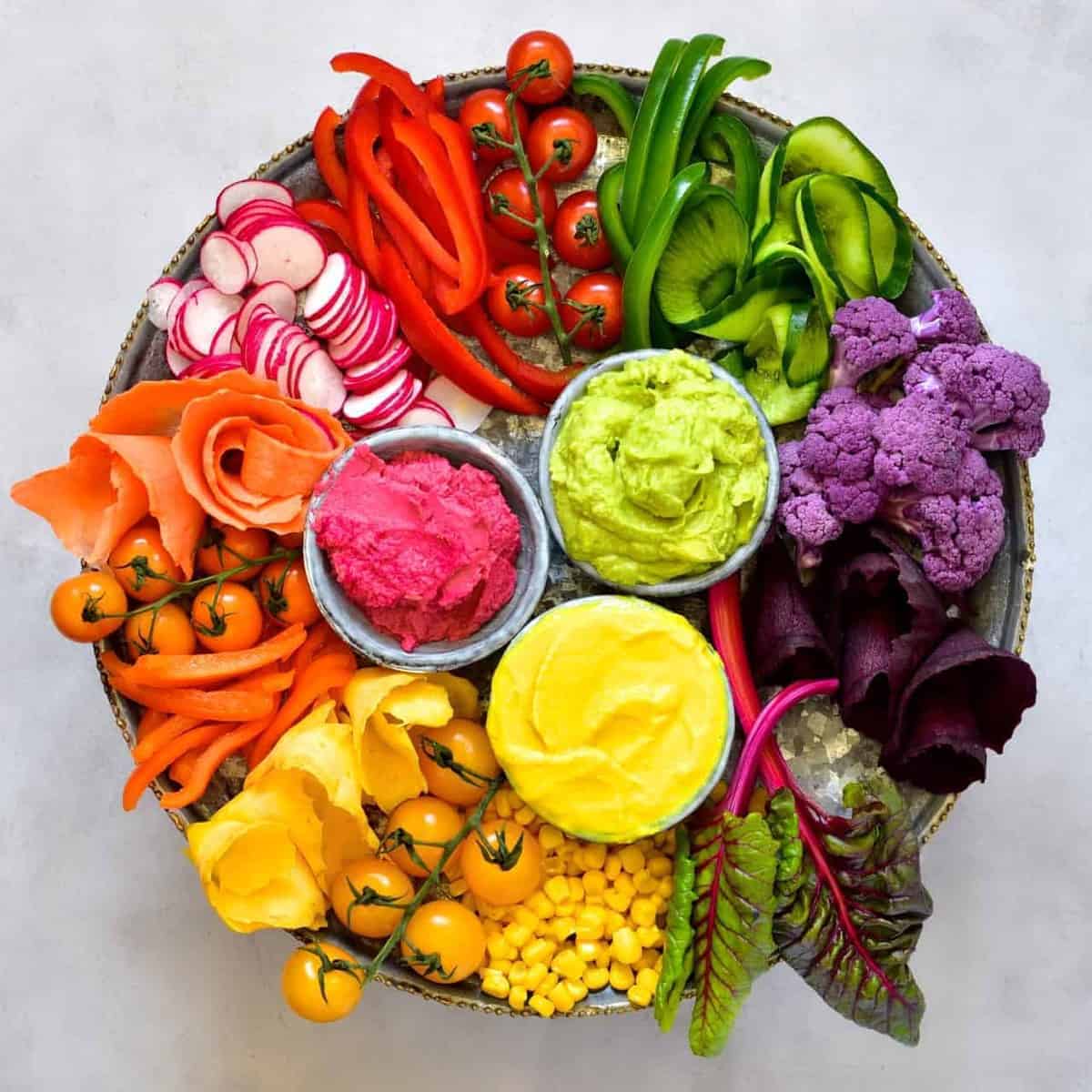
- Use a grater or spiraliser to add carrot to salads and pasta dishes, like this Easy Vegan Béchamel Pasta Bake or even this BBQ pulled jackfruit Japanese Donburi bowl.
- Carrots are incredibly easy to add to a whole variety of pantry meals – curries, chili, stew (like this chickpea stew), and soup.
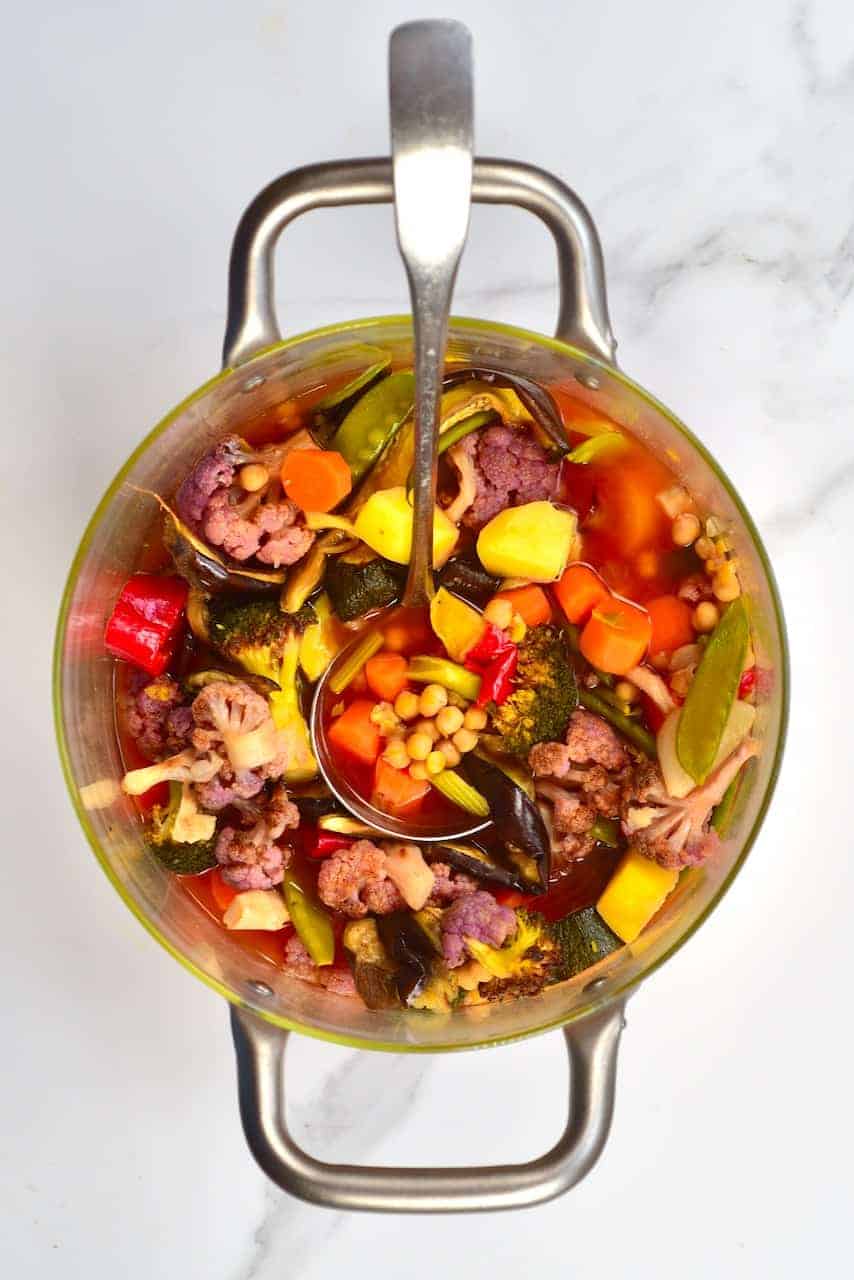
- For something a little bit different, you might like these Vegetarian Stuffed Carrots (Tree Logs).
- If you’re more of a sweet tooth, then how about adding some grated carrot into a carrot cake or a carrot cake-inspired overnight oats.
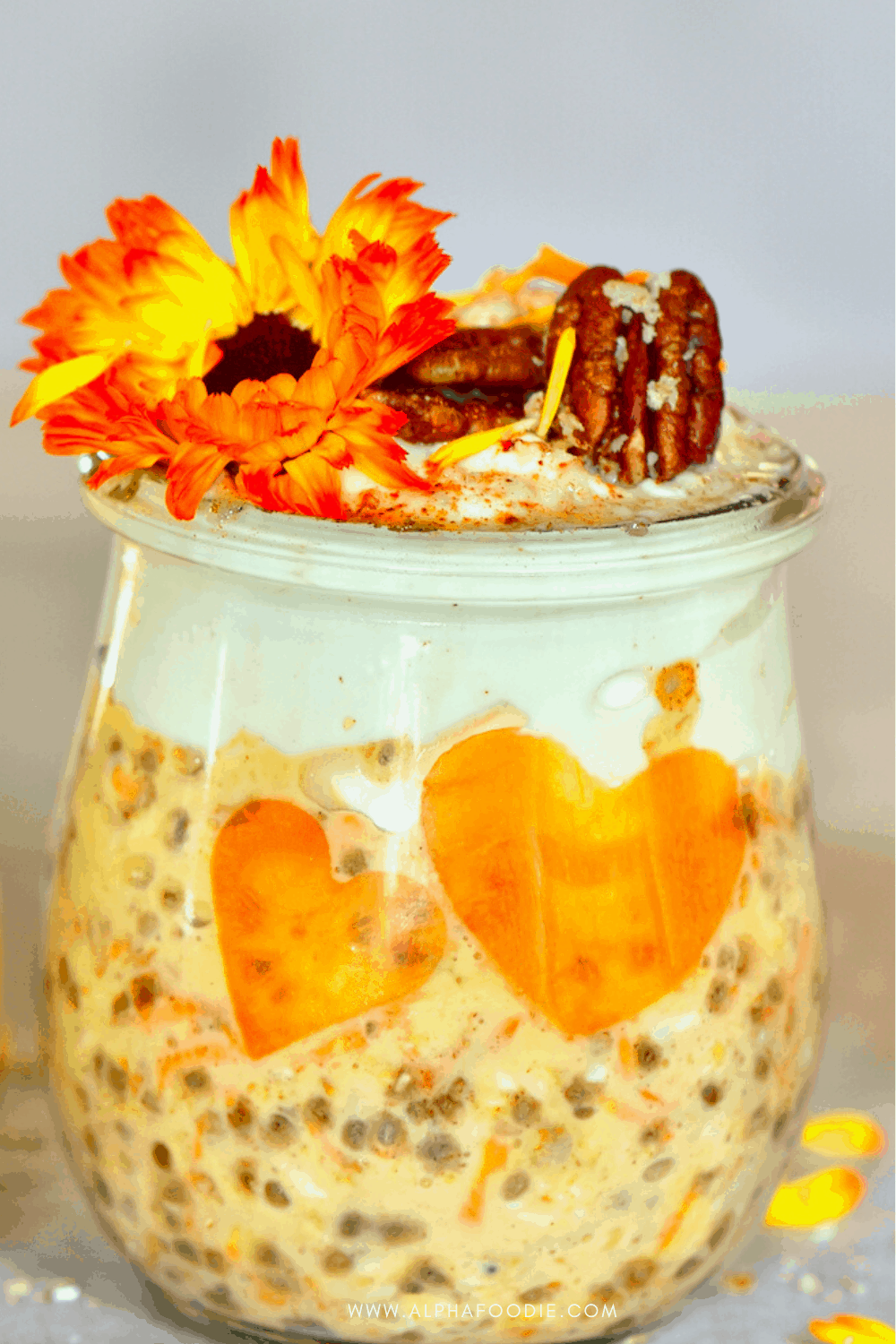
- If you have a juicer, then carrot juice is also incredibly healthy for you. And, if not, try chucking some carrot into your smoothie to take advantage of the fiber.
5. Sweet potatoes

Sweet potatoes are a rich source of both beta-carotene as well as vitamin C, which help boost your immune system. A single medium sweet potato even contains 120% of your daily Vitamin A. The combination of Vitamin A & C is great for our skin, bodies, and immune system.
Not to mention that sweet potatoes are a delicious and fantastic food to have during the summer or winter months.
How to Add Sweet Potato to Your Diet:
- Sweet potato can be used in place of your traditional spuds, the majority of the time: mashed potato, baked potato, fries (following the same method as for ordinary spuds), etc.
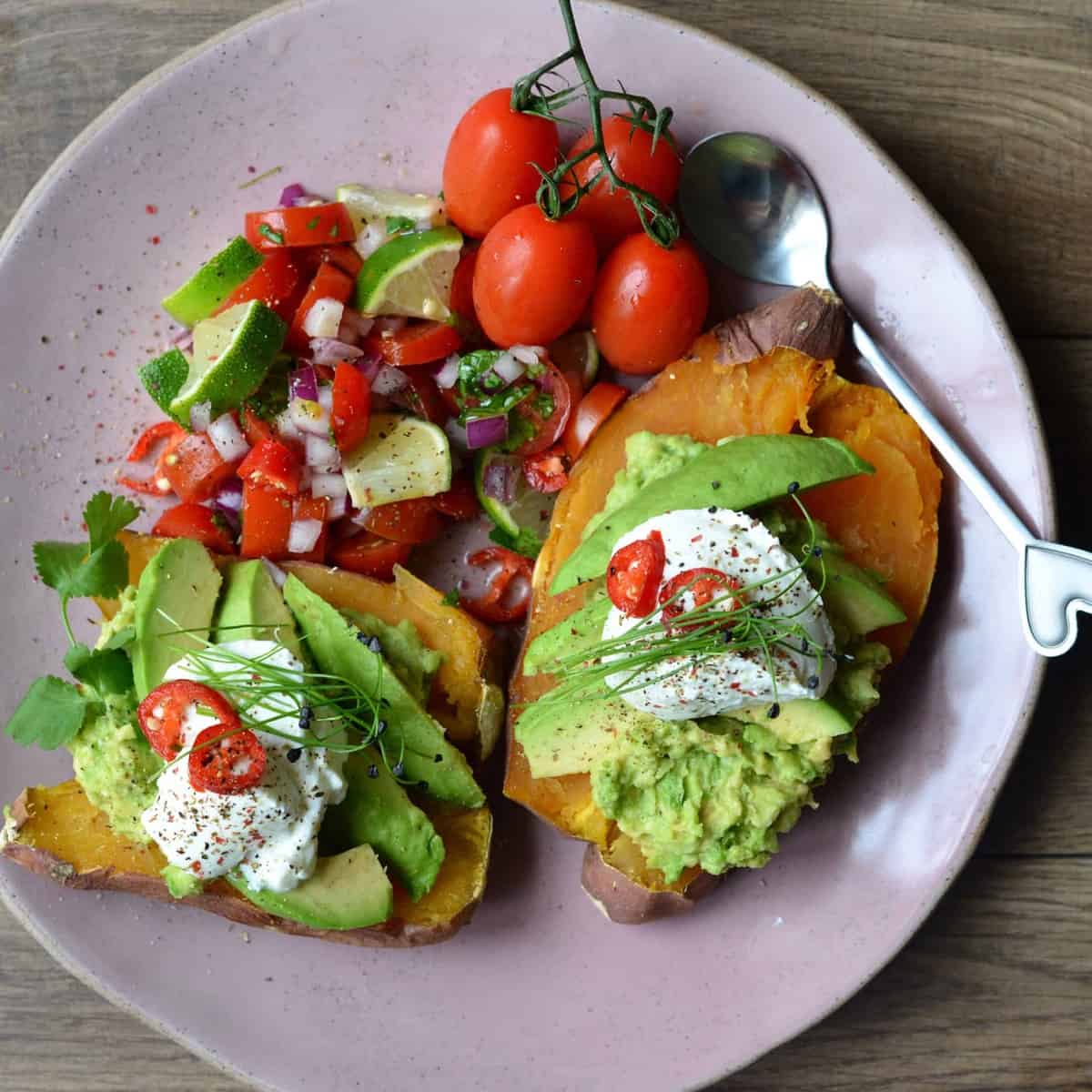
- They’re also great to add to a whole variety of store-cupboard dishes – curries, chilies, and soups. Plus, I love the sweet potato filling for these Rainbow Tacos: 4-ways.
- If you want to treat yourself, then how about making a cheeky sweet potato-based pizza.

- Sweet potatoes are also great to cube, roast, and add to dishes lik, Mexican Inspired Salad or Sweet Potato Breakfast Hash.

6. Red Peppers
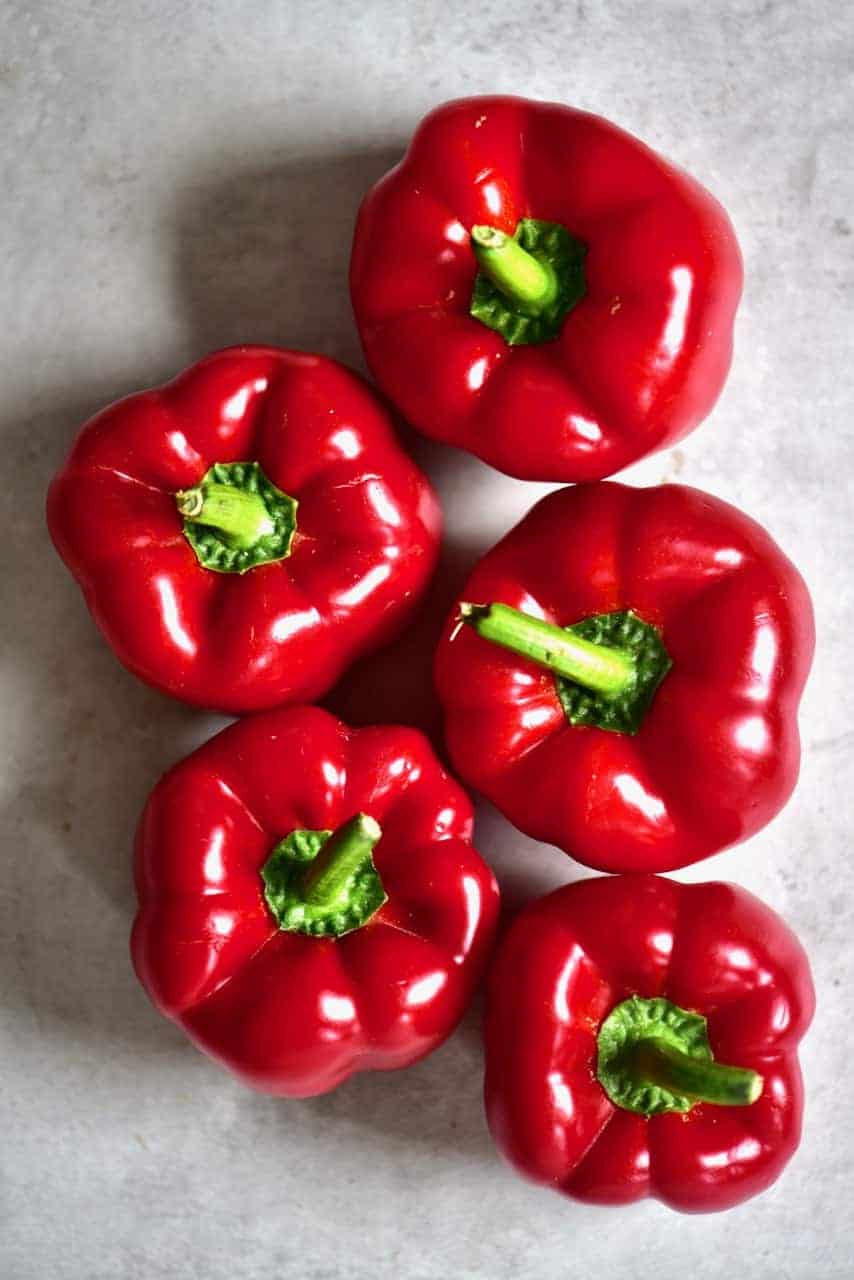
Red peppers are another excellent source of Vitamin C, with a half-cup portion containing 150% of your daily recommended vitamin C amounts (twice as much as citrus!). They also have reasonable amounts of Vitamin E and carotenoids that provide great anti-inflammatory and immune-boosting benefits. Not to mention being good for your skin and eyes.
You’ll probably have already noticed that a lot of the options on this list contain high levels of Vitamin C – that’s because this is an excellent antioxidant.
How to Add Red Pepper to Your Diet:
Red peppers are an incredibly versatile ingredient, with several uses:
- Red pepper is delicious within a variety of soup and stew recipes too – whether they are smooth veg or chunky, with beans, or in other warm dishes like Shakshuka or Roasted Red Pepper Pasta.
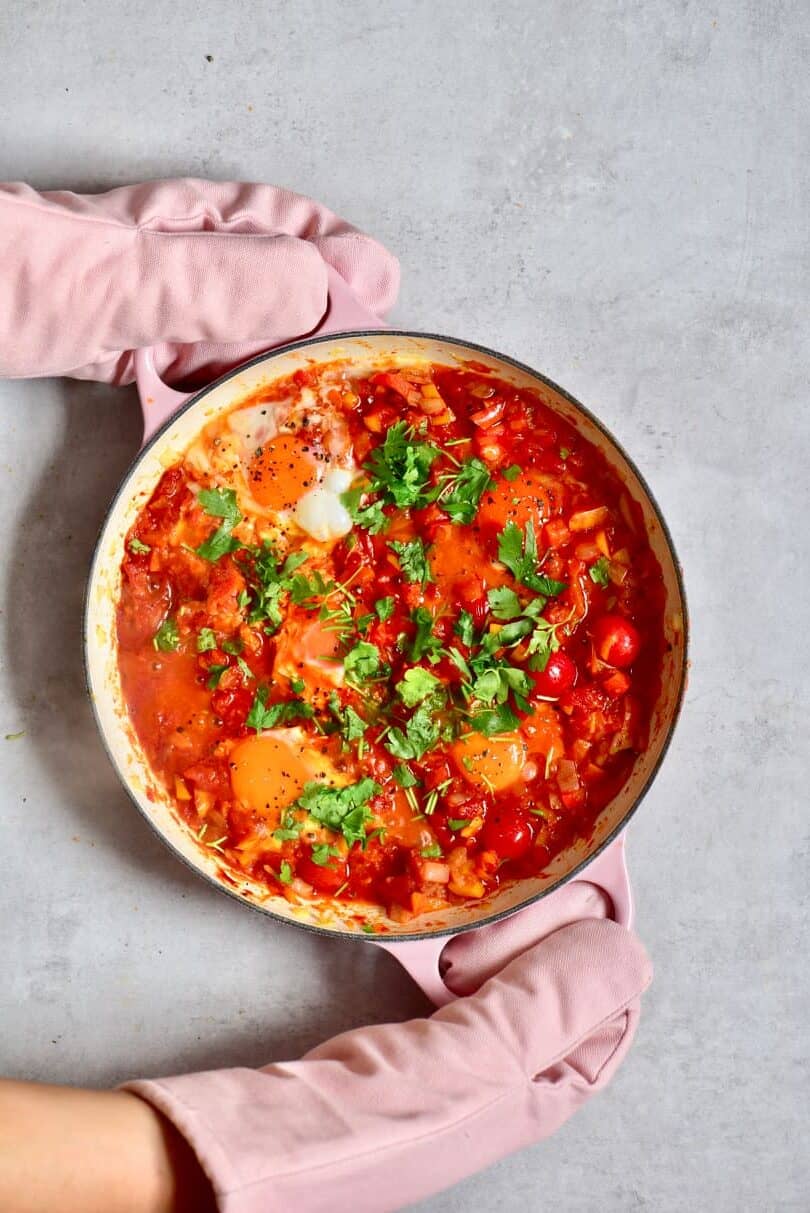
- Peppers are a wonderful ingredient within stir-fries, fajita wraps, and a whole host of Mexican-inspired recipes.
- Stuffed peppers have to be mentioned here – whether it’s with rice, other grains, or even a protein filling, this is a healthy, versatile dish.
- Not to mention that red pepper adds fantastic flavor to dips and sauces – like a muhammara baked red pepper dip, roasted red pepper hummus, or eggplant and red pepper dip (ajvar).
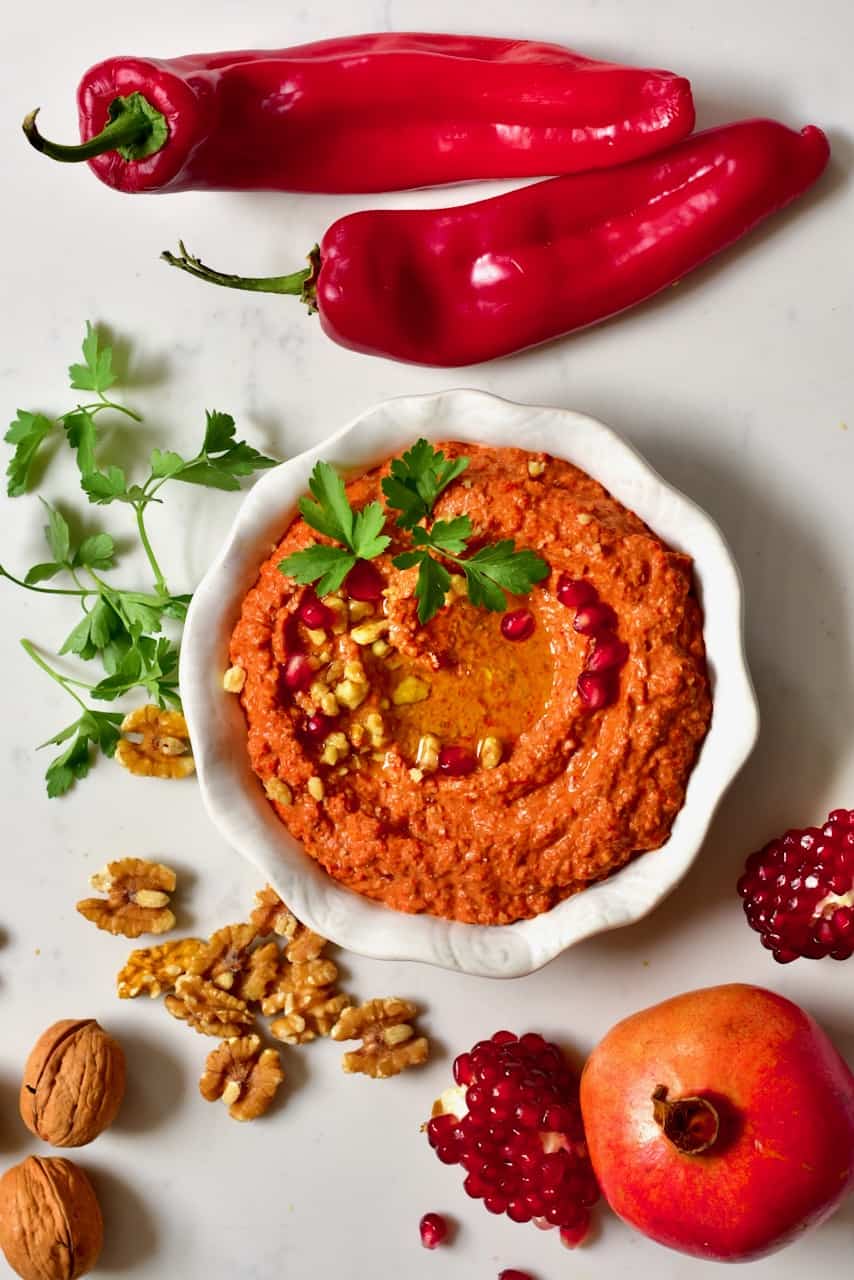
- Or just eat them raw within a salad, or with homemade hummus. Or within this Rainbow cucumber sushi.
7. Pomegranate
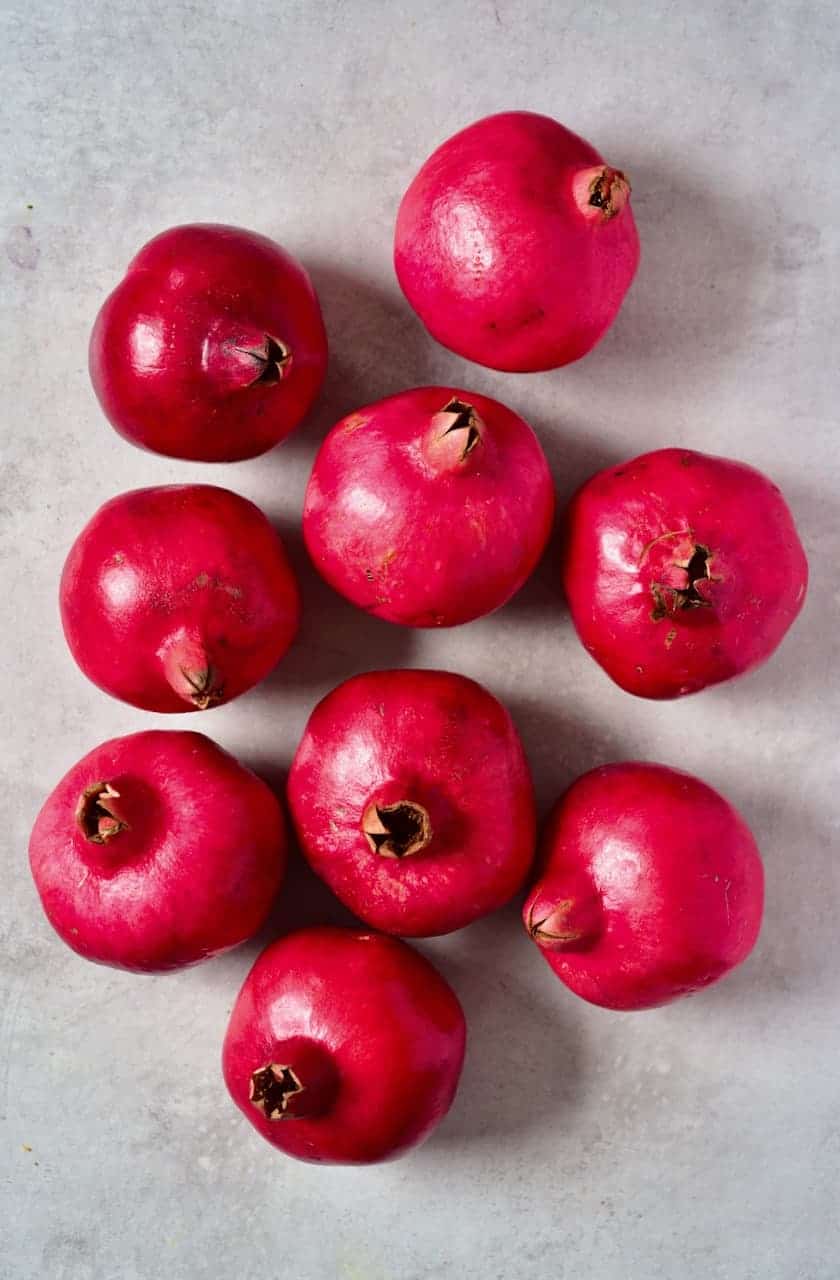
Only one cup of pomegranate seeds contains 36% of your daily recommended Vitamin K, and 30% of your Vitamin C (which we know is a must-have during cold and flu season!). It also contains high levels of potassium, 7g fiber, and 3g protein.
More than that, though, pomegranate contains potent plant compounds: punicalagins and punicic acid, which have a variety of medicinal properties.
Punicalagin, for example, is a strong antioxidant found in pomegranate – over three times that found in green tea. These have anti-inflammatory properties and even reduce the risk of certain cancers. Punicic acid meanwhile is a fatty acid found in the seeds and can lower the risk of heart disease, reducing ‘bad’ LDL cholesterol.
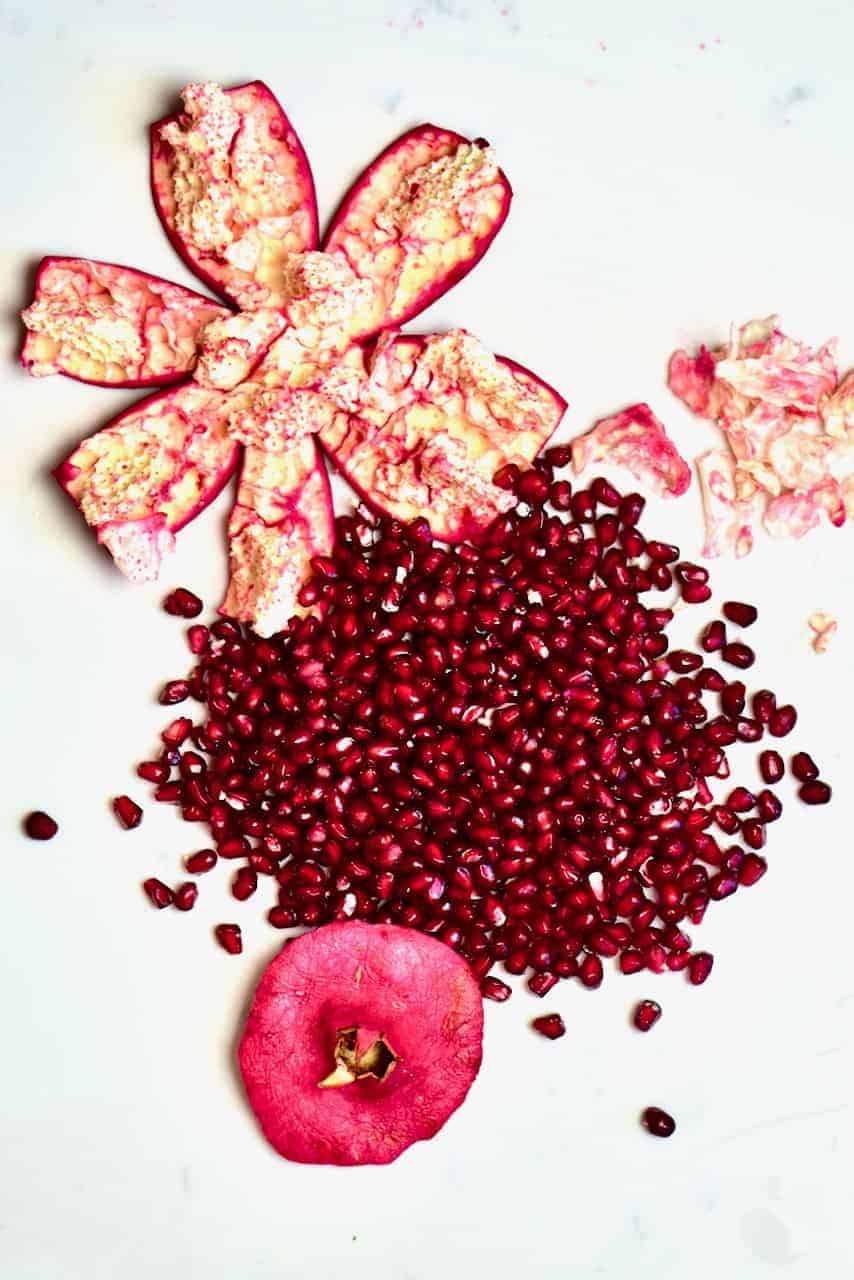
Most importantly though, the compounds within pomegranate have been shown to fight infections (both bacterial and fungal), and studies have shown that they can inhibit the growth of harmful bacteria, with antiviral properties against the flu and other viruses. There has also been evidence to show that pomegranate extracts promote gut health and beneficial gut bacteria – which in turn boosts the immune system.
How To Add Pomegranate To Your Diet:
My favorite way to enjoy pomegranate is by sprinkling pomegranate sees liberally over everything. Okay, not everything – but certainly a lot of dishes.
- I particularly love adding pomegranate to top smoothie bowls, fruit salads, and yogurt parfaits.
- Pomegranate seeds are a staple in Lebanese and middle-eastern food, perfect for sprinkling over this Simple Traditional Lebanese Fattoush Salad, Vegan ‘Moutabal’ Aubergine Dip, and/or Healthy Vegetarian Aubergine salad.
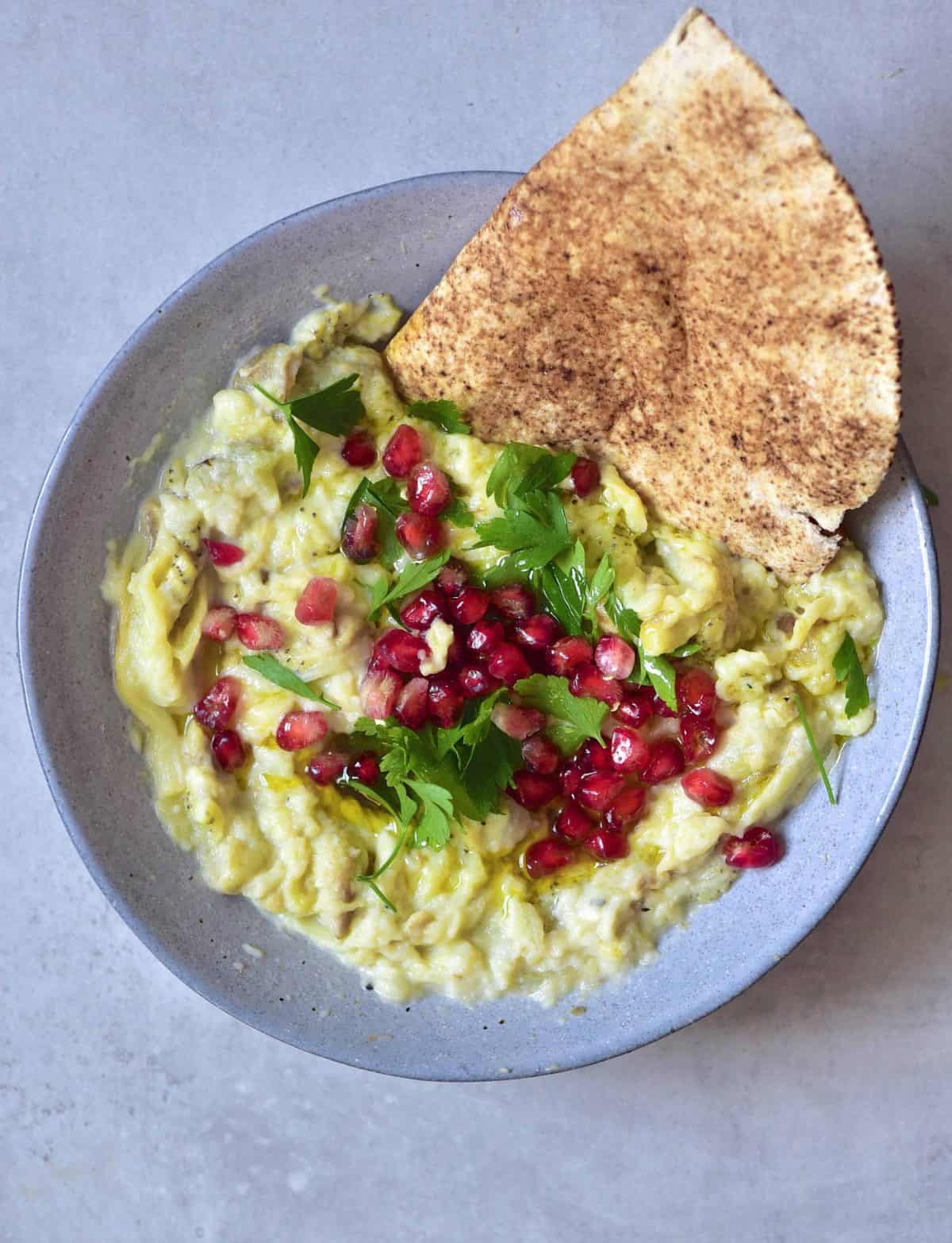
- They’re also great for sprinkling over these Simple Charred Eggplant Salad Bowls or Pumpkin Quinoa and kale salad.
- Pomegranate juice is also an excellent option for getting in all the pomegranate vitamins and nutrients. Or possibly even this Homemade Pomegranate kombucha – which combines pomegranate and the gut-friendly wonder that is kombucha.
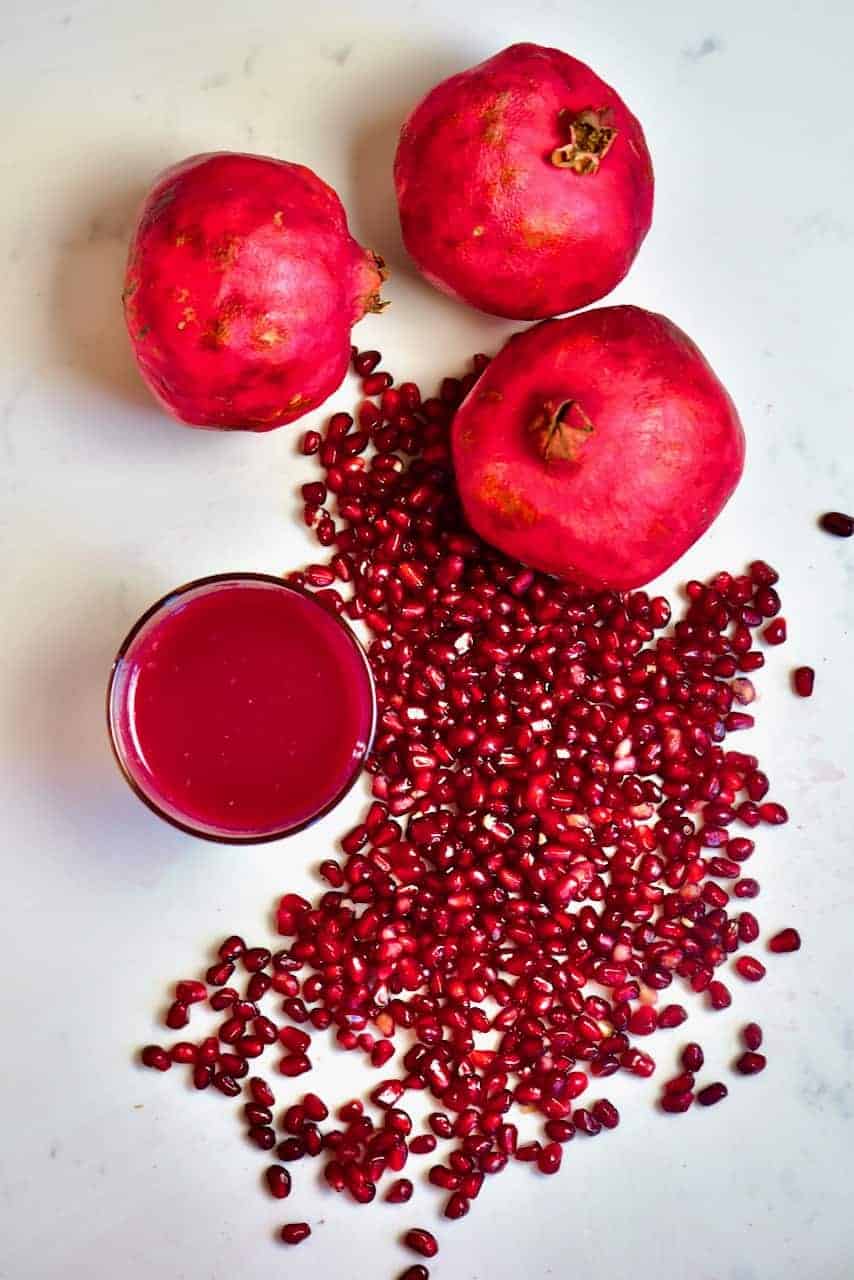
8. Garlic
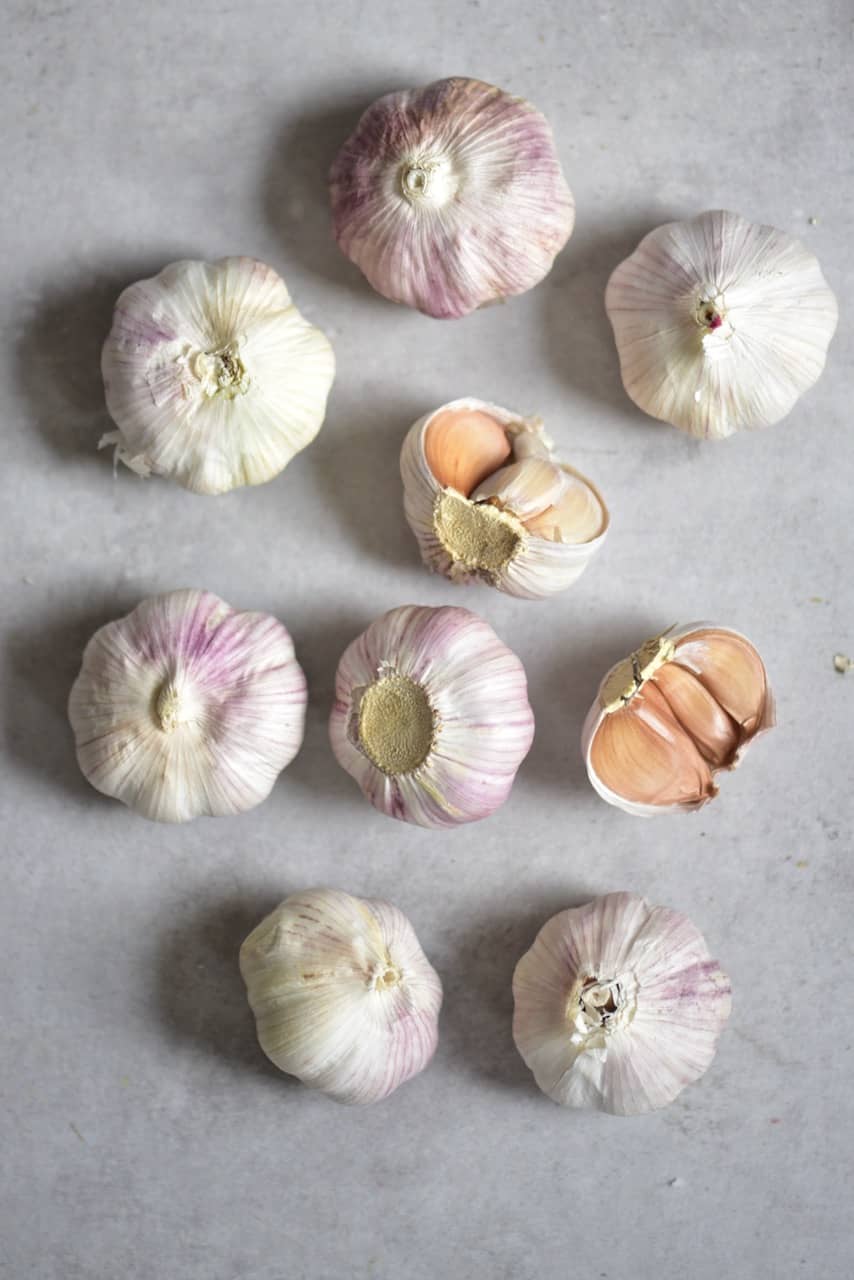
Garlic has been used to prevent colds and other illnesses for centuries. Not only is garlic a staple in cooking, for adding some much-appreciated flavor, but fresh garlic has antiviral, anti-fungal, and antibacterial properties too. Plus, garlic contains immune-boosting compounds (including allicin) and may even help lower blood pressure and slow down hardening of the arteries.
Some studies have shown that eating garlic could help to reduce the severity of symptoms as well as shorten the duration of the lurgy (much like vitamin C does).
However, the potent compounds found in garlic change depending on how it’s prepared/cooked, with a study showing that heating garlic for too long can deactivate the allicin (just 1 minute in a microwave, or 45 minutes in the oven). With this in mind there are a few top tips to making the most of your garlic:
Make sure to crush or slice your garlic before eating it (which will increase the allicin content), leave it to rest for 10 minutes before cooking. And, of course, the more garlic, the better – so don’t skimp out and try to have more than one clove per meal!
How To Add Garlic To Your Diet:
I love adding garlic to everything. If my meal needs a frying pan, then it’s probably got garlic in it. That goes for stir-fries, pasta dishes, noodles, soups, and more.
I think that you can never have too much garlic. Just chuck it in, and it makes anything better – for example, I’ve added it in these dishes:
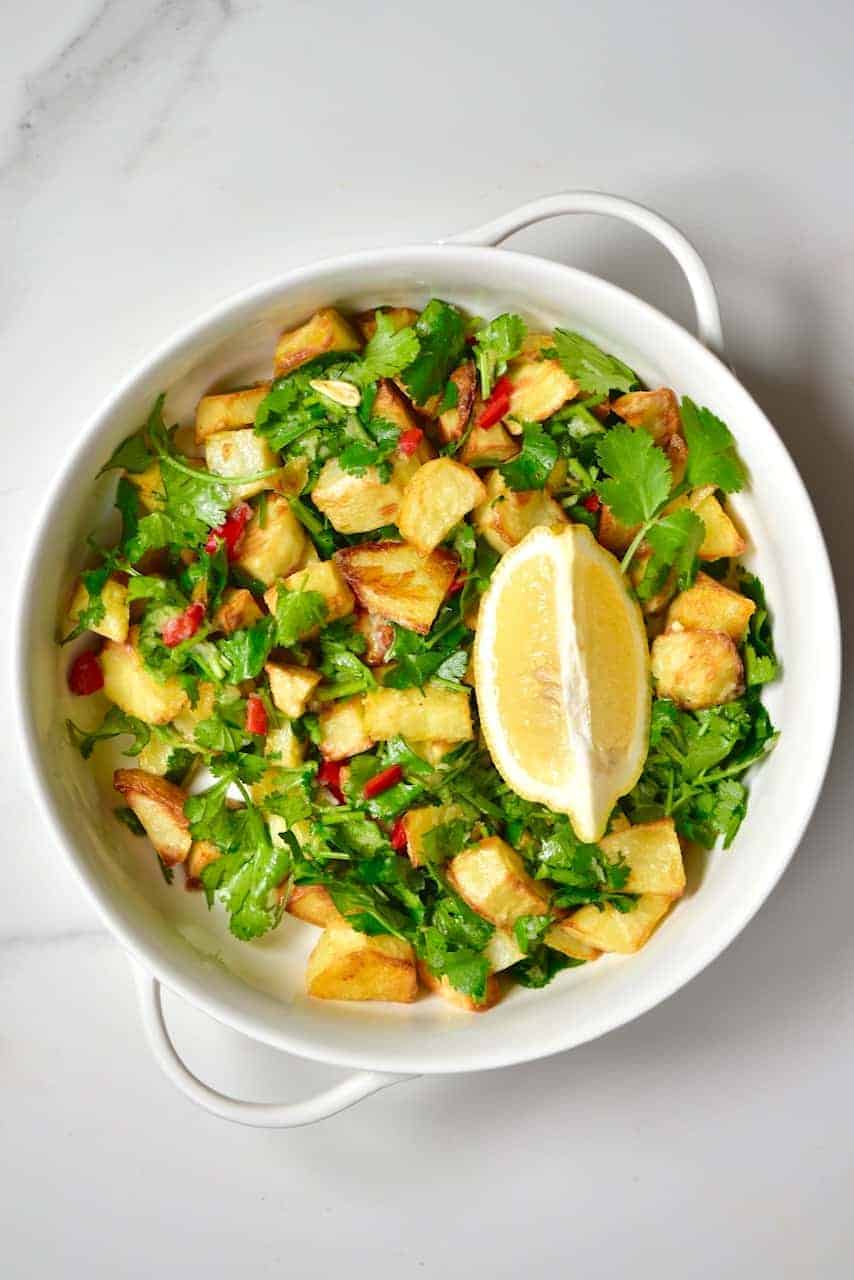
- Creamy Vegan Thai Green Curry
- Simple Spinach Yogurt Dip (Borani)
- Zoodles With Homemade pistachio Pesto
- Chinese Eggplant with Garlic Sauce (Eggplant Stir-Fry)
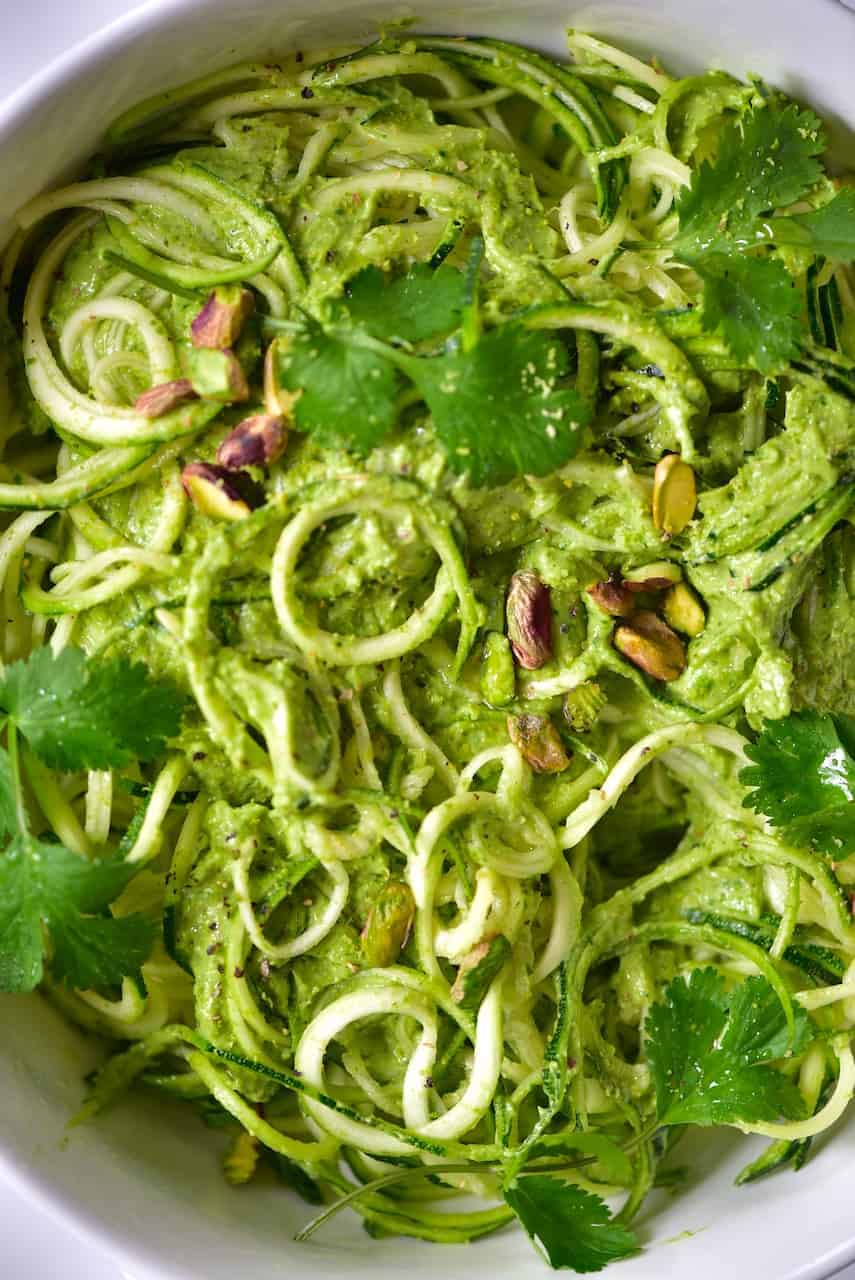
- You can even make a cheeky DIY garlic Homemade Herb Butter (Compound butter) or Croutons (Garlic Vegan Croutons)
- Other great DIYs with garlic include Garlic and Chili Infused Honey, Fermented Garlic Honey, Pickled Garlic (Plain and Spicy).
- There are also great ways to freeze garlic, so you always have some when needed, or make garlic paste.
- Some people love to add garlic to their guacamole too. Here’s a recipe for a Simple Fresh Authentic Guacamole (Mexican).
- And of course, one of my all-time favorites – Lebanese Garlic Sauce (Toum).
9. Blueberries
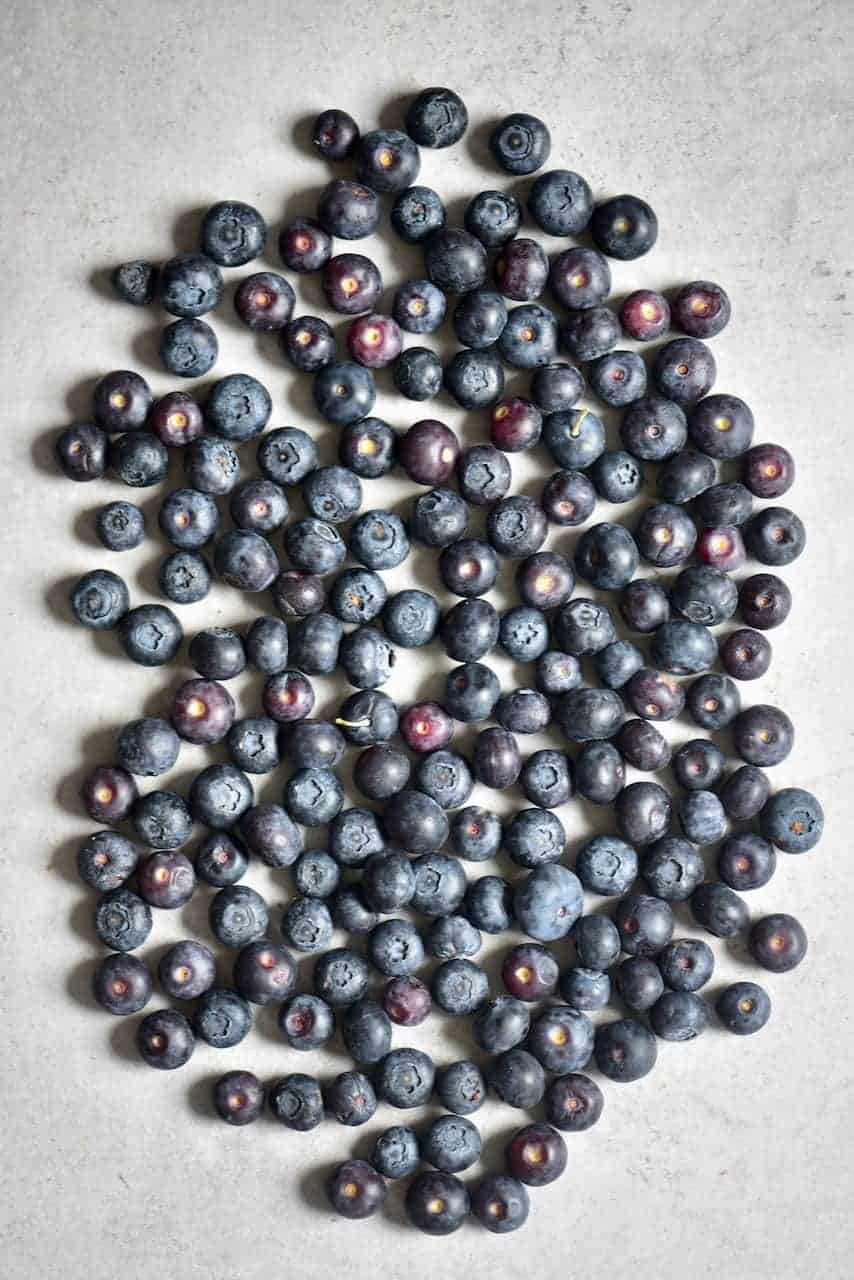
Blueberries have been touted as a “superfood” for a long time, and it’s no surprise why. They are one of the most nutrient-dense berries, with a 1 cup serving containing 24% of your daily recommended Vitamin C, 36% of your daily Vitamin K, and 25% of your daily manganese – among smaller amounts of various other nutrients including vitamin A, potassium and dietary fiber.
They are also filled with lots of antioxidant power (the highest of all popular fruits and veg). Among a whole list of benefits, blueberries can also help to prevent and treat colds by reducing cell damage and boosting the immune system.
Blueberries also have anti-cancerous properties, can reduce oxidation of ‘bad’ LDL cholesterol, lower blood pressure, and even improve brain function – just to name a few other benefits.
How To Add Blueberries To Your Diet:
Let’s get one thing straight first of all – there’s nothing wrong with just eating blueberries straight from the fridge (or freezer!). However, if you want some inspiration on how to add blueberries to more meals, then:
- Blueberries are very at home within a breakfast bowl with yogurt, or oatmeal/porridge – including this Healthy Blueberry Overnight Oats
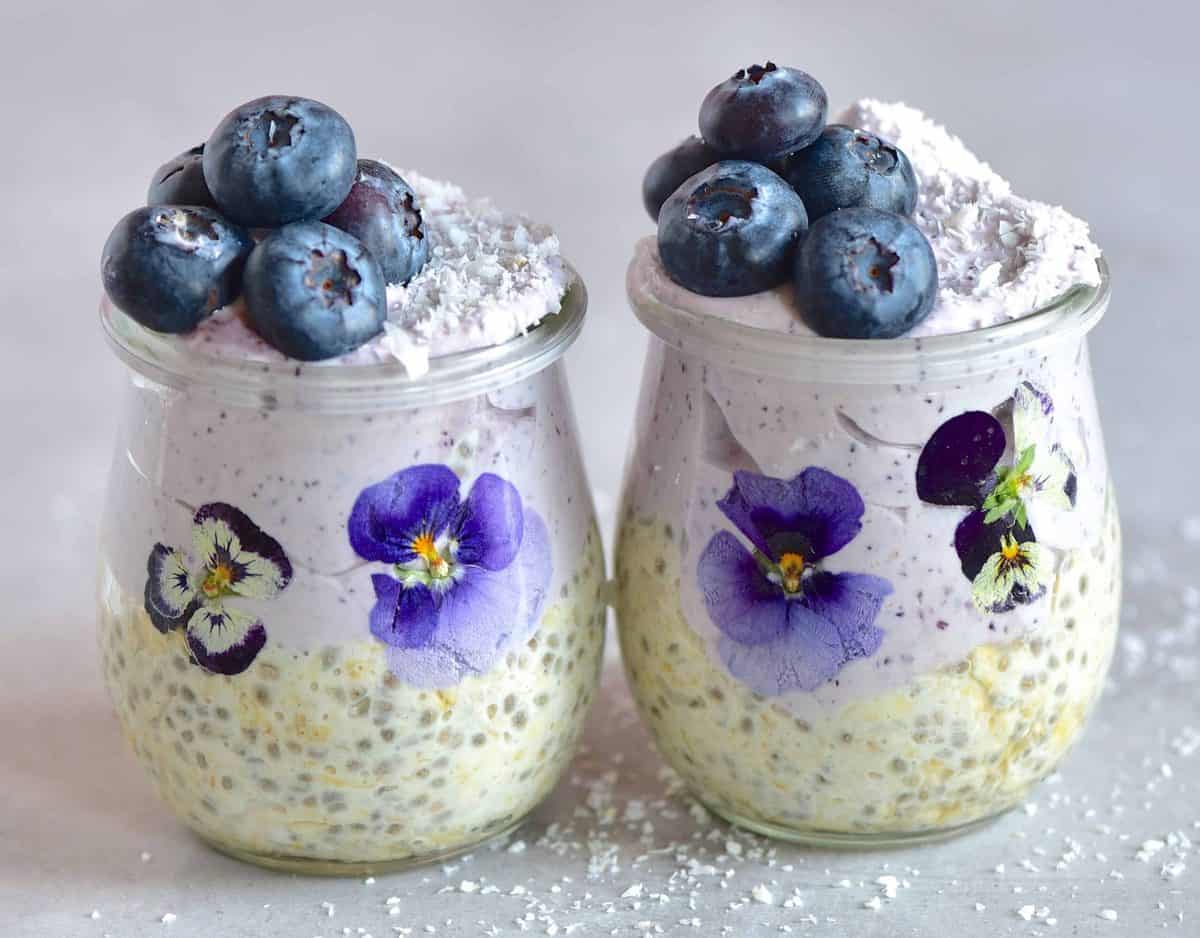
- Blueberries are, of course, amazing inside smoothies – including this blueberry and açai smoothie bowl – or in milkshakes like this Blueberry Frappuccino.

- Let’s not forget the classic dish of blueberry pancakes. I don’t have a specific recipe, but you can easily adapt the pancakes from this Fluffy Japanese Style Pancake Cake or American-style Pancake Cake. Or you can make Aebleskiver Danish Pancakes (Blueberry Mini Pancake Balls), Blueberry Vegan Mug Cake (No Egg!), or Blueberry Baked Oatmeal (Vegan, GF, Refined Sugar-Free).
- You can also make a quick blueberry compote with blueberries, sweetener, and lemon juice – to top pancakes, yogurt, and a variety of dishes.
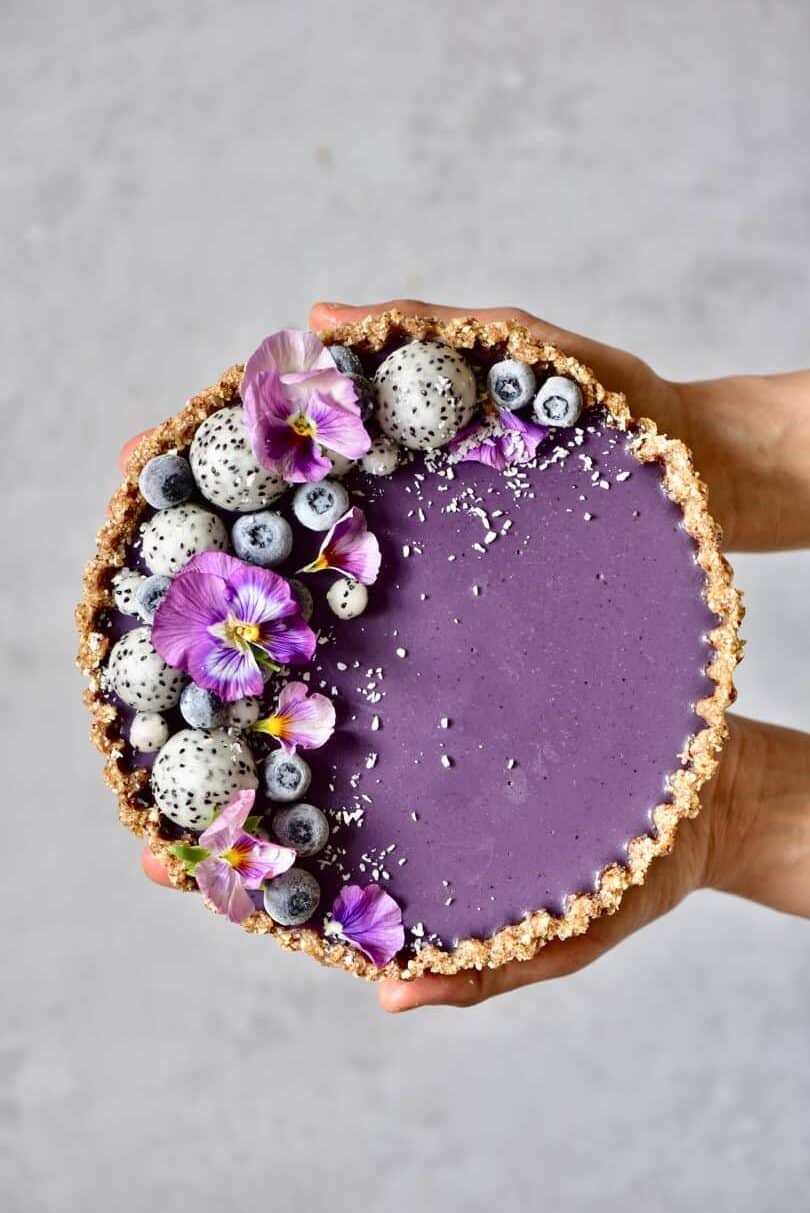
- For more dessert inspiration – blueberries are a wonderful addition to tarts, pies, ice cream, and cheesecakes. Such as this Vegan Earl Grey Blueberry Tart or Earl Grey and Blueberry No-Bake Vegan Cheesecake or Raw Vegan Berry Cheesecake Slices.
10. Spinach
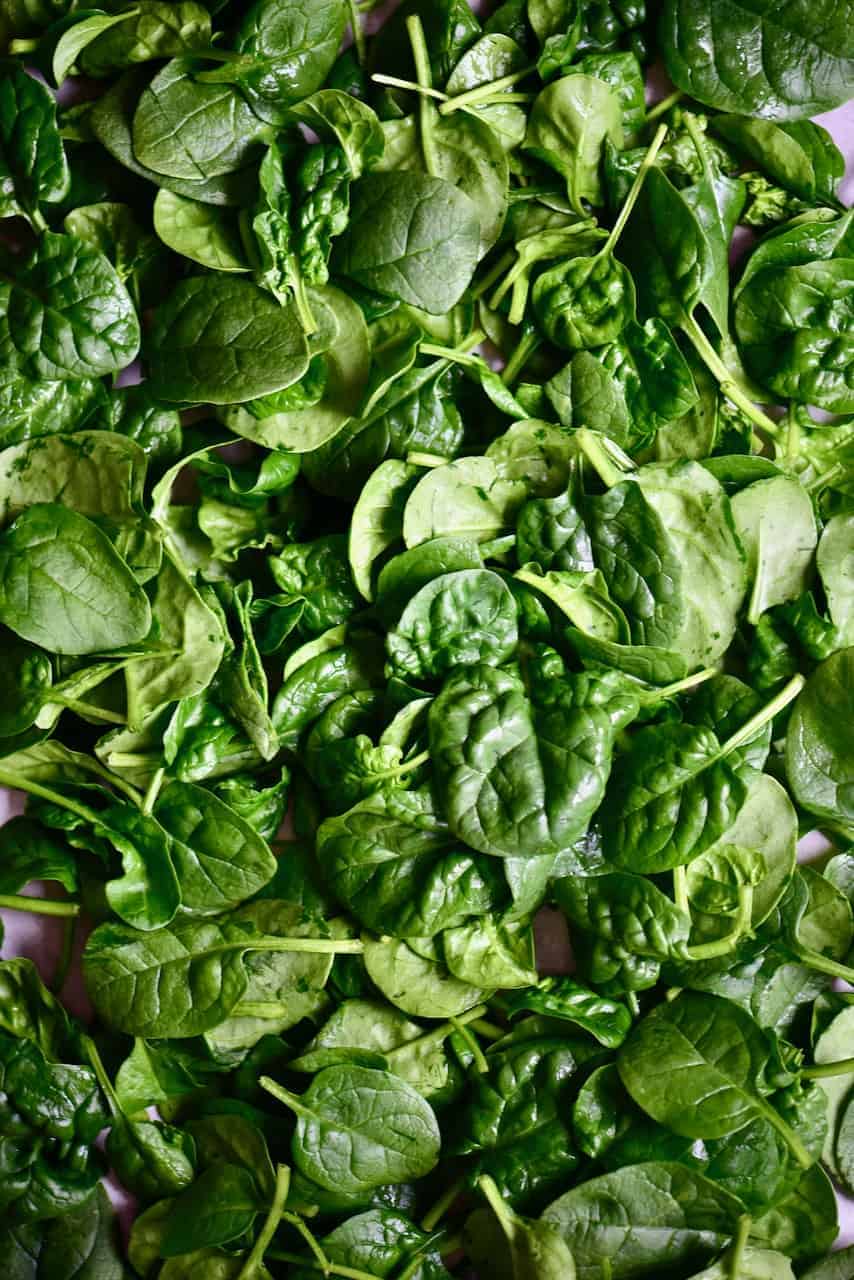
There’s no denying that spinach is an amazing ingredient to add to our diets (as Popeye fully endorses!) It’s highly nutritious with a variety of vitamins including vitamin A, vitamin C, Folic Acid, Iron, Calcium, and more.
These combine to improve immune function, skin health, eye health, bone health, heart and muscle health, has anti-cancerous properties, and more. Plus, research shows that making sure you’re eating enough vitamin C during cold/flu season can help to reduce the severity of symptoms as well as shorten the duration of the lurgy.
It’s also worth noting that spinach remains highly nutritious when used raw or lightly cooked. When lightly cooked, it can actually enhance the bioavailability of certain nutrients including Vitamins A and E, protein, fiber, zinc, calcium, and iron. Some of the carotenoids also become more absorbable.
How To Add Spinach To Your Diet:
Spinach is one of those ingredients that are incredibly simple to add to your diet because it can be chucked into so many recipes. From using it as part of a salad, chucking some in smoothies, as a filler for wraps, sandwiches, pitta, etc.
Some recipe inspiration for spinach that you may like:
- Simple garlic sautéed spinach – this side dish can be added to a whole variety of meals and combines the immune-boosting powers of spinach and garlic, with heart-healthy extra virgin olive oil.
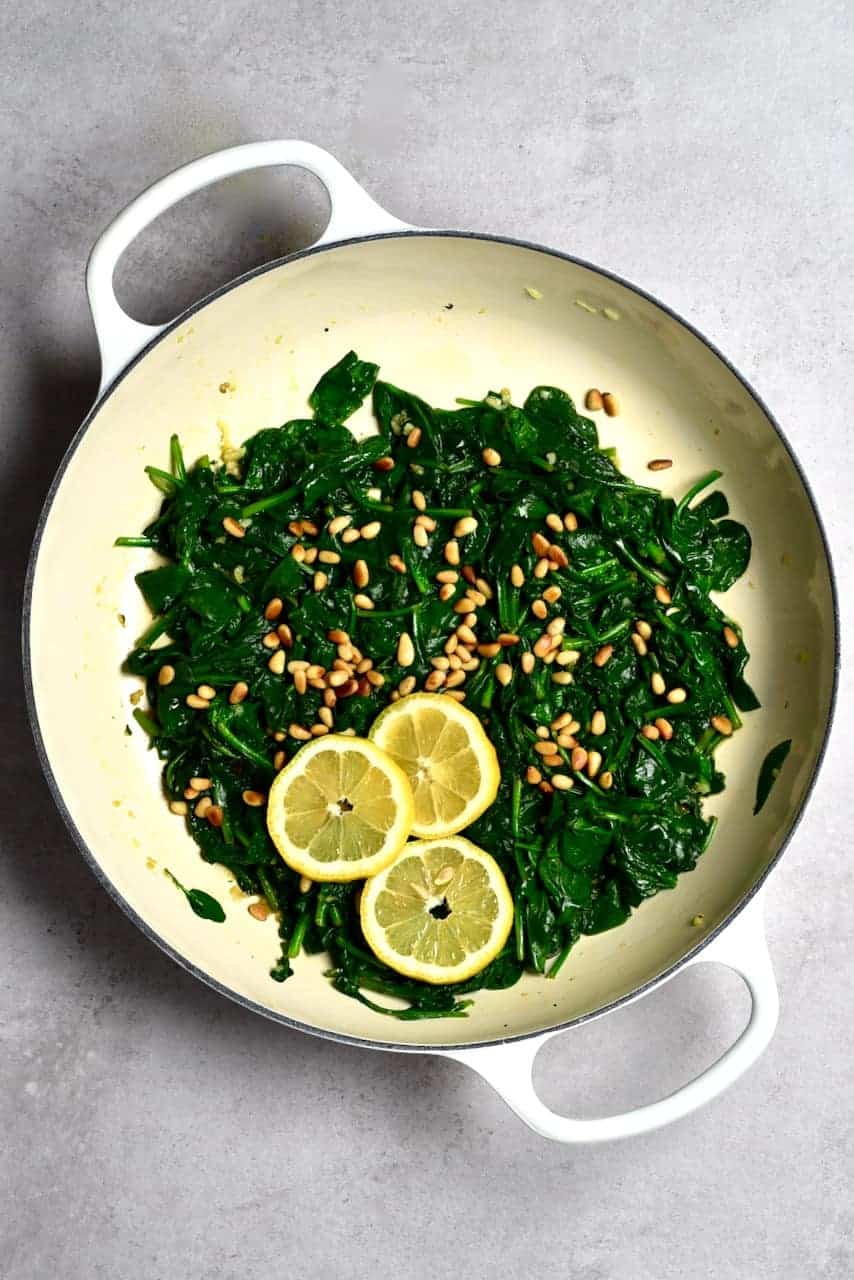
- Spinach fatayer or this Ricotta & Spinach pie ‘Tarte Soleil’ are wonderful pastry options filled with spinach.

- Fresh homemade spinach green pasta salad. You can also make your own Spinach Noodles (Green Pasta Dough) or Ricotta And Spinach Ravioli.
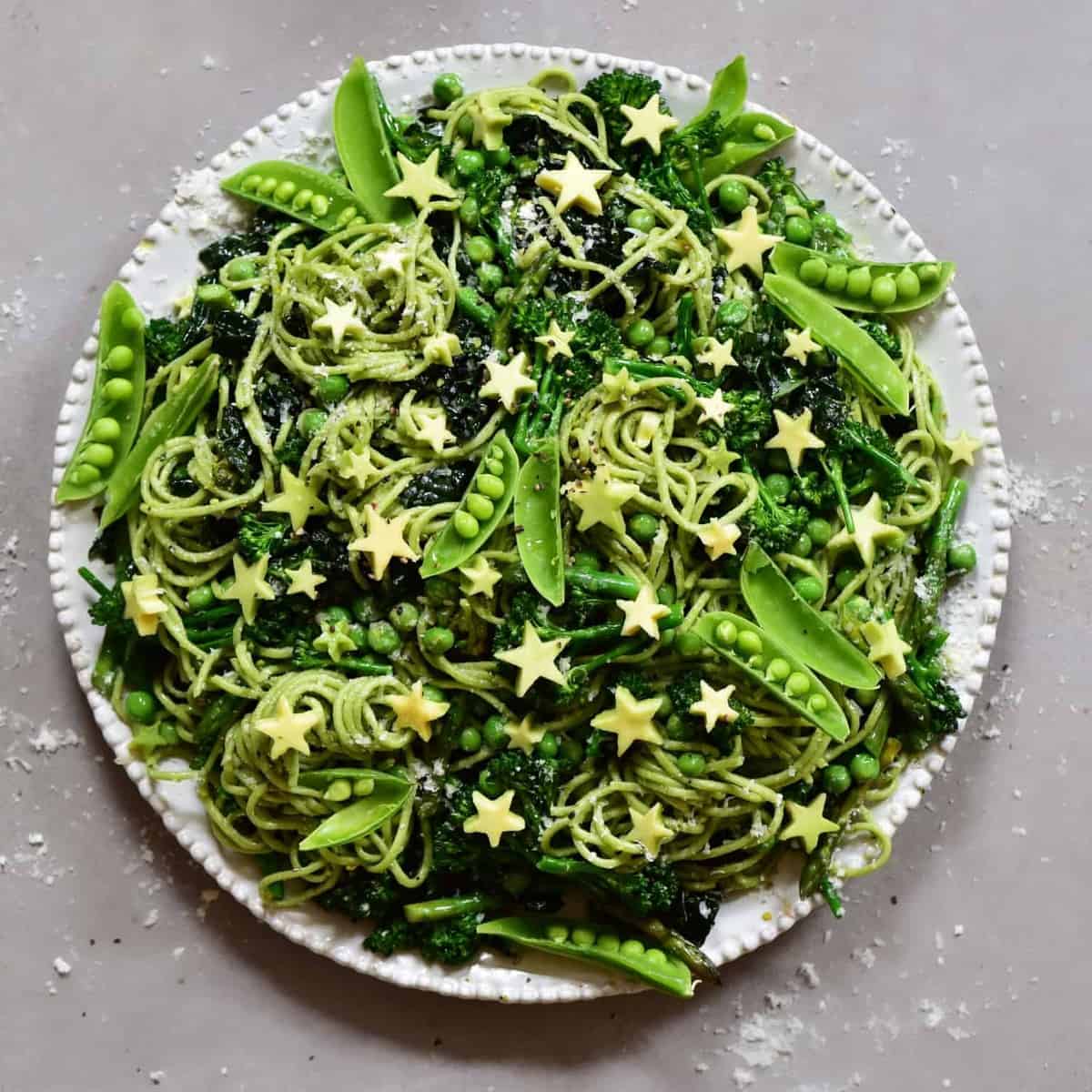
- For a simple dip, you might like this Simple Spinach Yogurt Dip (Borani)
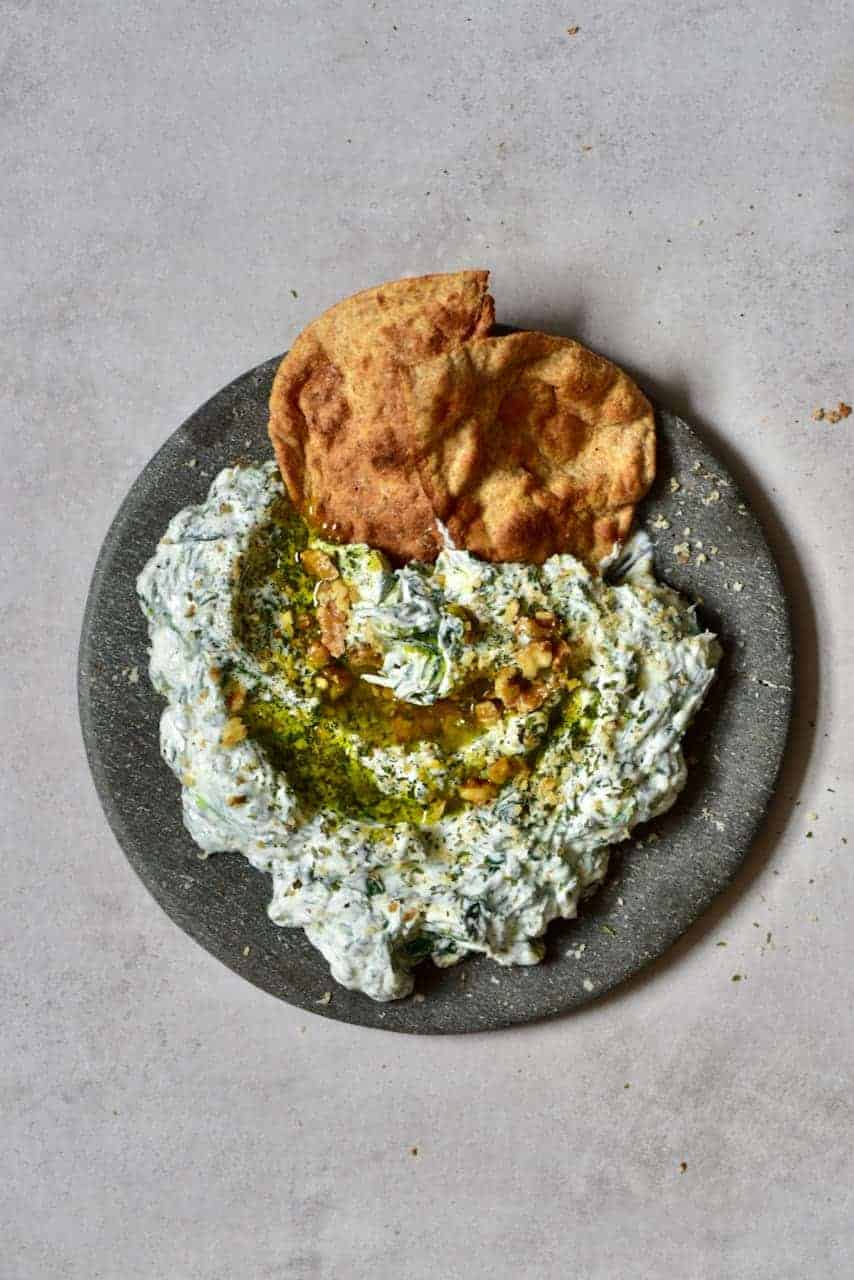
- Spinach can also be easily added to a bunch of recipes here on the blog including these Sundried Tomato Savoury Muffins with Rainbow Hummus Frosting, or this Vegetarian One-Pot Pasta bake.
- It can even be added to breakfast recipes such as Oatmeal Spinach Pancakes (GF) and High-Protein Spinach Crepes (Gluten-Free).
11. Mushrooms
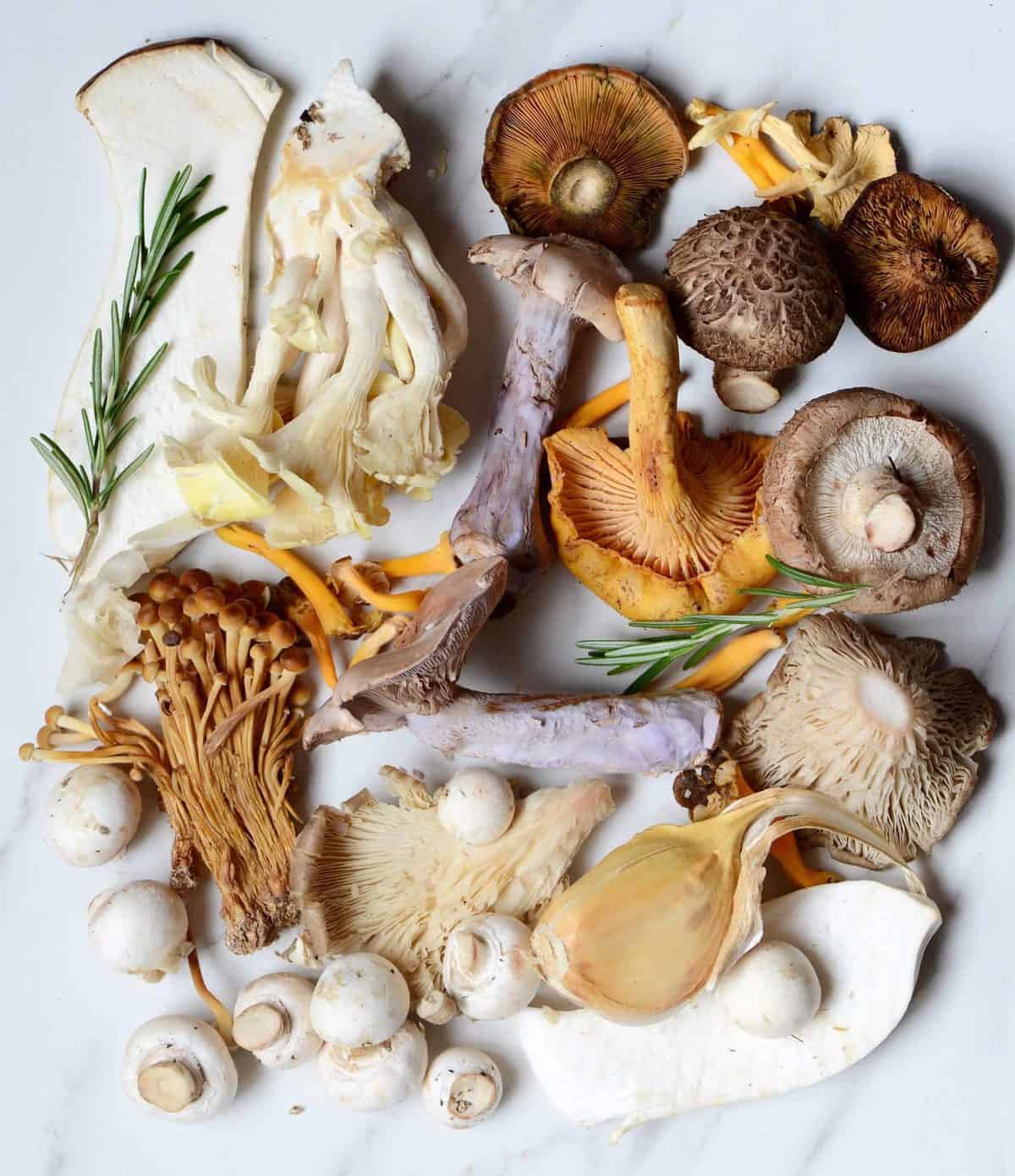
It feels a little silly to group all mushrooms together when there are so many different varieties. However, evidence shows that mushrooms can help boost your immune system due to their combination of vitamins, minerals and enzymes. It isn’t a surprise that mushrooms have been used medicinally for centuries.
Mushrooms not only contain wonderful levels of Vitamin D. They are also a fantastic source of Zinc – both of which are wonderful for a boosted immunity and fighting off disease. They also contain selenium, which can stimulate t-cell production and boost immunity.
Shiitake, reishi, maitake, and chaga are all varieties that have powerful immune-boosting properties. However, going into detail about exactly which mushroom varieties are best for different health benefits would require an entire blog post. If you want to read more about individual types and their advantages then check out this article on Healthline.
How To Add Mushrooms To Your Diet:
Mushrooms are incredibly easy to add to your diet. Especially given the fact that they’re fat-free, low-sodium, low calorie and cholesterol-free. Plus, they’re super simple to add to your diet, including options for breakfast, lunch, dinner and side dishes. For example:
- Mushrooms make an excellent ‘meaty’ substitute within lasagnas, burgers, sausages and even these Healthy Mushroom & Lentil Vegan Meatballs or a filling or these Meat-free Organic Rainbow Tacos.
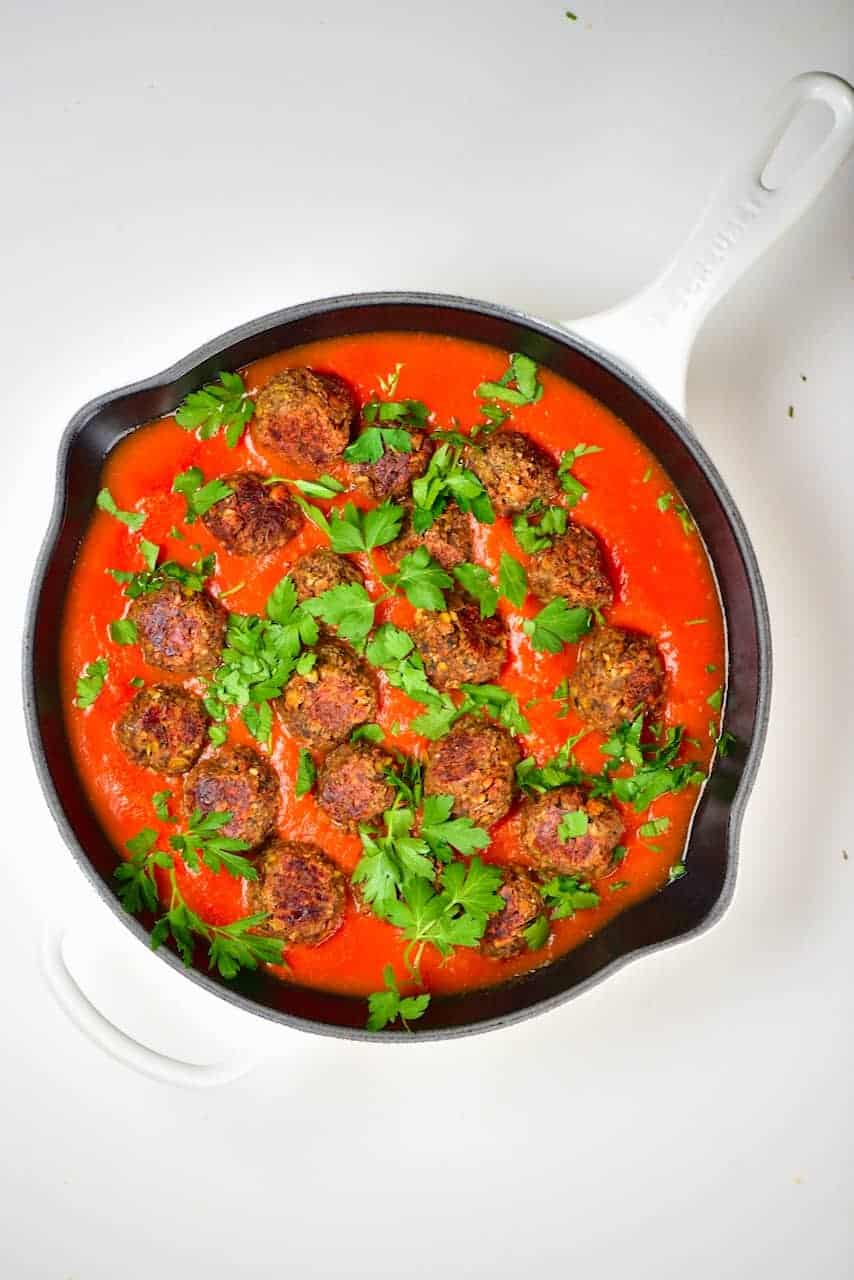
- Chopped mushrooms can also easily be added to a variety of sauces, including pasta sauce – like within this Vegetarian One-Pot Pasta bake or Super Creamy Vegan Mushroom Sauce Pasta

- You can easily sauté mushrooms with some garlic and herbs, as a side dish. I also love to use sautéed mushrooms to top avocado toast.
- You might also like this Japanese-inspired Ramen Noodle Soup.
- Adding mushrooms to scrambled eggs, omelettes and other breakfast egg dishes.
- You could even swap out your burger bun for a mushroom in this Mushroom bun burger or even simple Avocado toast with mushroom.
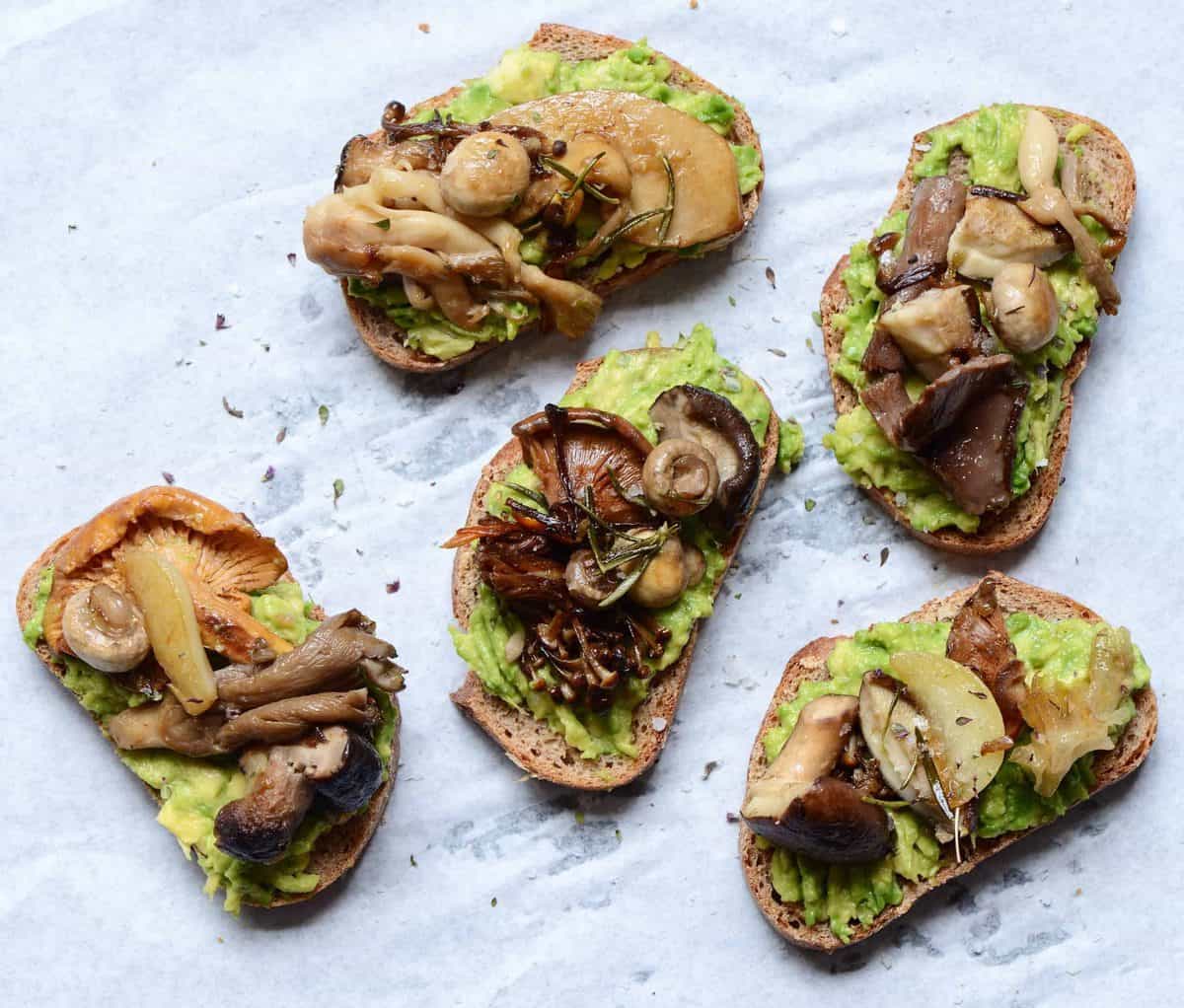
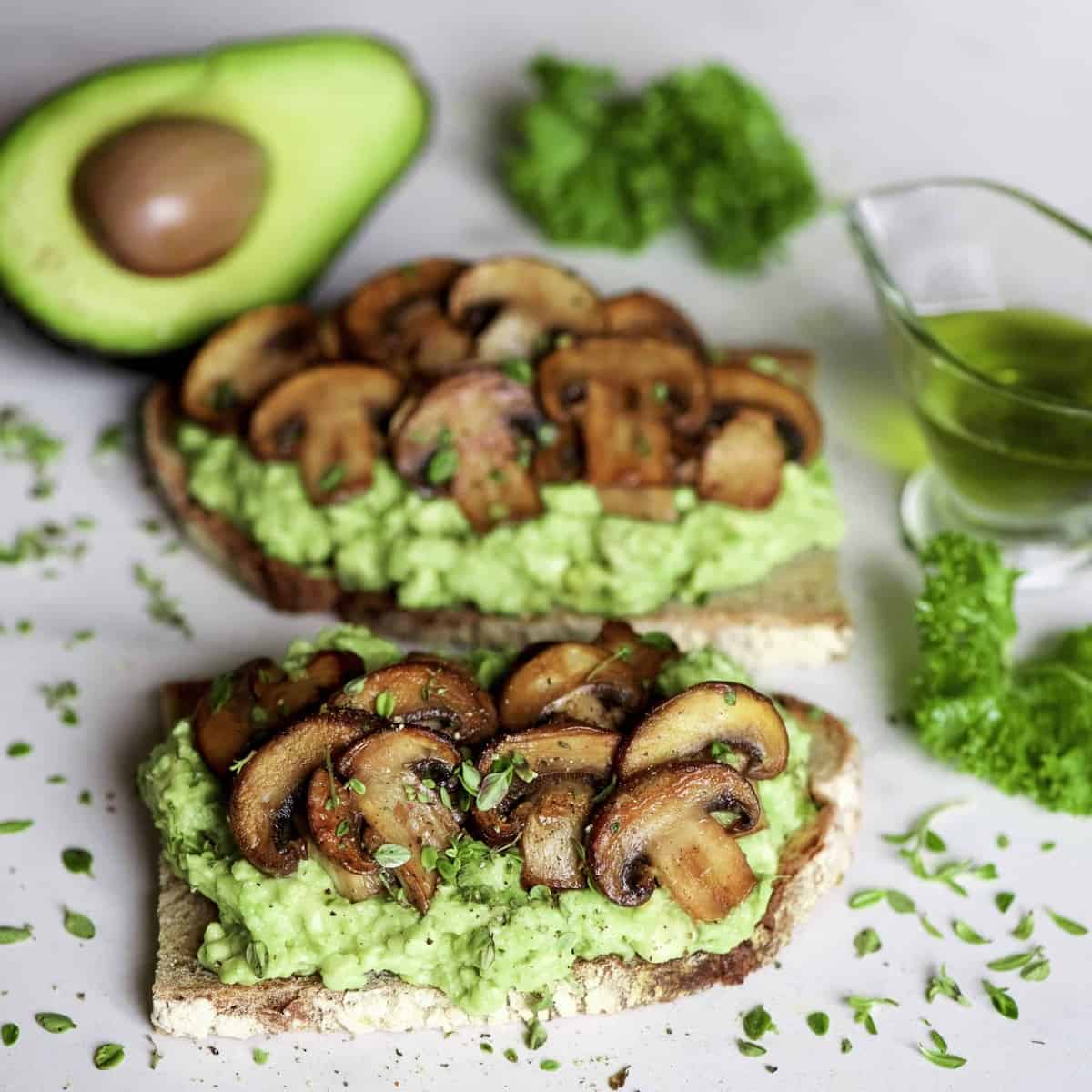
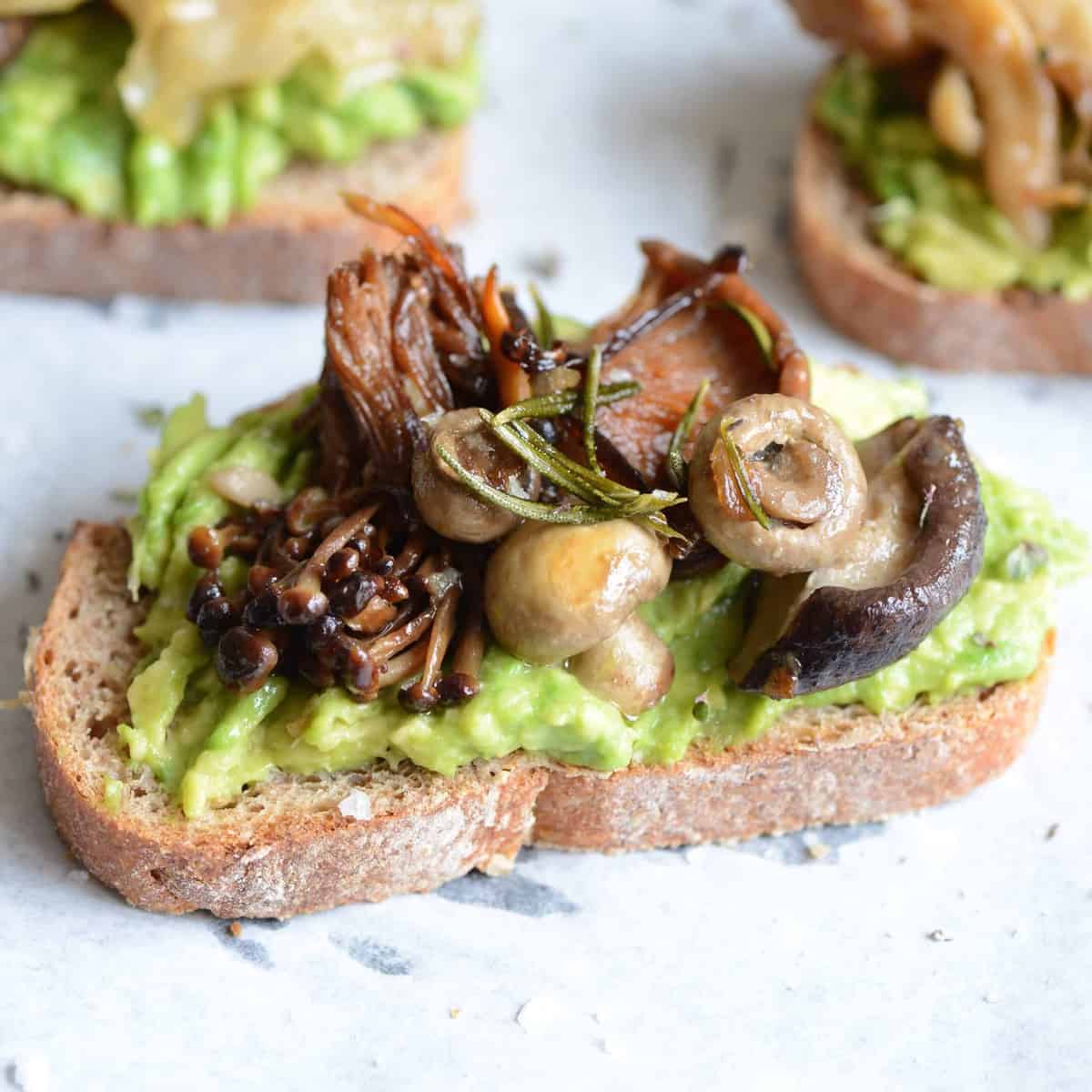
12. Salmon
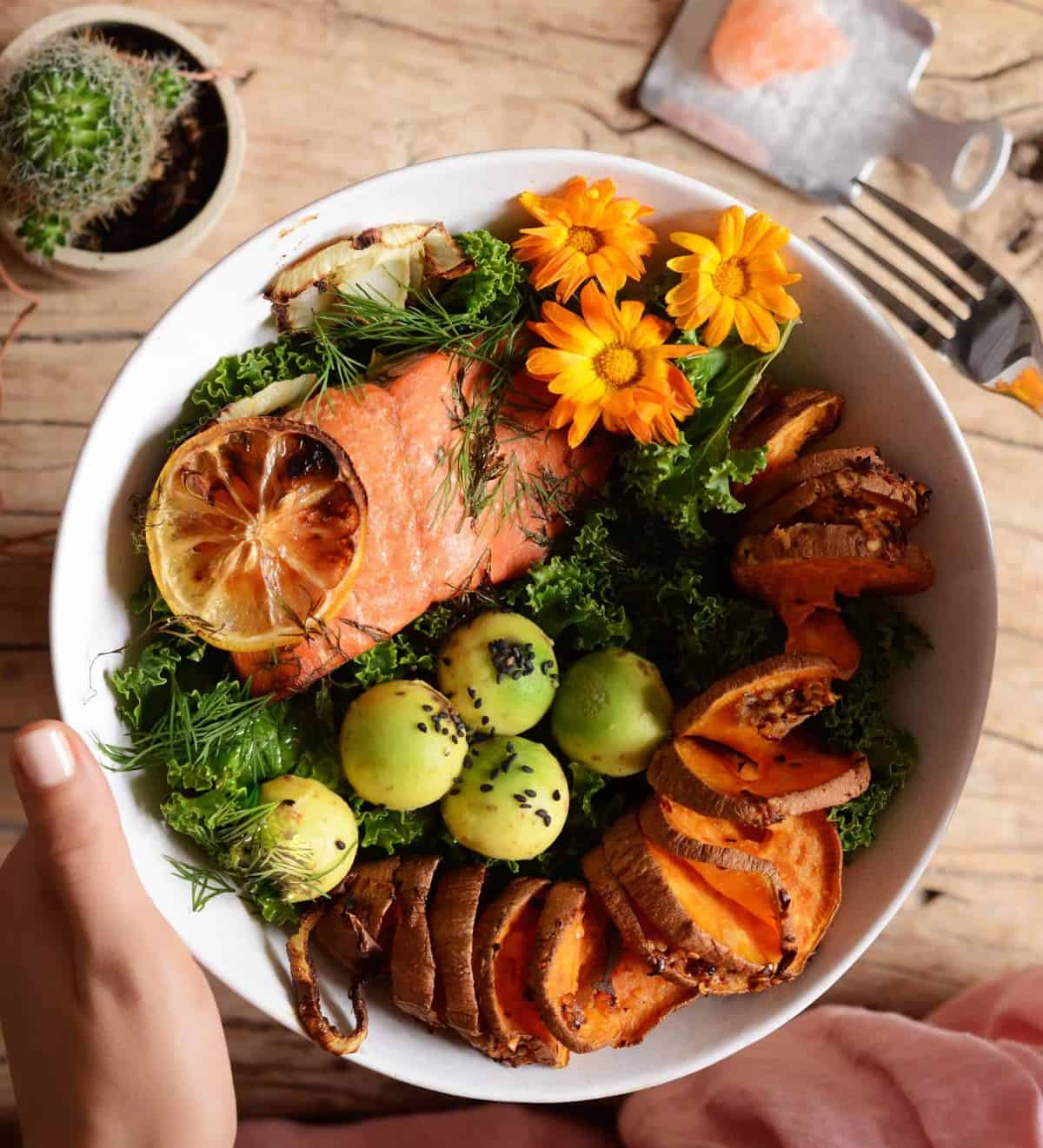
Salmon probably isn’t featured on the majority of immune-boosting round-up posts. But I can’t ignore its plentiful health benefits, which include a positive impact on our immune system.
This includes the fact that salmon is a wonderful course of omega 3 essential fats, which promote a healthy immune systems and faster recovery. Salmon also contains Vitamin D, which is key to boosting our immune system; Vitamin B12, which supports our T cell function; and selenium, also known for improved immune function.
Plus, salmon fillets can easily be kept in the freezer and cooked from frozen. So they’re a great option to always have in your freezer for healthy midweek meal options.
How To Add Salmon To Your Diet:
Salmon can be baked, fried, grilled – super versatile for a number of dishes.
- Salmon is super versatile and can be marinated in hundreds of ways – teriyaki, sweet chilli, barbecue, with herbs and butter, lemon & dill baked salmon. Or just make it simple – air fryer salmon or salmon in the oven.
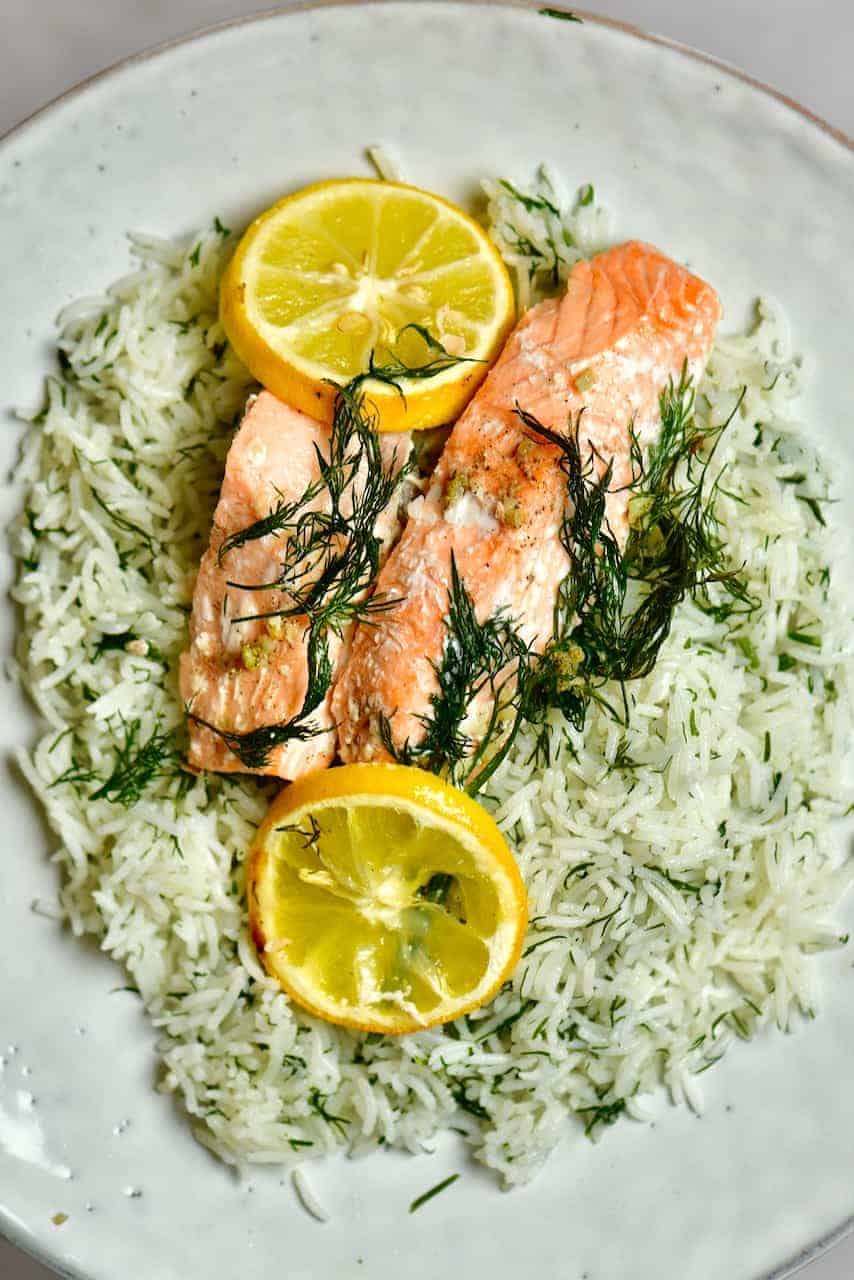
- Once baked salmon is great for adding to pasta salads and salad dishes like this Grilled salmon salad lunch bowl, Simple quinoa salad with walnuts and avocado or Healthy potato salad
- Salmon is a great protein alternative for a variety of dishes – like this Creamy Vegan Thai Green Curry.
- What about egg dishes – like salmon scrambled egg, omelettes, eggs Benedict and more.
- Salmon is also a wonderful addition to a buddha bowl – make sure to include grains and vegetables and you have a delicious and nutritious meal.
13. Ginger

Aromatic ginger is another one of the ingredients on this list that has been used for medicinal purposes for centuries.
Ginger tea, in particular, is a great home remedy for treating a cold or sore throat, with its anti-inflammatory, antibacterial, and anti-oxidative properties that help to combat the sickness. It has also been used a lot to aid the digestion of food and reduce nausea.
According to studies, ginger speeds up the emptying of the stomach. Therefore, it has been used as an antidote for bloating, indigestion and stomach pain. It has also been known to reduce LDL cholesterol levels, reduce period pains, improve brain and heart health and even lower cholesterol levels.
How To Add Ginger To Your Diet:
Ginger is easy to add to a variety of dishes – whether it’s as a seasoning, in desserts, juices and more. I have a list of 40+ ginger recipes here but let’s look at just some of them now:
- These Simple And Healthy Ginger Lemonade and Warming Ginger Tea are great for any time of the year.
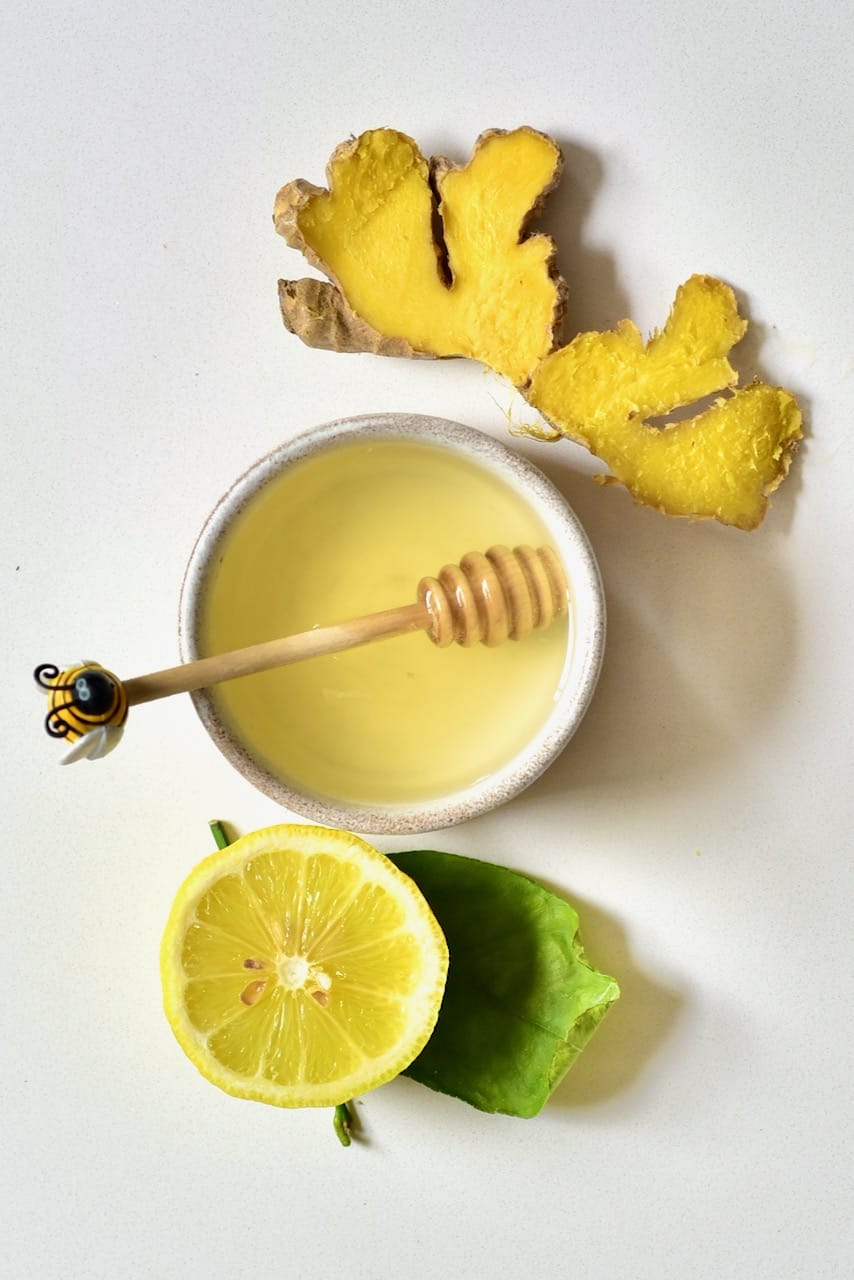
- Also, these Ginger Turmeric Immune-Boosting Energy Shots (juicer recipe) are perfect for introducing to your diet during cold/flu season. I also have a blender version here Turmeric-ginger Energy Shots.
- You can also try these simple Lemon, Ginger and Cayenne Immunity Shots as well as these Simple Ginger Juice (by the way, if you ever wondered how to peel ginger, look no further – How to Peel Ginger Quickly and Easily).

- Within juices and smoothies – such as this Green Detox Celery Juice Blend or Simple Beetroot & Ginger Juice Recipe or this Citrus & Ginger Mango Smoothie Bowl.
- Ginger is one of my favourite ingredients to use for flavouring soups like this Turmeric and Ginger Spiced Pumpkin Soup, Thai Inspired Vegan Green Pea Soup or Japanese-inspired Ramen Noodle Soup.
- It also makes for great Crispy Ginger Chips.
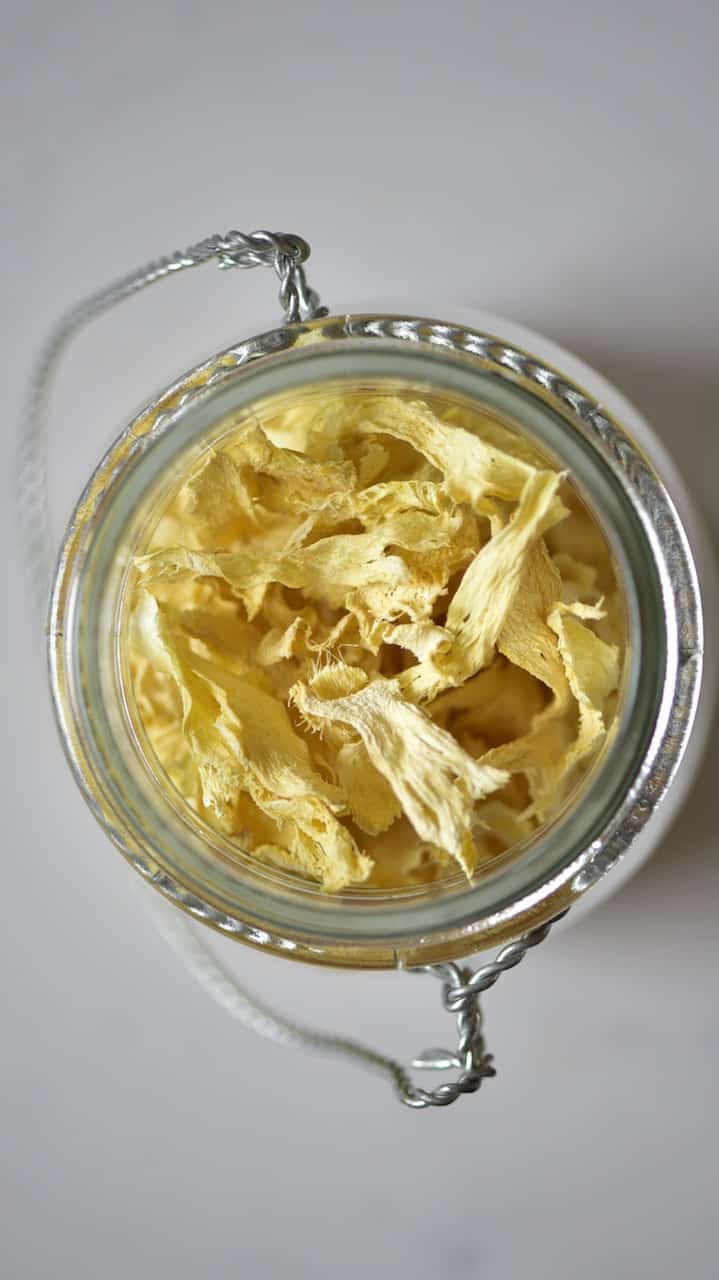
- I love to include ginger to dishes the same way I would garlic – stir-fries, with fish, salad dressing etc.
- Plus, it is also a wonderful addition to a whole range of desserts – including tarts, cookies and more.
14. Sunflower seeds
This small but mighty seed is filled to the brim with nutrients. A healthy dose of magnesium, potassium, Zinc, iron, folate as well as essential fats and Vitamins A, B and E. They also contain 2g protein per tablespoon and ZERO cholesterol.
Because of all the excellent nutrients inside these little seeds, they come with all sorts of health benefits. These include lowering blood sugar levels, blood pressure and cholesterol as well as being heart-healthy, and a natural anti-inflammatory.
Their high levels of Vitamin E and selenium content are particularly great for maintaining good immune function.
How To Add Sunflower Seeds To Your Diet:
- Sunflower seeds are a wonderful part of this all-natural 5-Seed DIY Vegan Protein Powder Blend.
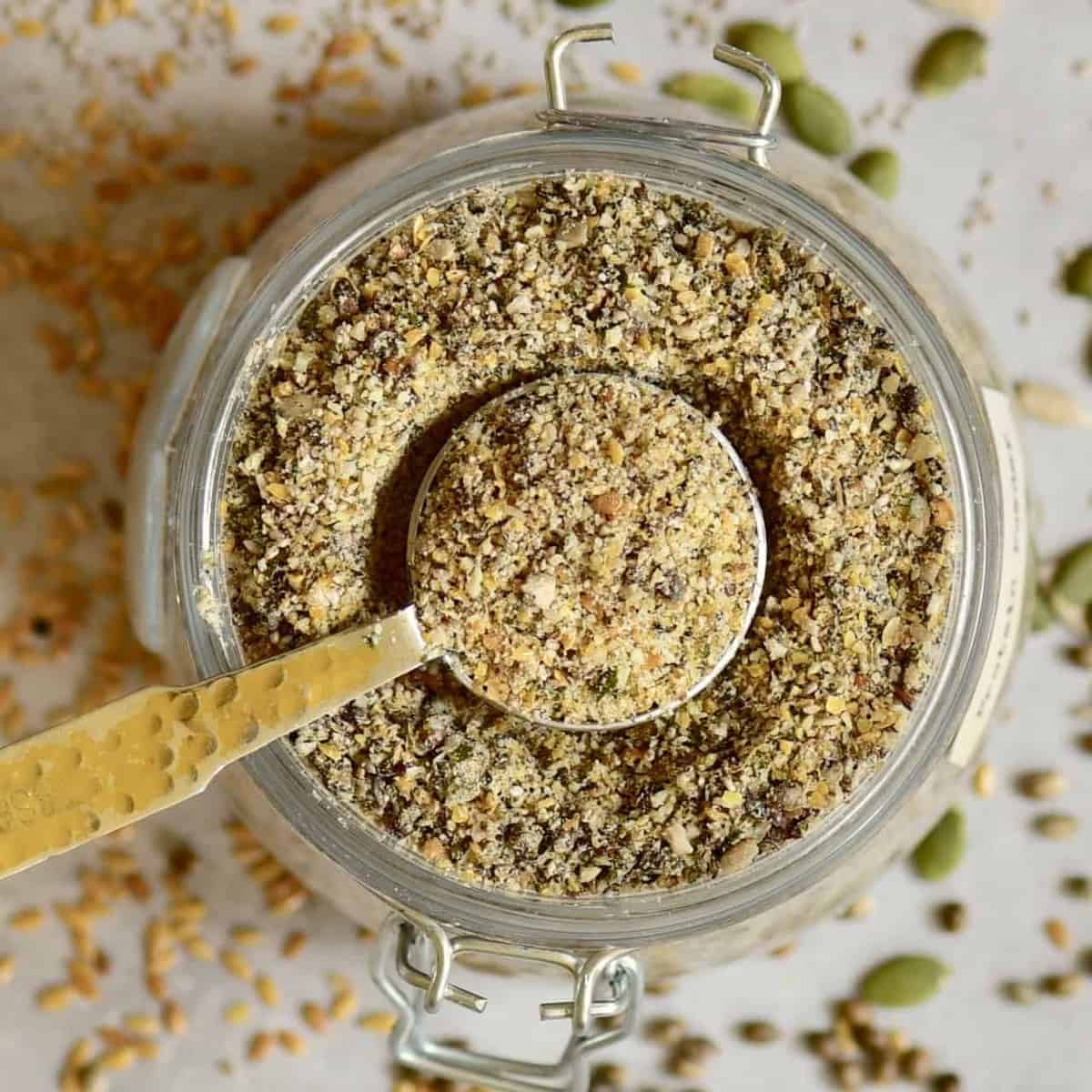
- They are great for sprinkling over salads and soups.
- A wonderful addition to your own trail mix of healthy Homemade Granola.
- Not to mention this incredibly simple Homemade Sunflower Seed Butter.
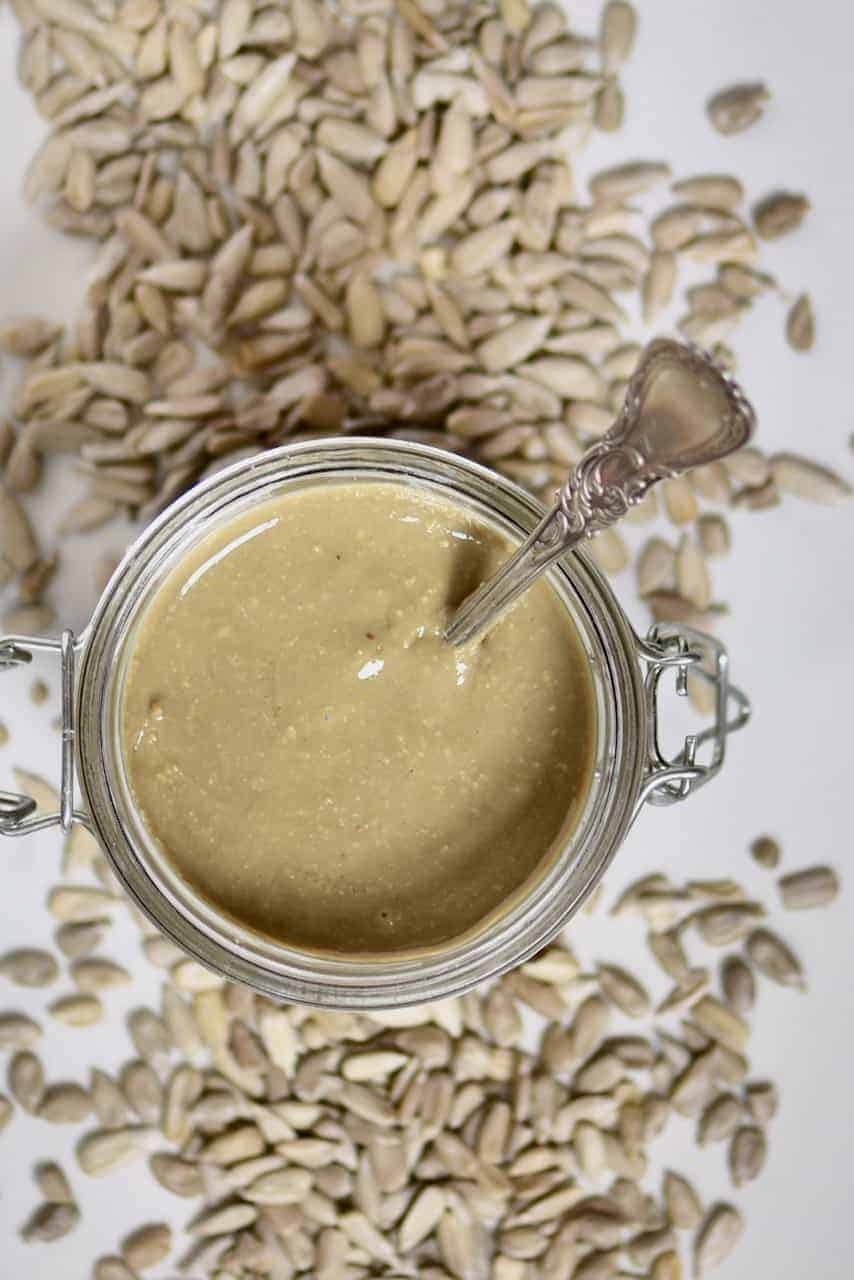
- For something a bit different, you might like these Sundried Tomato Savoury Muffins & Rainbow Hummus Frosting.
- You can also use them to top this Simple Homemade Multigrain Bread.
- They can also be eaten from the shells, as a simple snack.
15. Green Tea
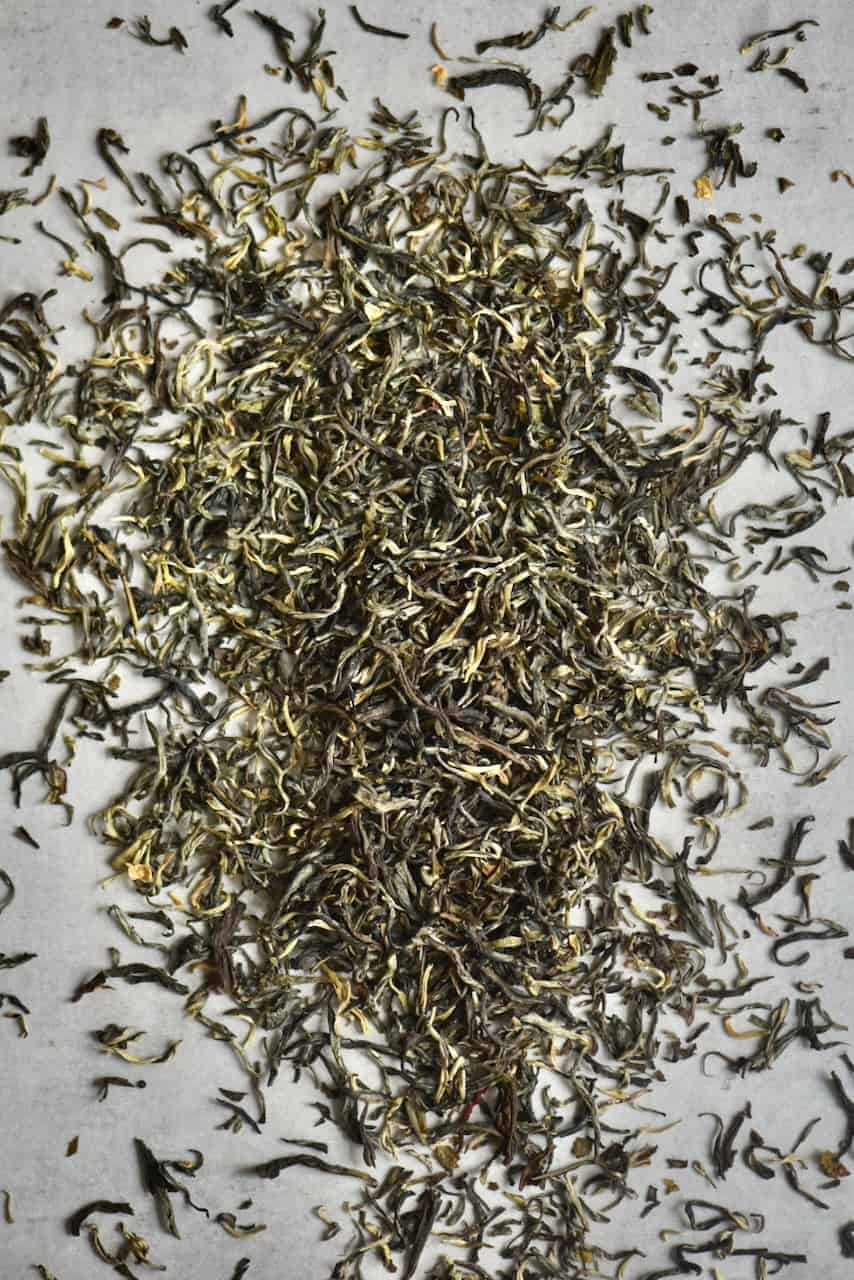
Green tea is used medicinally, for a variety of purposes. This is because it’s packed with antioxidants called flavonoids. In particular, green tea contains levels of epigallocatechin gallate (EGCG), an antioxidant with immune-boosting properties. It also contains an antioxidant called catechin, which has powerful antibacterial and antiviral properties, able to combat cold and flu germs.
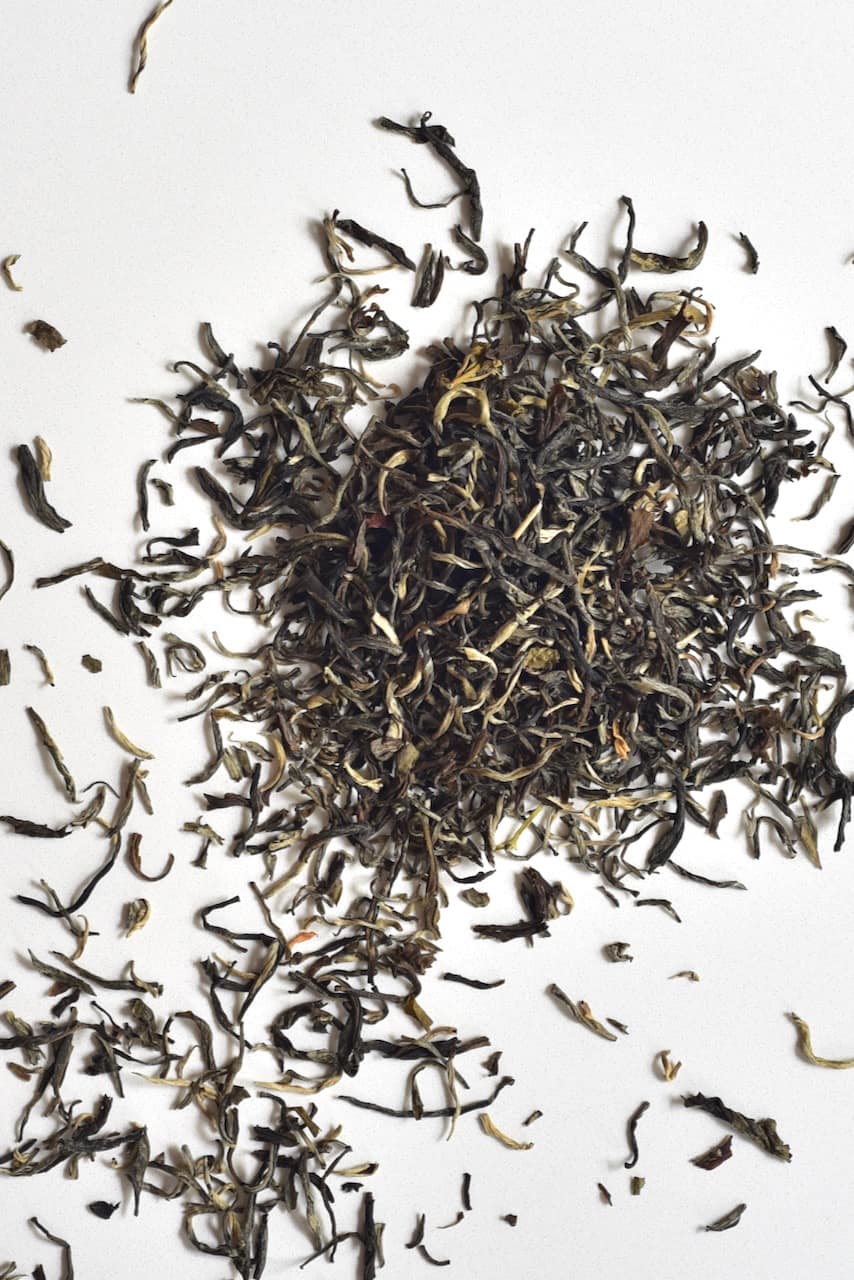
Green tea also contains an amino acid ‘L-theanine’, which boosts the production of germ-fighting compounds in the T-cells. While the effect may be minimal, it can’t help to include more green tea in your diet during cold/ flu season.
Other health benefits include having anti-cancerous properties, being good for weight management, improved brain function, boost the metabolic rate and more.
How to add green tea to your diet:
- The most obvious option is simply drinking green tea – people like to do this with a bit of honey.
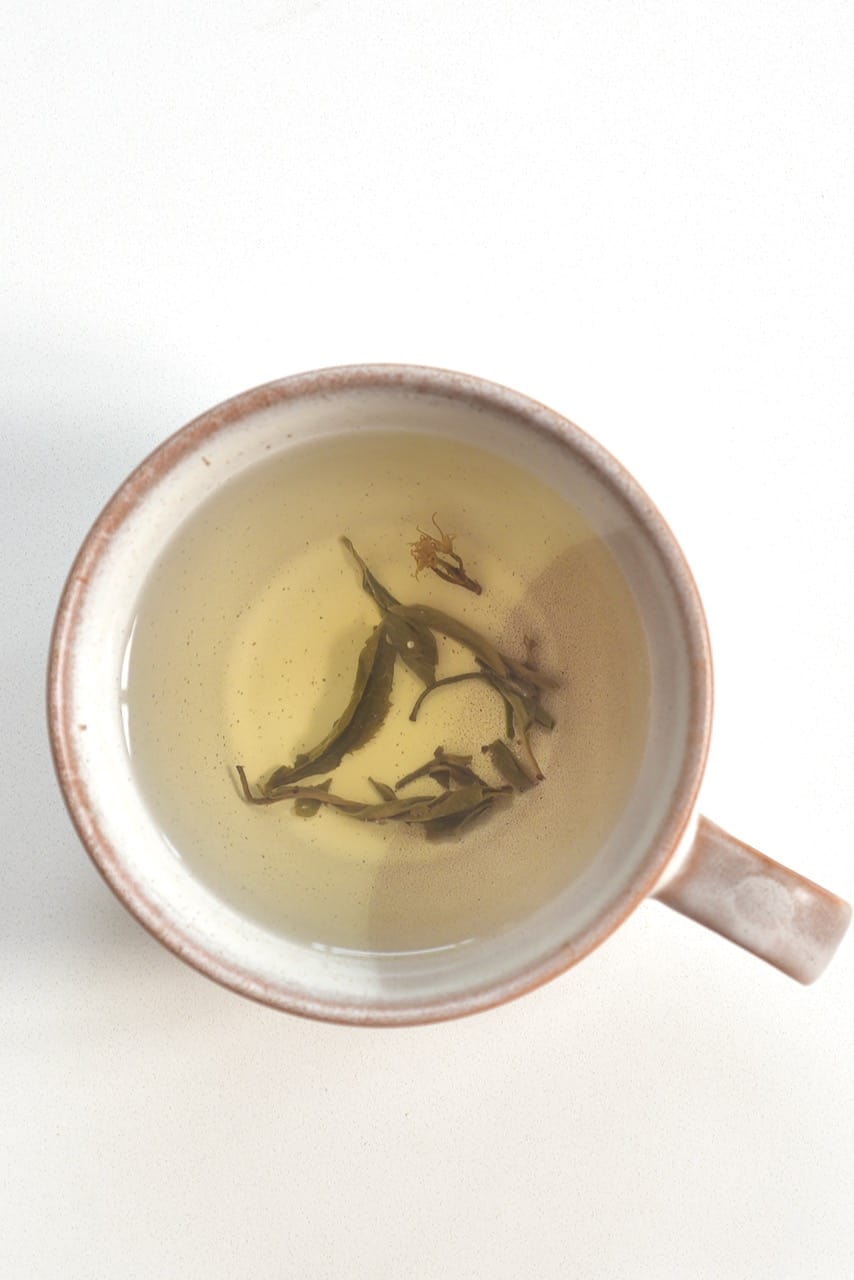
- You can also add green tea to a variety of homemade smoothies and juices – or even milkshakes.
- Green tea can also be steeped and used for your bowl of oats
- green tea can also be used in a variety of desserts – cookies, cake, a green tea sweet sauce, icing and more.
16. Broccoli
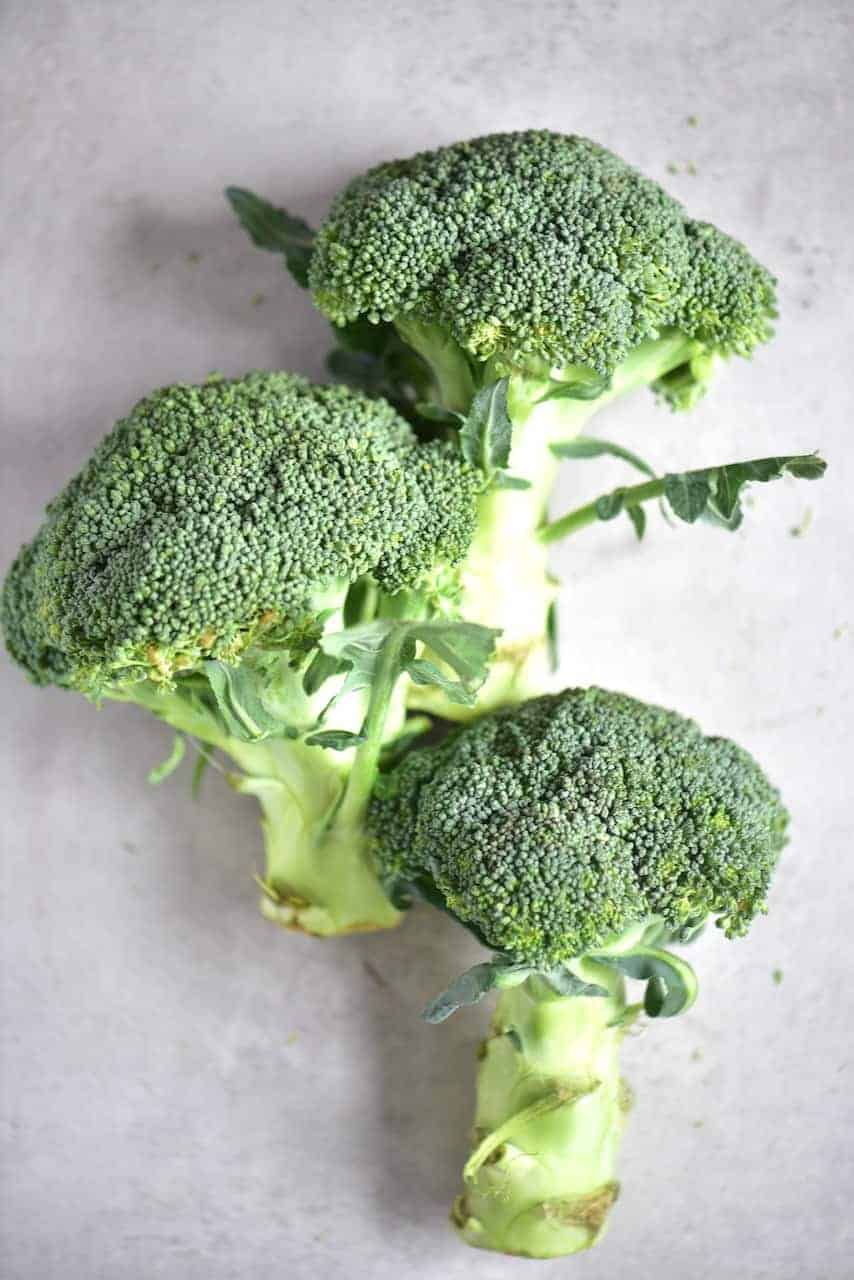
Broccoli is not only delicious but it’s packed full of vitamins and minerals – including Vitamin C, E, K, and A. It also includes potassium, magnesium, folic acid, and a variety of antioxidants.
The combination of Vitamin C and its antioxidants works to support the immune system, remove harmful free radicals from the body, and prevent sickness. In fact, studies have even proven that eating more broccoli, if you’re trying to prevent a cold/flu, can help.
How To Add Broccoli To Your Diet:
Broccoli can be eaten in a variety of ways:
- Raw! Broccoli can be combined in a delicious raw salad. Try this easy Cold Broccoli Apple Salad.
- You can easily blanch it to preserve its color, texture, and nutrients. Once blanched, you can add it to many dishes, including this Asian Broccoli Salad with Sesame Ginger Dressing.
- Simply steamed or baked as a side dish – possibly with a butter or citrus “dressing”
- Combined into a stir-fry with noodles or rice or mixed into a pasta dish like this Easy Vegan Béchamel Pasta Bake or Fresh homemade spinach green pasta salad
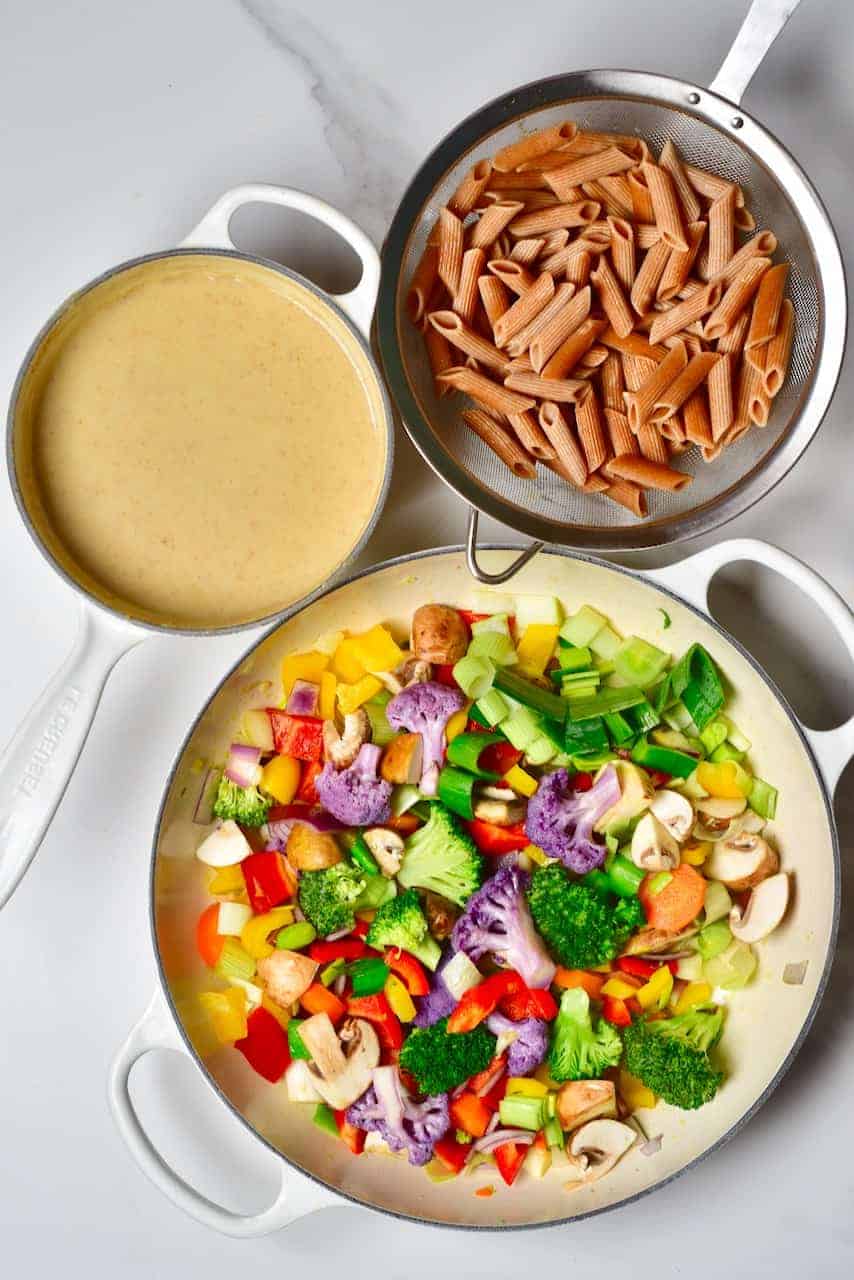
- A perfect topping for savoury oats, polenta.
- Crumbled into an omelette/ frittata or within a quiche. Or even to top this Green Protein Pancake or within these Savoury Kale Waffle Cones
- Broccoli is an amazing ingredient to make nutrient-dense soups or within Japanese-inspired Ramen Noodle Soup
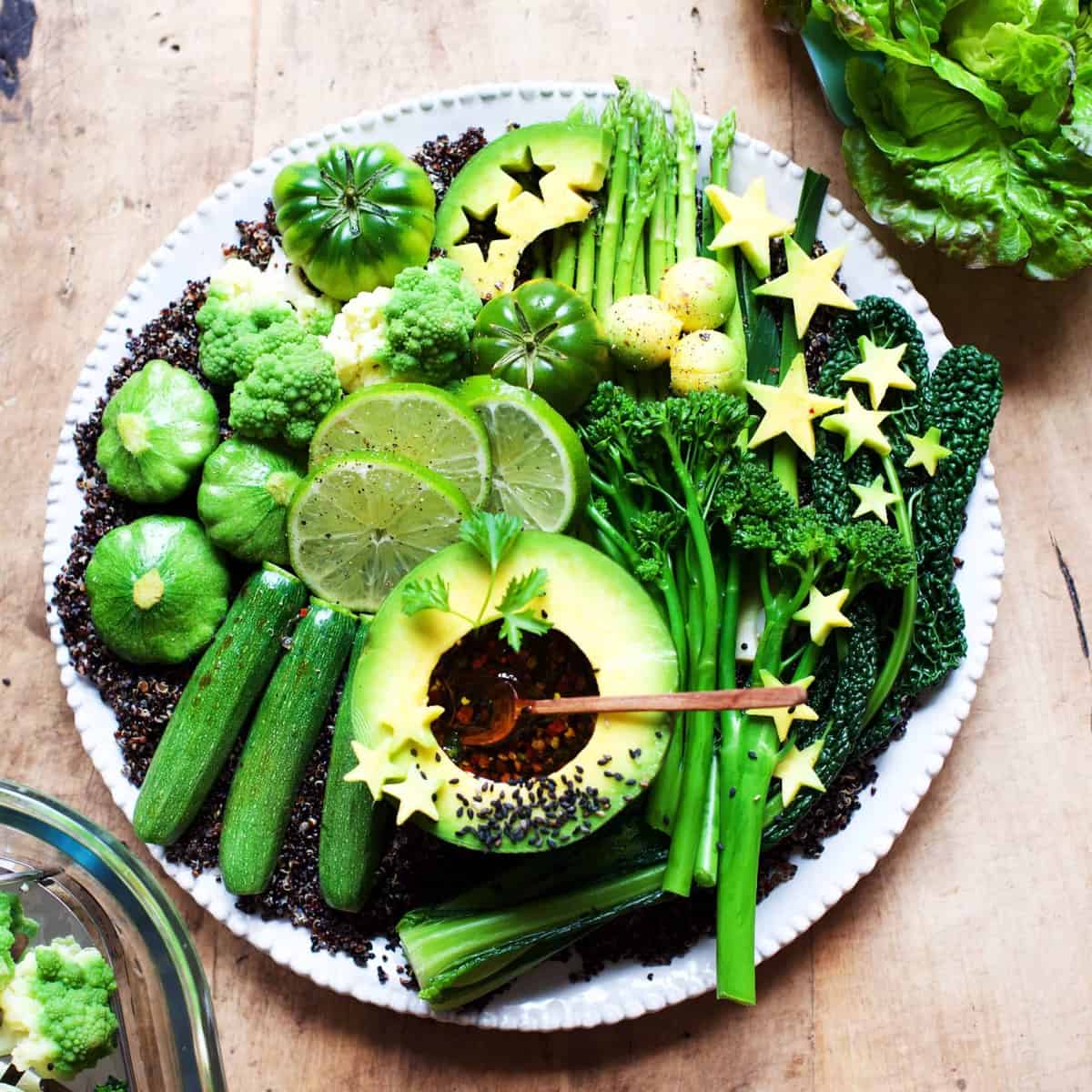
17. Citrus fruit
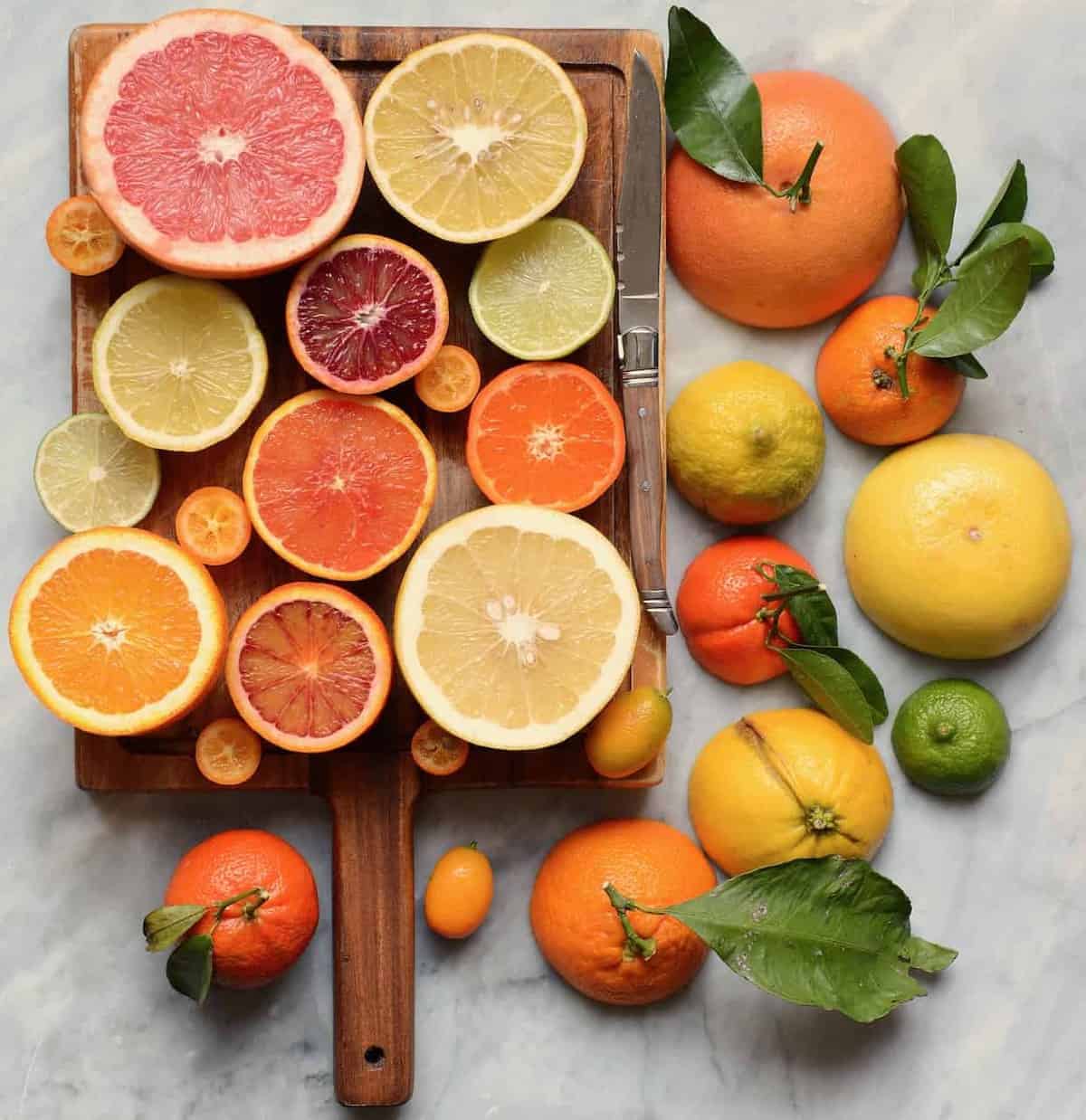
There are multiple fruits that come under the banner of ‘citrus’, including oranges, lemons, limes, tangerine, mandarin, grapefruit, etc. These fruits are well known for their Vitamin C content (in fact, one medium orange contains your entire RDI of Vitamin C). And we know it is great for building our immune systems and increase the production of white blood cells to fight infections.
Citrus fruit is also rich in plant compounds with various benefits that include antioxidant and anti-inflammatory effects. And these compounds are responsible for a large variety of citrus health benefits.
How To Add Citrus Fruits To Your Diet:
Not only are citrus fruits a wonderful snack on their own- they can also be added to a variety of dishes including:
- Smoothie bowls and juices are a great way to add in citrus – including this Citrus & Ginger Mango Smoothie Bowl and Citrus & Peach Smoothie Bowl Recipe.
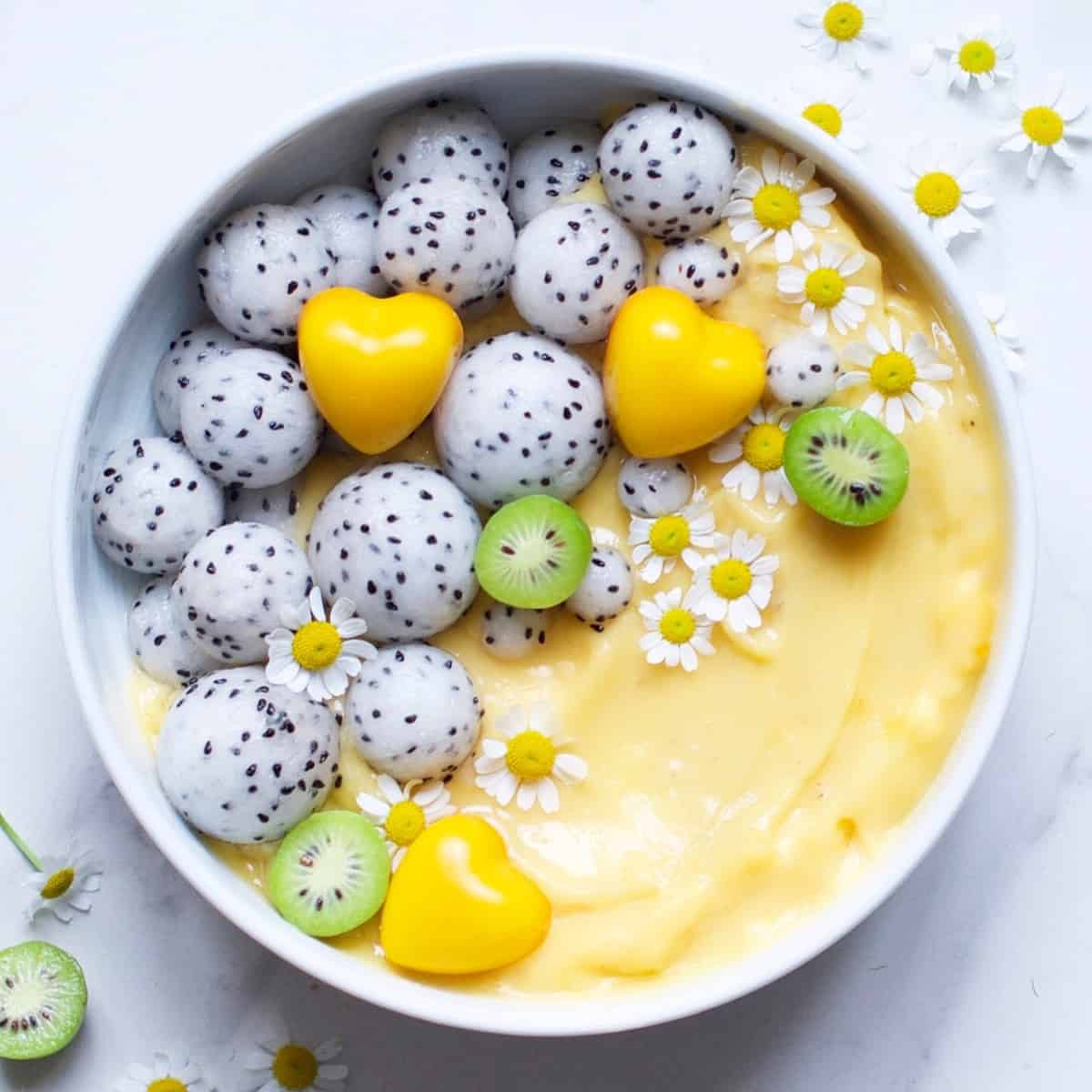
- Orange/mandarin segments frozen and dipped in dark chocolate are an amazing and refreshing snack
- Citrus fruit is a wonderful addition to breakfast dishes too. From citrus-y morning oats, served with yogurt and granola, as a breakfast toast topping, topping pancakes or french toast and more.
- And let’s not forget a delicious glass of freshly squeezed orange juice or one of these yummy lemonades – Homemade Lemonade, Ginger Lemonade and Simple Colour-changing Magic Lemonade.

- Citrus is wonderful when added to marinades and dressings as well as marmalades
- And who can forget how well citrus fruit is in desserts. Whether its for crepe Suzette, as part of a tart, or more. like this Simple Vegan Pistachio & Lemon Tart or Two-layer Raspberry Peach & Lemon Tart or Turmeric Citrus Immune Boosting Tart.

18. Papaya

Papaya is another wonderful immune-boosting food and source of Vitamin C, Vitamin A and antioxidants. In fact, a single papaya contains over 200% of your daily Vitamin C and over 30% of Vitamin A.
Papaya also contains a digestive enzyme called ‘papain’ , which has anti-inflammatory properties. These combined work to boost immunity, lower cholesterol levels, control blood sugar, improve digestive health, has anti-cancerous properties and more!
How To Add Papaya To Your Diet:
Papaya may not be that easy to get ahold of depending on where you’re from. However, especially in the UK, it’s often available frozen and is incredibly freezer friendly.
- If you’re able to get it fresh then I love to use papaya to make breakfast ‘boats’ with homemade coconut yogurt, granola and additional fruit.
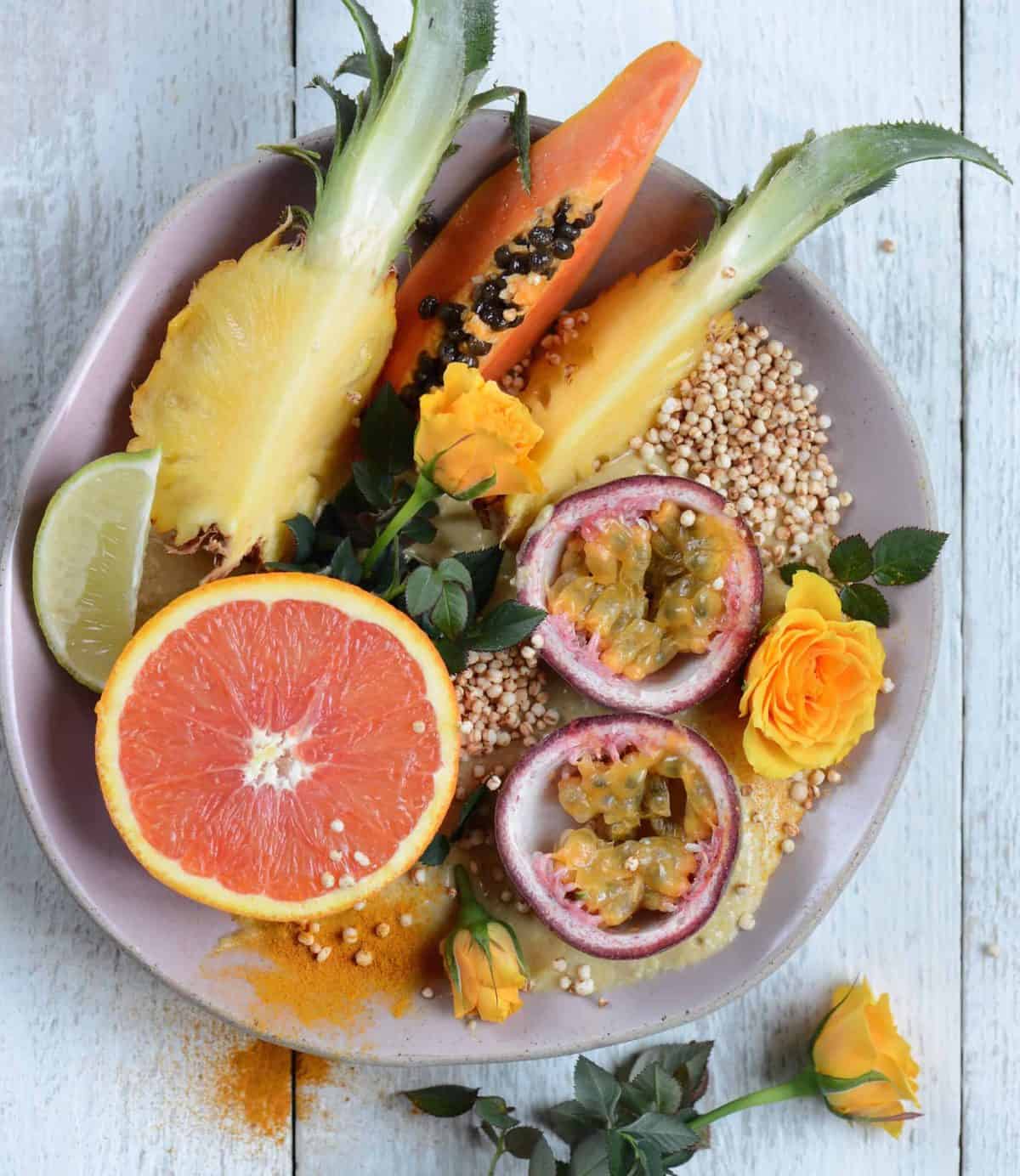
- Whether fresh or frozen, papaya can be added to smoothie recipes for a wonderful tropical flavour and health benefits.
- Papaya can be added to these homemade 100% fruit Healthy Rainbow Fruit Lollies.
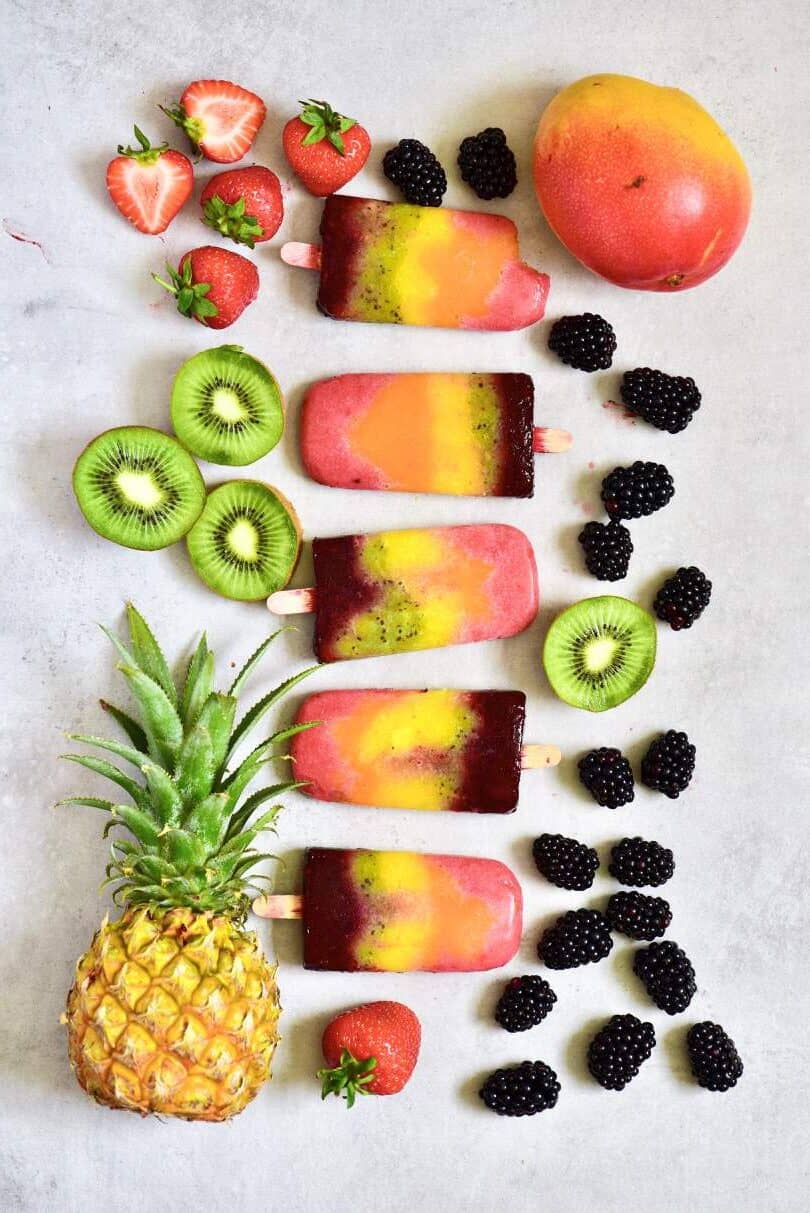
- Papaya can also be baked, for a unique dessert
19. Kiwi
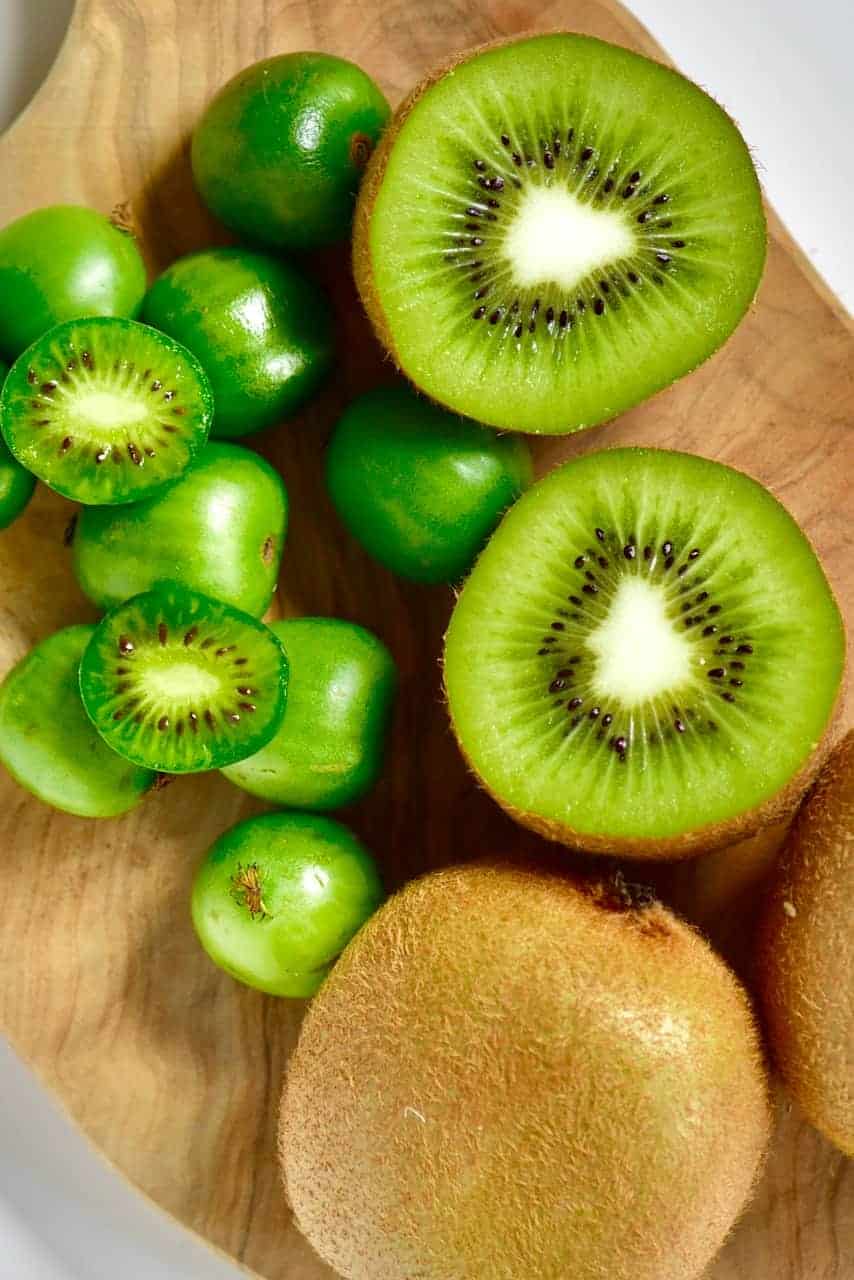
At this point I probably sound a bit like a broken record – but Kiwi are another wonderful source of Vitamin C. In just one cup of kiwi, you get 273% of the daily recommended value. More than that, kiwi also contains Vitamin K, potassium, folate, fibre and a significant amount of antioxidants.
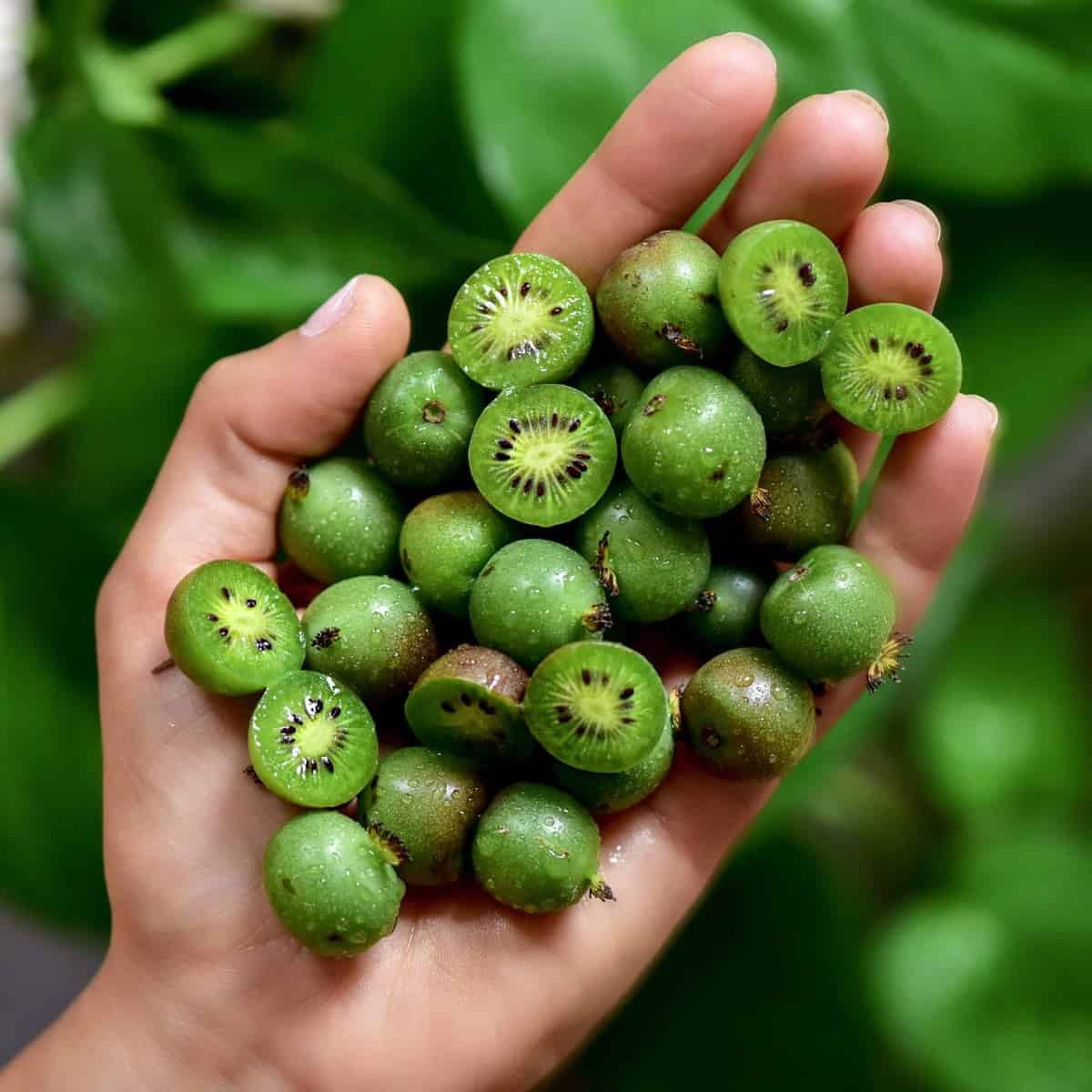
In fact, kiwi can protect your DNA from oxidative damage, with anti-cancerous effects. Plus, kiwi seeds contain alpha-linoleic acids and omega-3 fatty acids, which are beneficial for heart health.
How To Add Kiwi To Your Diet:
If you follow me on Instagram then you’ll notice that Kiwi regularly shows up on my feed. What’s surprising is how this doesn’t translate as much towards my blog recipes. However, I have lots of fun uses for kiwi. For example:
- Let’s begin by saying that kiwi works wonderfully as a snack on it’s own

- Kiwi also works amazingly as a topping for a whole variety of desserts like tarts, swapping our some berries for kiwi in this Eton Mess meringue cake and more.
- Not to mention that kiwi sorbet is super refreshing and can be made really easily at home.
- Also, I love to add kiwi as a topping for breakfast bowls, or on top of and within smoothie bowls.
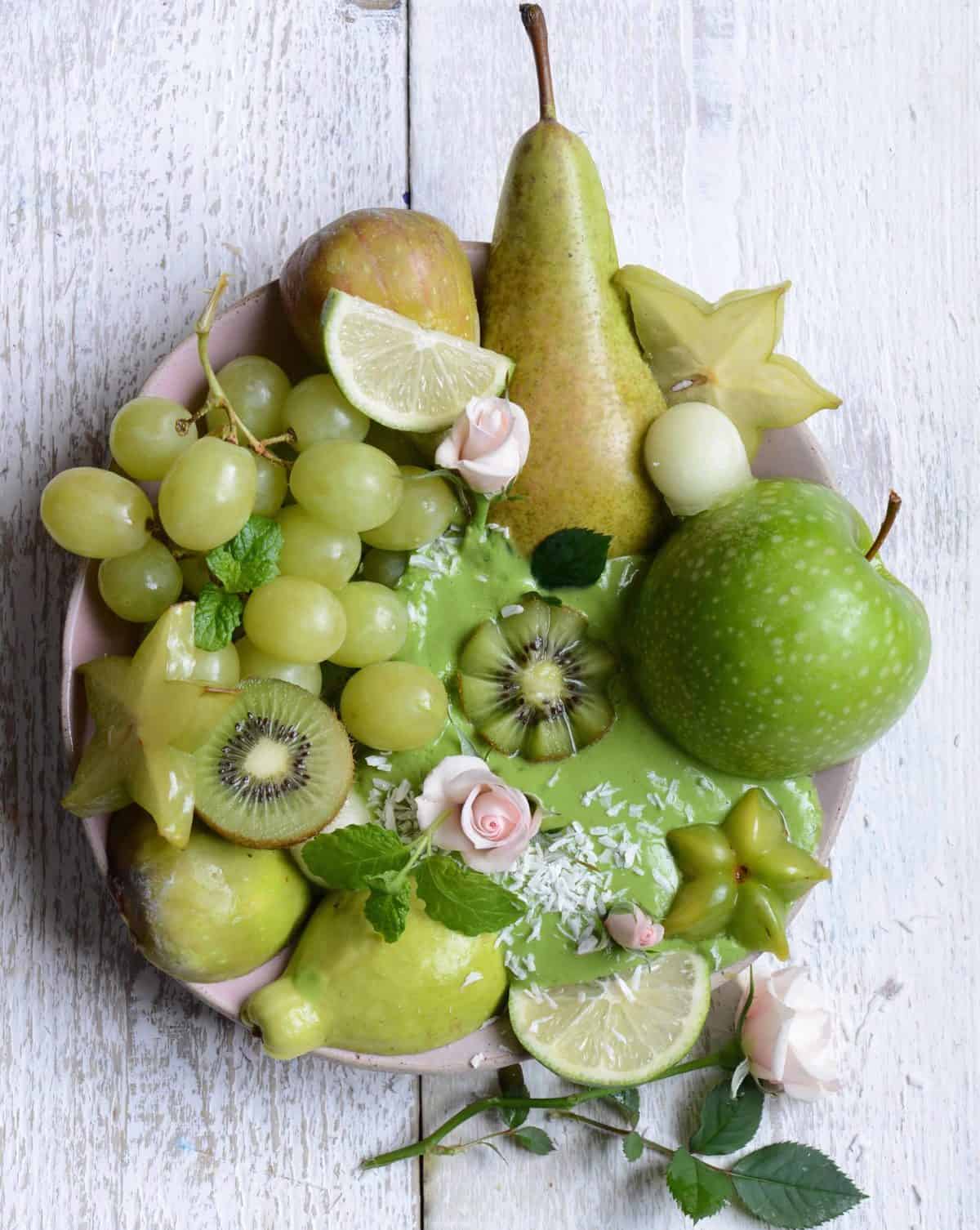
- You can even make a kiwi jam!
20. Fermented food
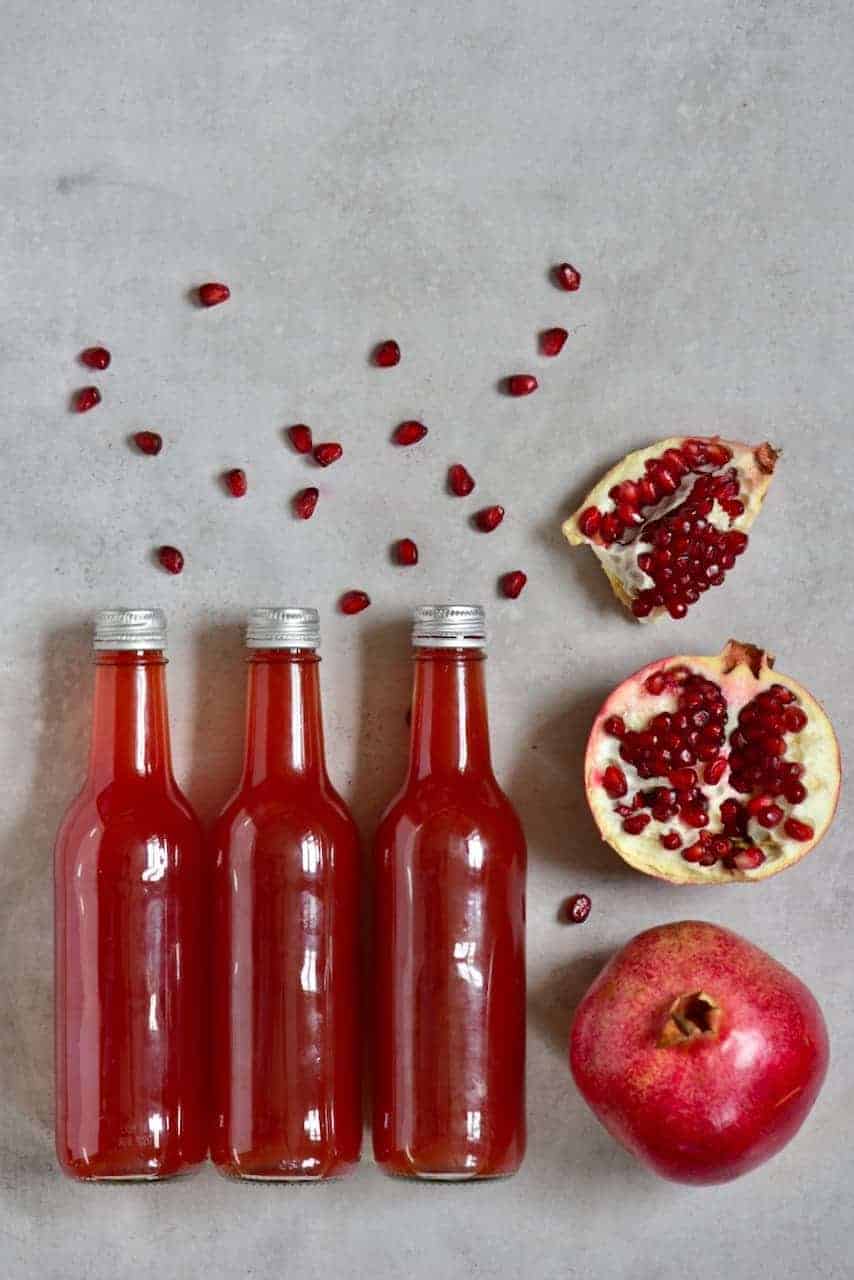
Fermented foods like kefir, kimchi (some varieties) and kombucha have had a massive spike in interest as immune-boosting foods in the last couple of years, as people focus more on their gut health. Fermentation is created when bacteria is introduced to the foods and they are transformed by the growth of the bacteria. This living bacteria can have massive benefits to gut health and a whole variety of health benefits.
Gut health has been linked to overall improved body health, mental health, immune health and more. In fact, studies have shown a clear link between the gut microbiome and immune system as well as metabolic functions.
How to Add Fermented Foods To Your Diet
Fermented foods come in many different products. Unfortunately, not all ‘cultured’ supermarket products actually contain live organisms (or ones that will survive to reach your stomach). So while you can always reach for a bottle of kefir or kombucha in the supermarket, it’s always best to make your own – if possible.
For example, why not give this Homemade Kombucha DIY : Plain & Pomegranate kombucha a try.
Pickled cucumbers, since they are left to ferment for a period of time, also make this list. They are a great snack and also an amazing addition to many dishes especially falafel recipes, so you might enjoy these too – Homemade Easy Pickled Cucumbers.
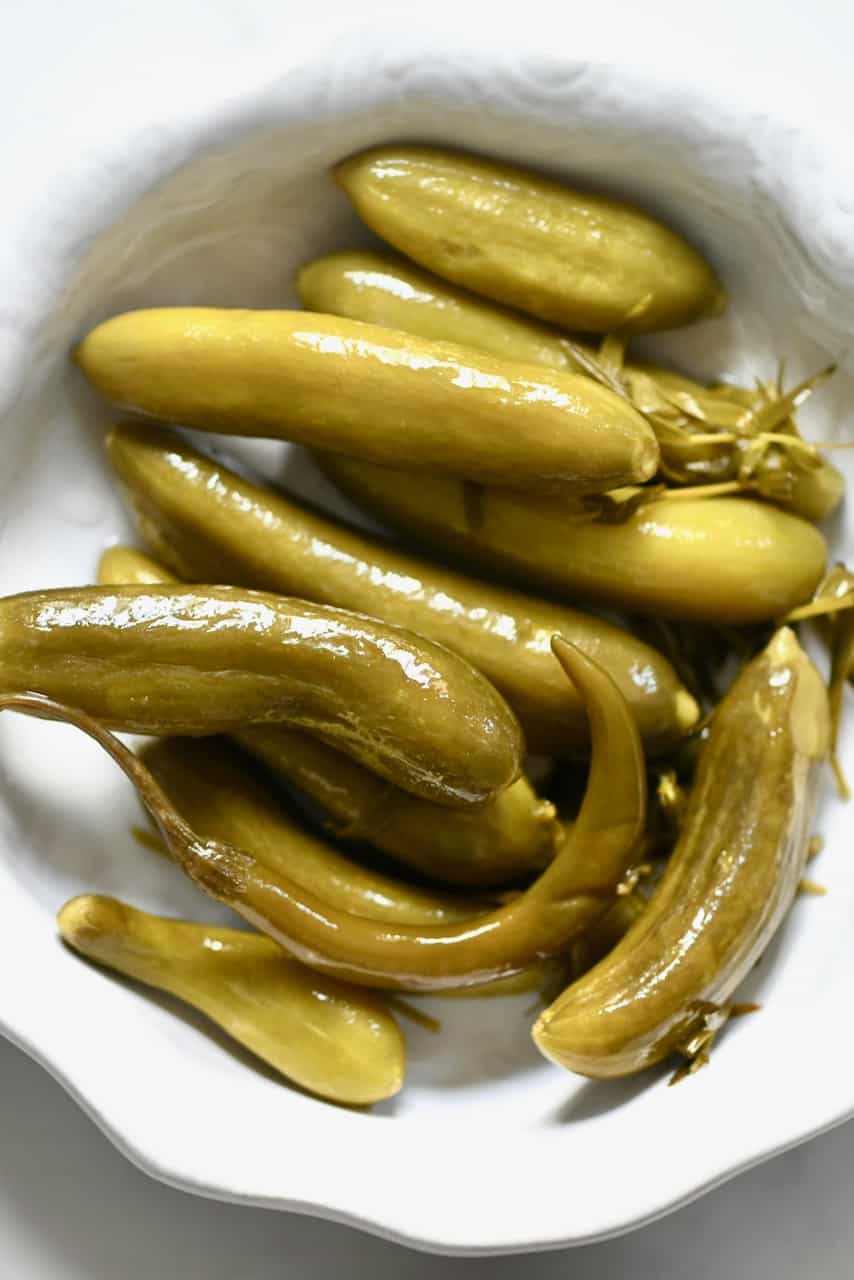
Bonus Entry: Lentils
I almost didn’t add these guys to the immune-boosting food list. But how could I not when they are absolutely loaded with immune-boosting elements. This includes Vitamin B6, iron, Zinc and protein. These combine to fight infections.
Not to mention that combining lentils with vitamin C doubles the amount of iron you absorb from the lentils. Plus, the protein found in lentils can help aid immunity by generating new cells, which aids the immune system.
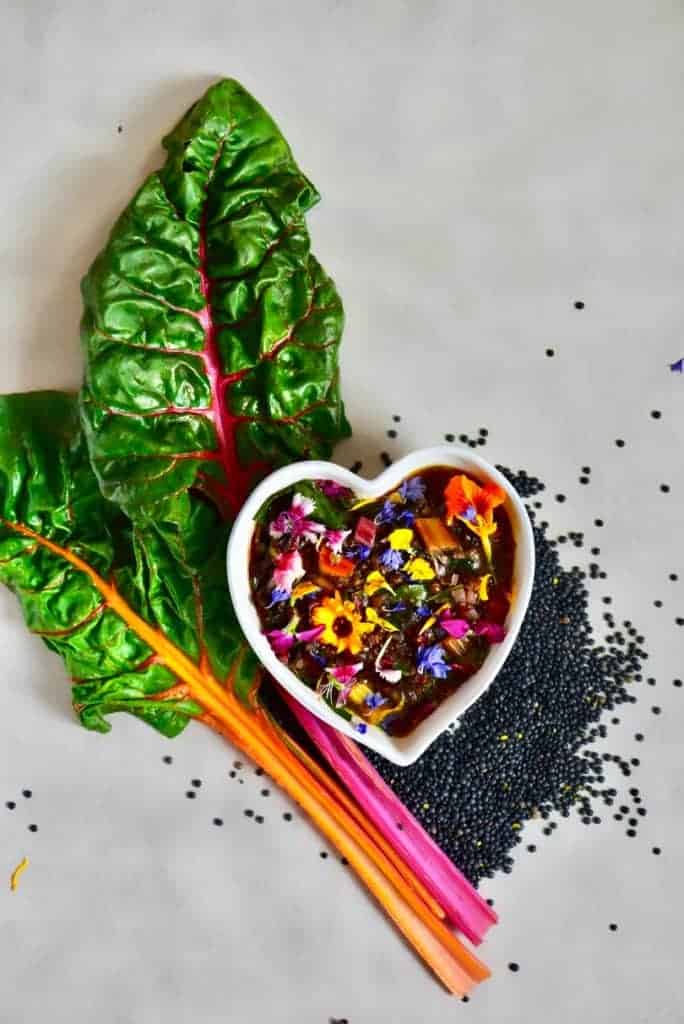
Not to mention that lentils are low in fat, but high in fibre. This is great to keep you satiated for longer and regulate blood sugar levels. Lentils even have anti-cancerous properties and can lower cholesterol levels.
How to Add Lentils To Your Diet:
Lentils (and legumes in general) are super easy to add to a variety of dishes. These include curries, stews, soups, chillies, mixed into rice, salads and more. Give this Healthy Mushroom & Lentil Vegan Meatballs or Healthy Lentil Soup with Rainbow Chard a try. Or even this Simple Vegan Chilli con carne.
In Conclusion
With the list of immune-boosting foods over, I think it’s important to note that one of the best things you can do to keep your immune system strong is to make sure to eat a varied diet of different prebiotics. Doing this will make for a healthy gut microbiome and feed your gut flora.
However, stuffing yourself with immune-boosting foods alone isn’t enough to staying healthy. It’s also best to combine a healthy diet with some light exercise. This can keep your immune system strong by increasing the activity of immune-boosting cells. Not to mention making sure you get enough sleep every night!
If you want tips on how to store your produce for longer then check out my Amazing Food Storage & Fridge hacks to reduce waste and stock up on some freezer bags to store your fresh produce for longer.
More Helpful Round-ups
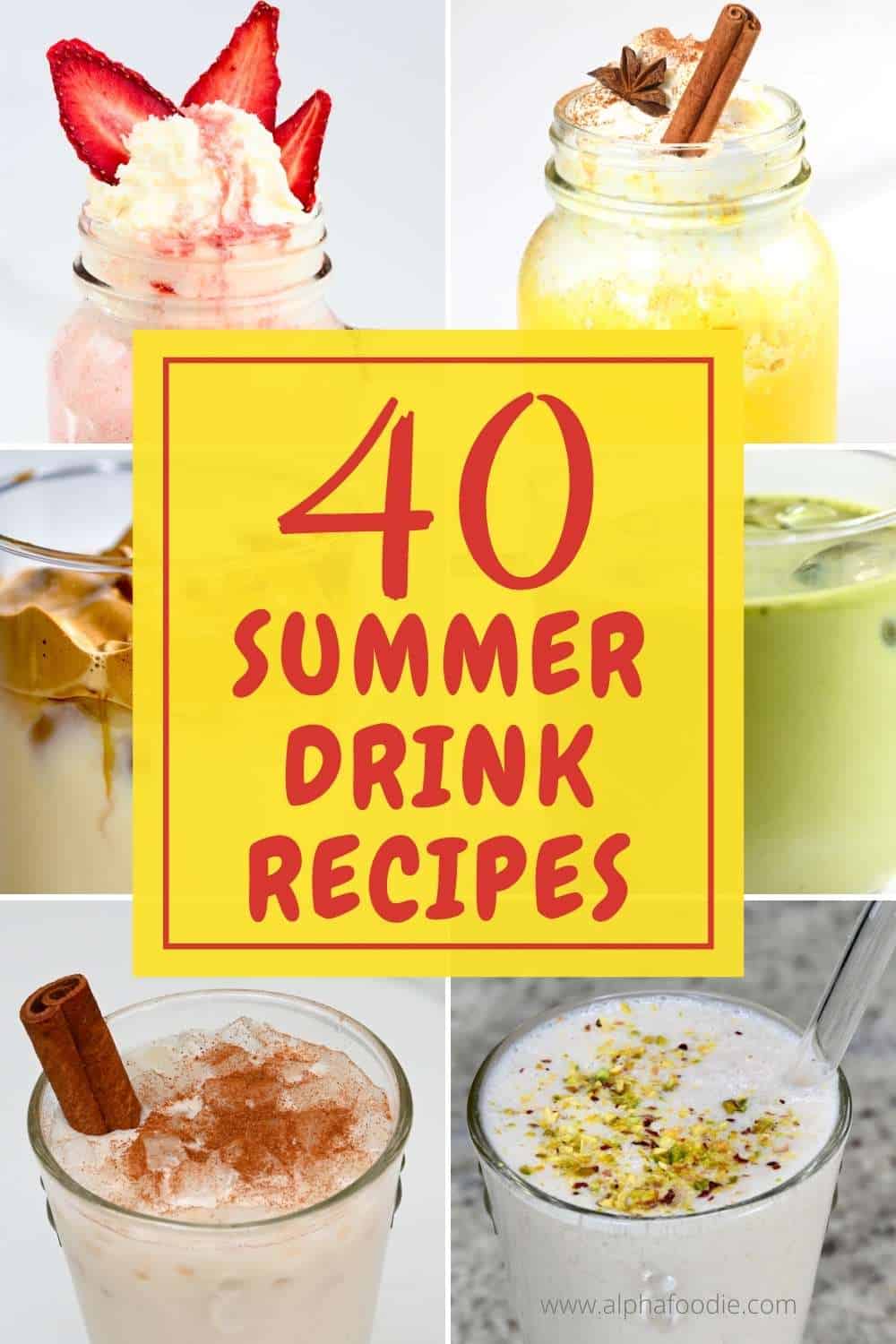
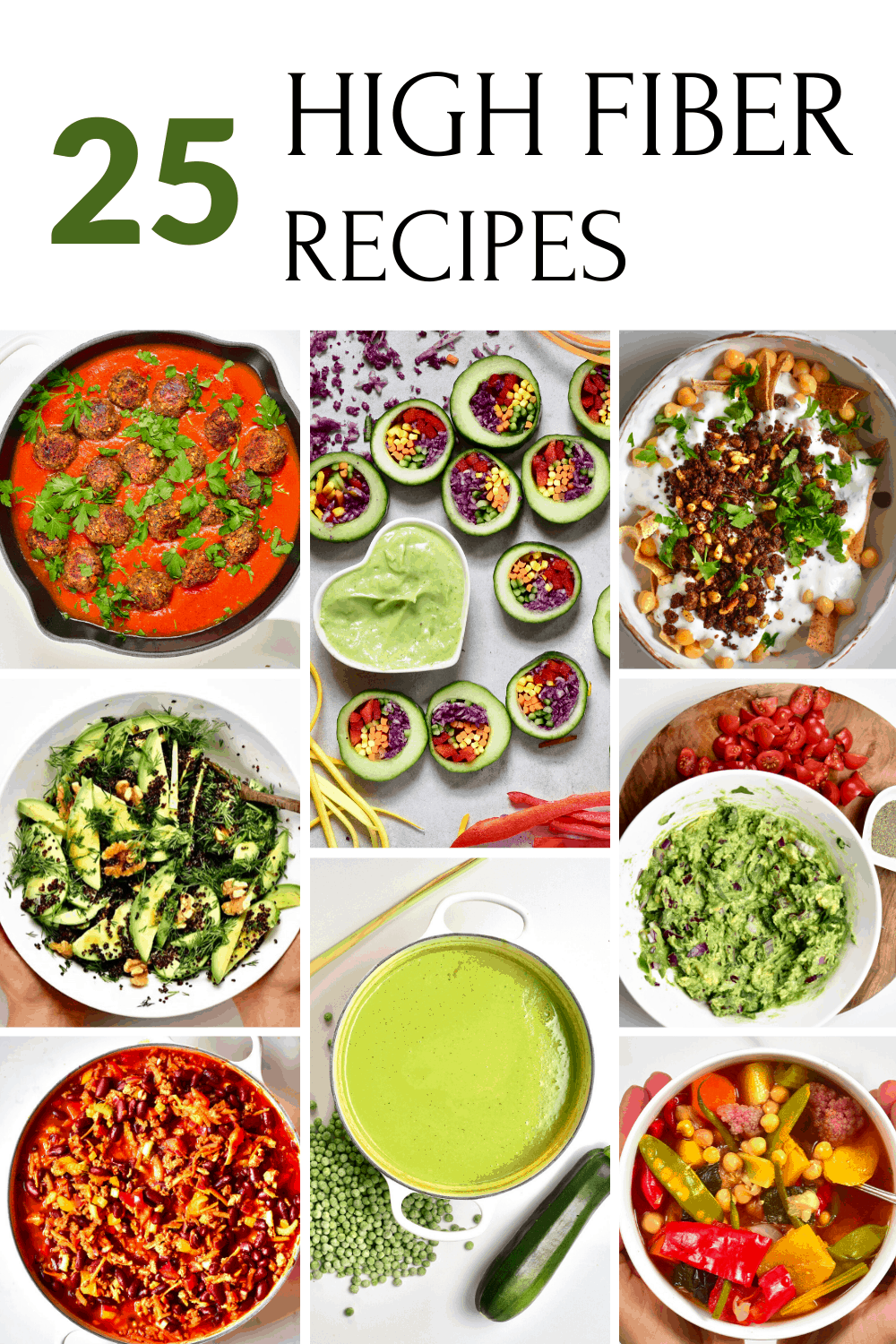
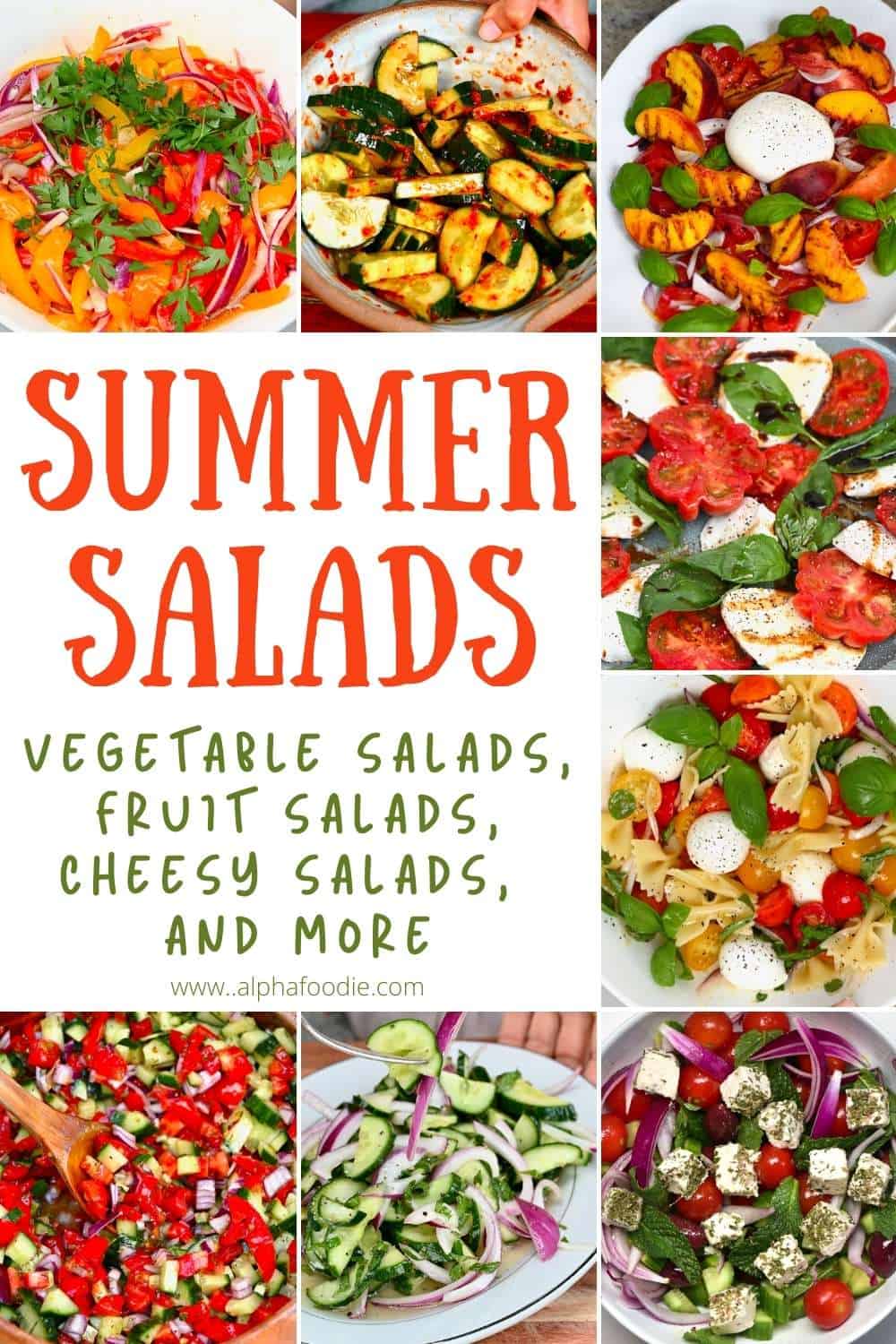
- 40+ Delicious Summer Drink Recipes
- 40+ Ways to Use Ginger
- 25 High-Fiber Healthy Recipes
- 40 Easy Summer Salad Recipes – The Best Summer Salads
- Flavored Water Recipes
- Amazing Food and Storage Fridge/Freezer Hacks
- How to Use Turmeric (Benefits | FAQs | Turmeric Recipes)
- 50+ Healthy Vegetarian Breakfast Ideas
- 20+ Winter Soup Recipes – Easy, Delicious, Comforting
- 30 Best Juicing Recipes
What are your favorite ways to use some of these ingredients? I’d love to hear your thoughts/questions below. Also, feel free to tag me in your recipe recreations on Instagram @Alphafoodie!

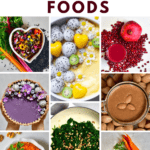
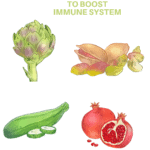
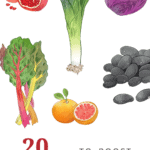
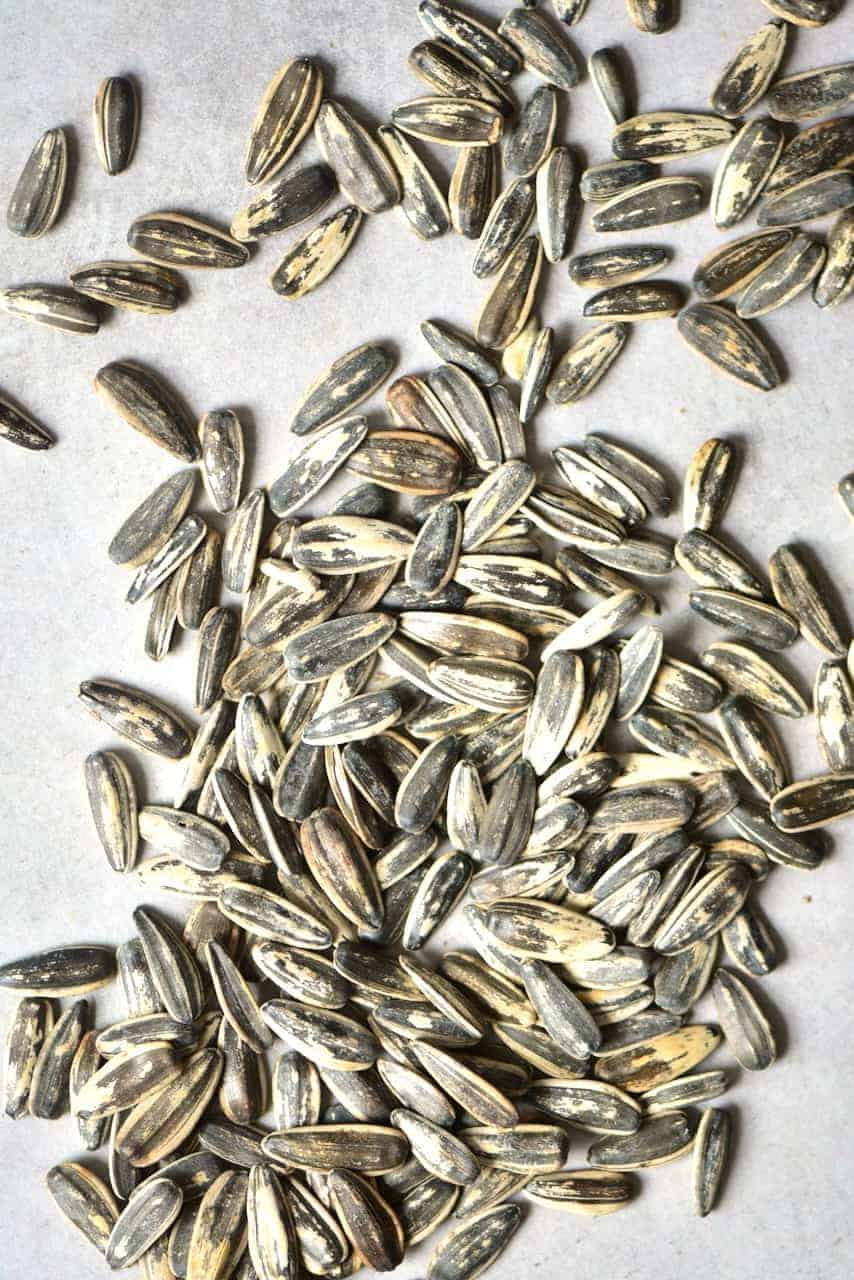









Wow. All the recipe are amazing
Thanks, Esther. I hope you give some of them a try.
This is such a helpful article! Loving all the link recipes.
Thank you for your comment, Kat. Glad you are finding this helpful 🙂
You really never seize to amaze me . I don’t think I ever seen anybody as creative , as focused , as productive, as artistic , as thorough , as simple and as genius as you . Wow ! Chapeau bas .
No words really can do you justice ! What an inspiration
Thank you so much for your comment, Chérine. Your kind words are so encouraging to me.
Hello Samira, such a great and helpful article! ✨✨ Thank you
I always google the information about the food, nutrition etc, but then I always forget it. You put together all what everyone need – to me it’s like a lifetime nutrition manual! On the top, your recipes and stunning photos
But it’s also killing me, because following you is a full time job! I simply want to try all your DIY, recipes, fridge hacks… ♀️♀️
( and I still didn’t check everything…)
Have a great weekend ☀️
Such an informative article! I agree with the point that turmeric has anti-inflammatory properties and helps boost brain health.
Thank you so much for your comment. I hope you give some of the recipes a try, especially the turmeric ones 🙂
Thanks for Sharing this post!
You’re very welcome Alex. Glad you like it!